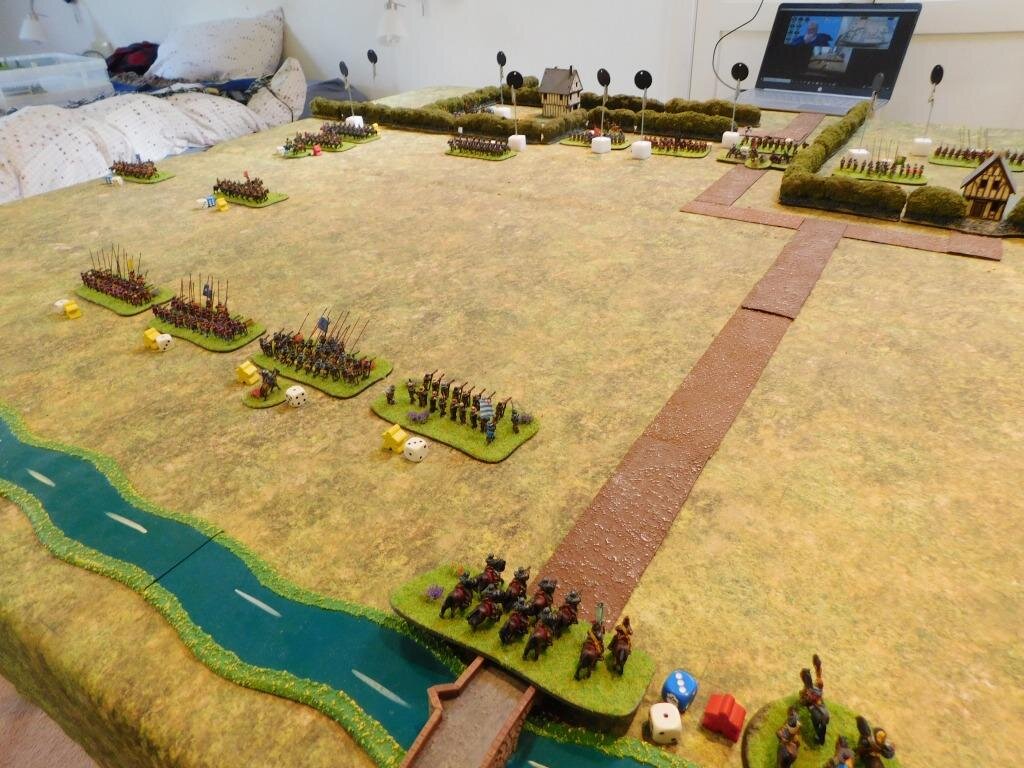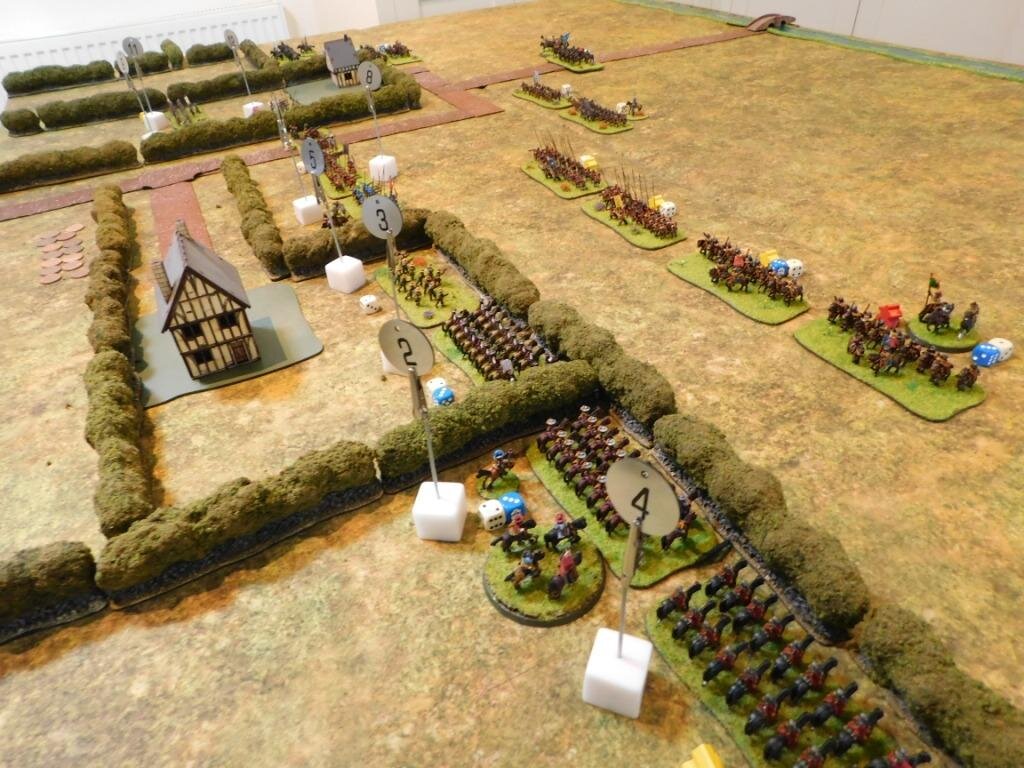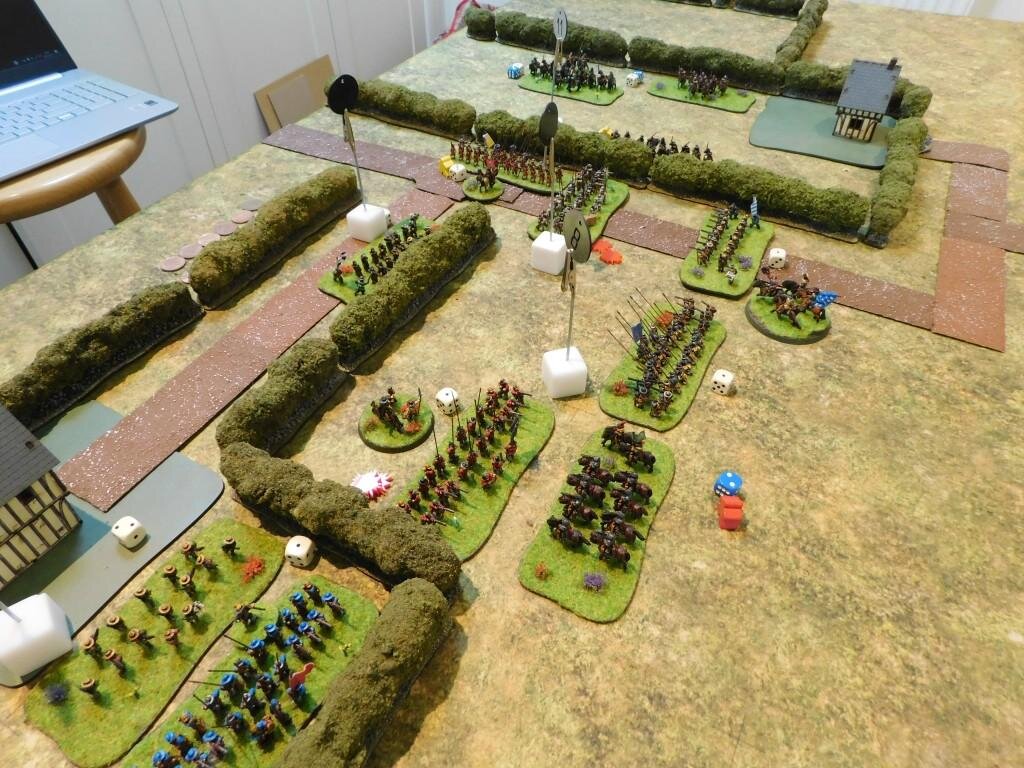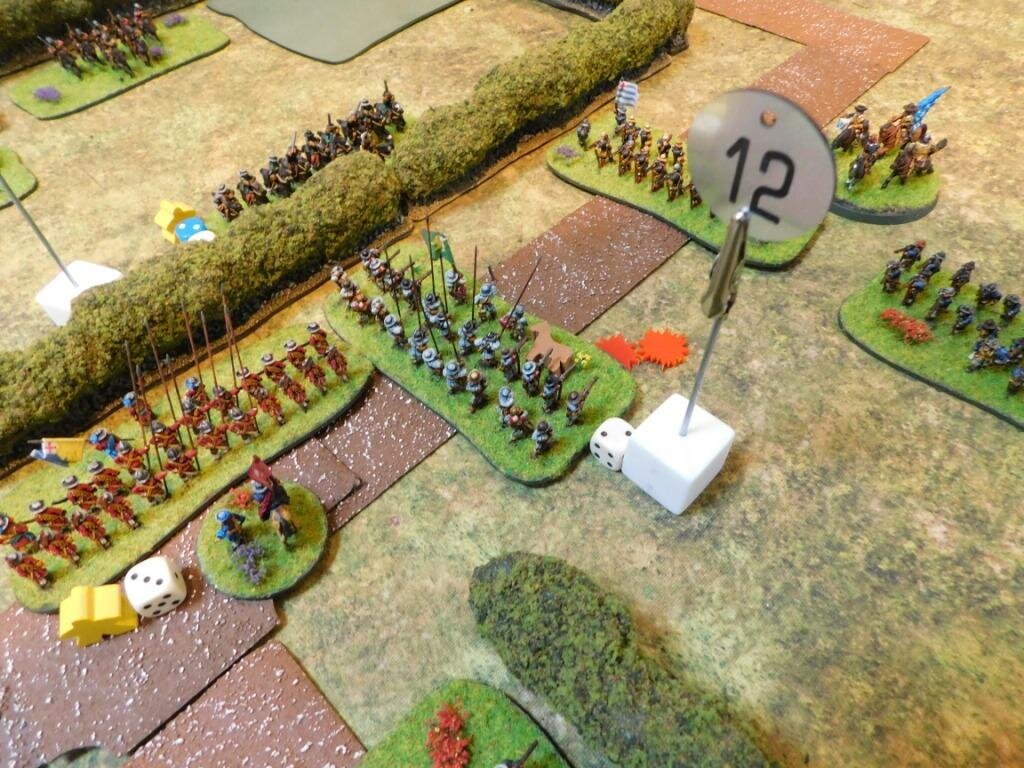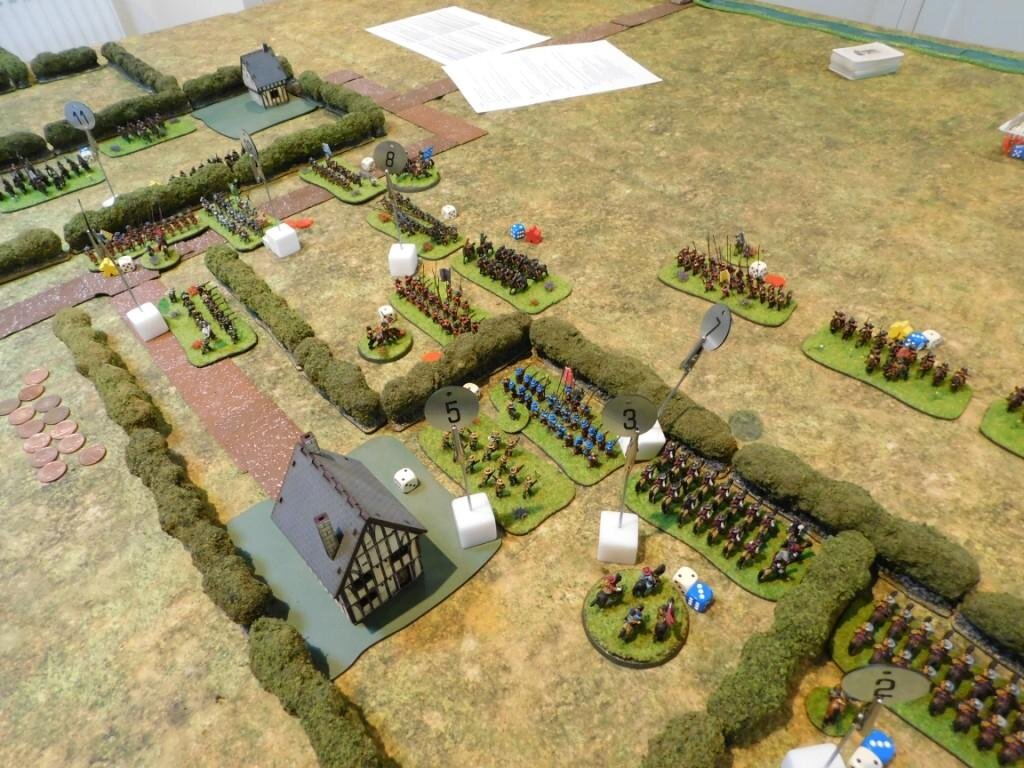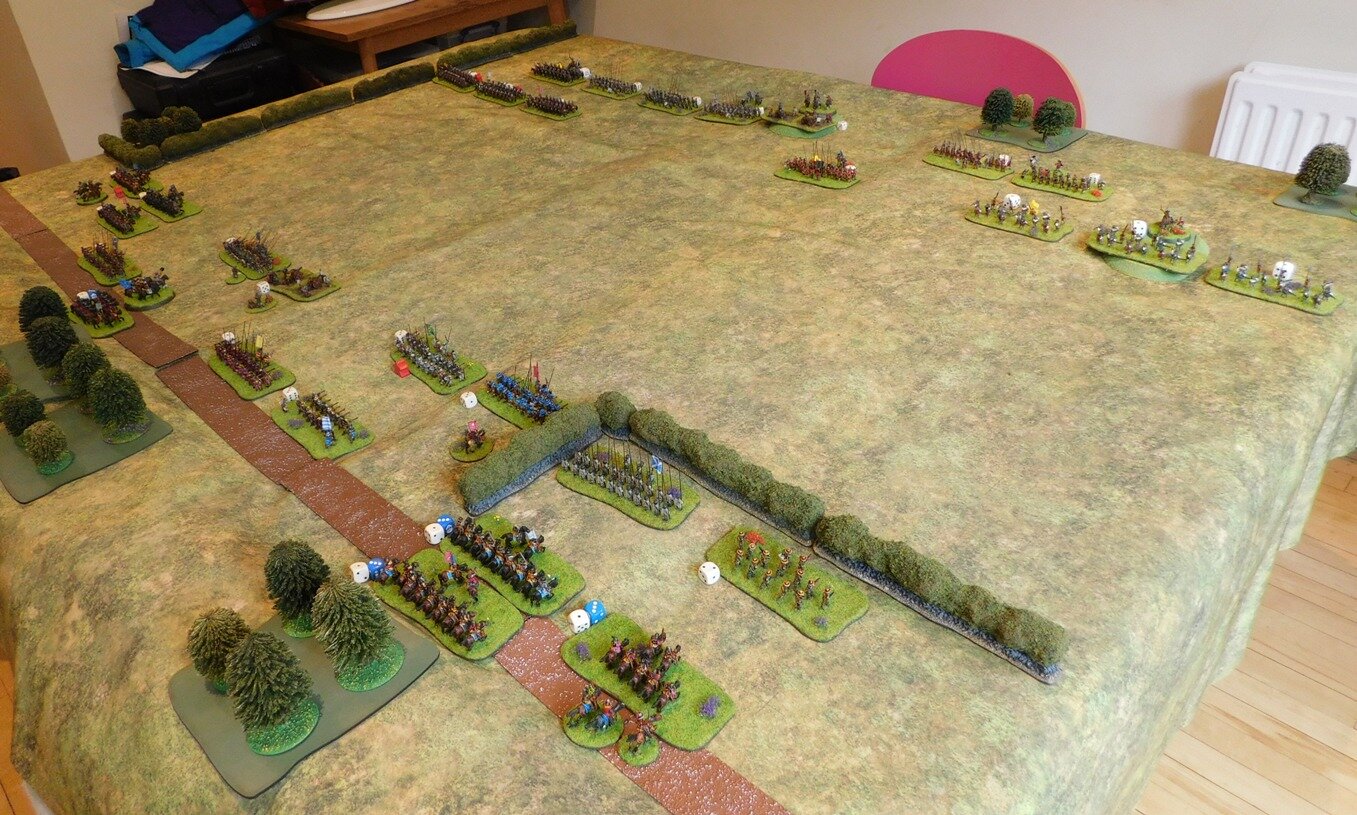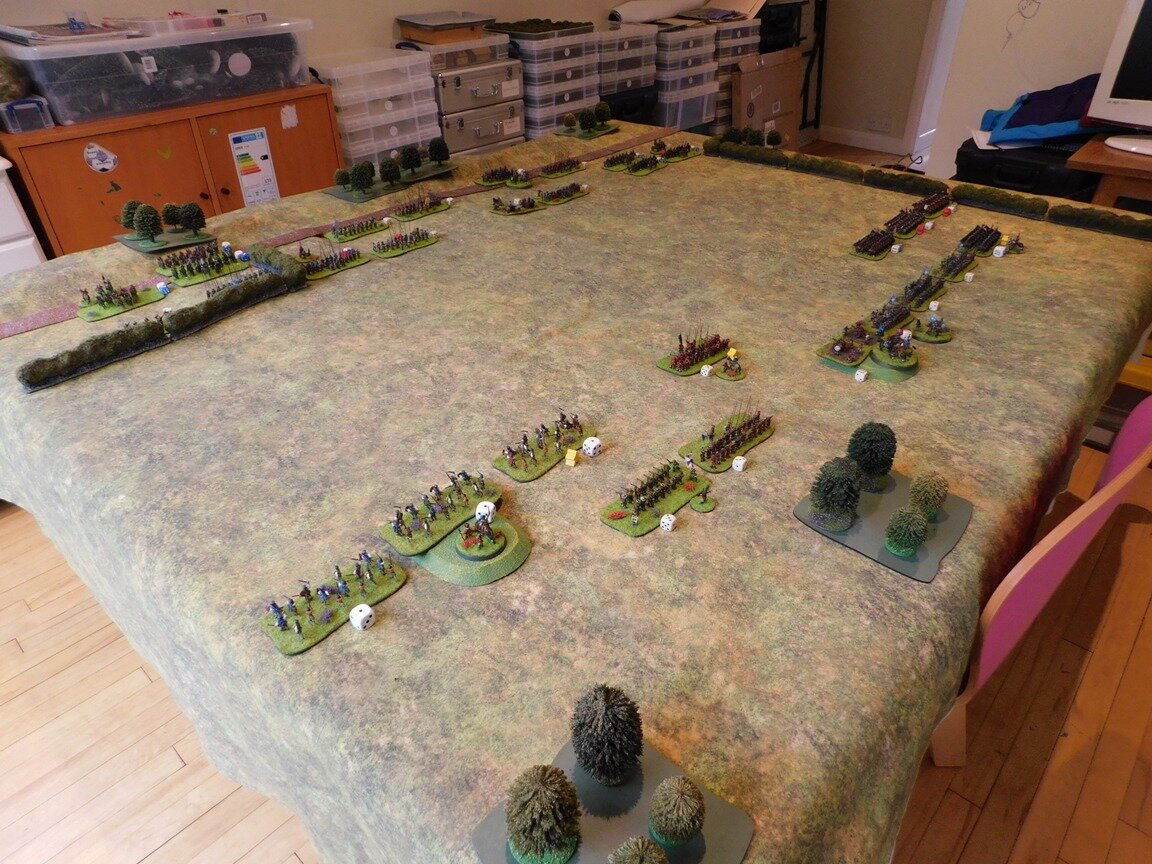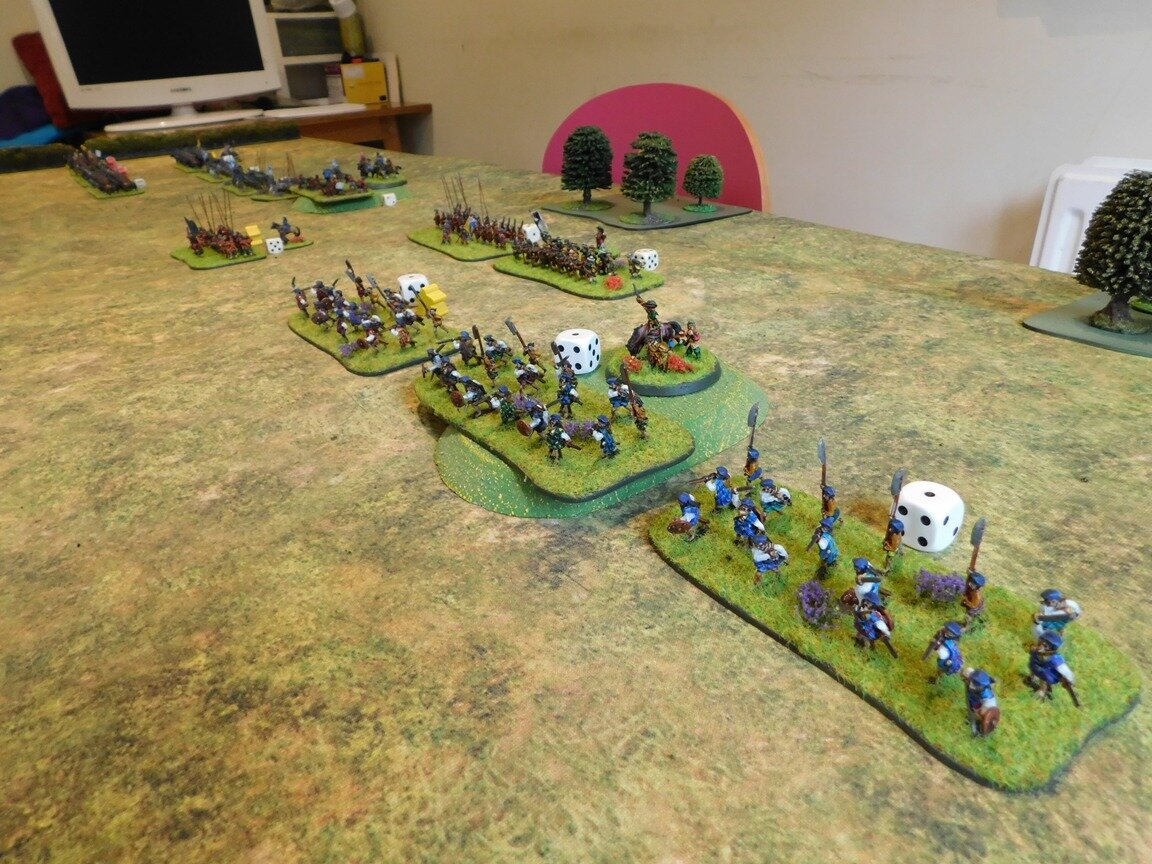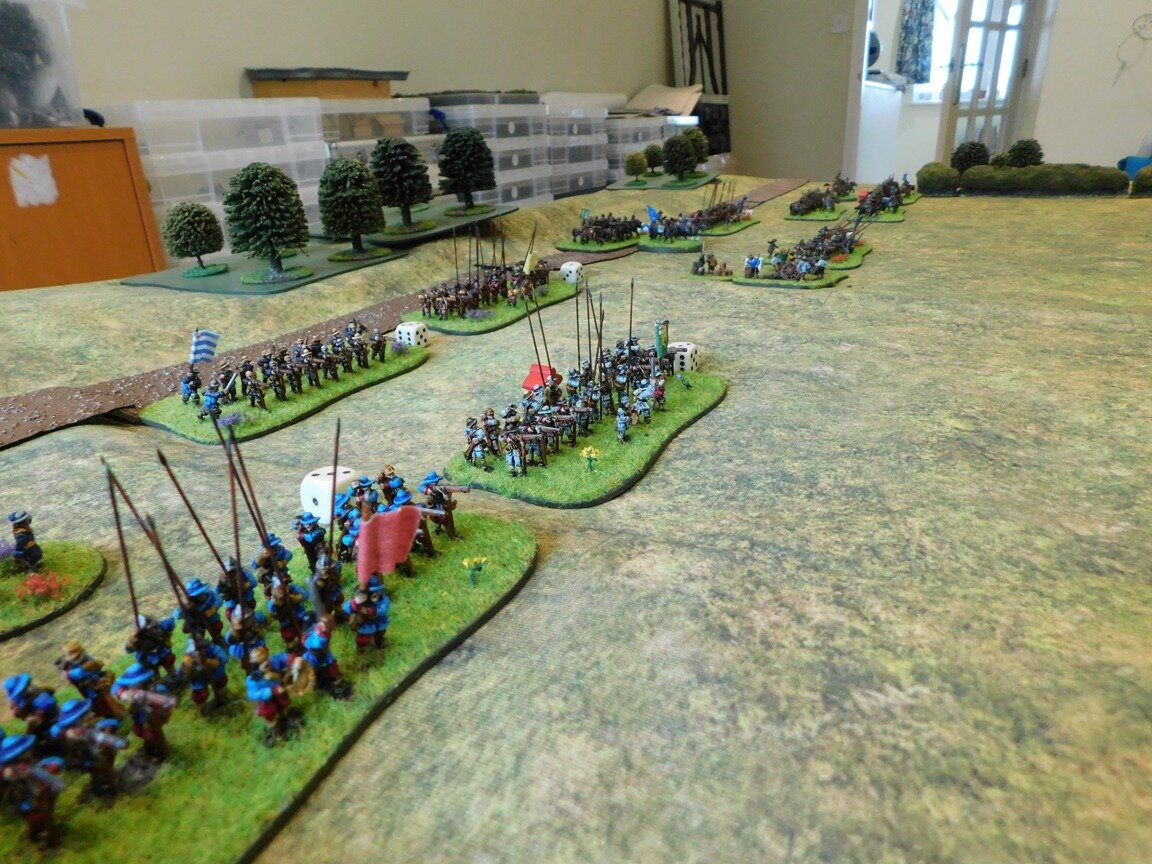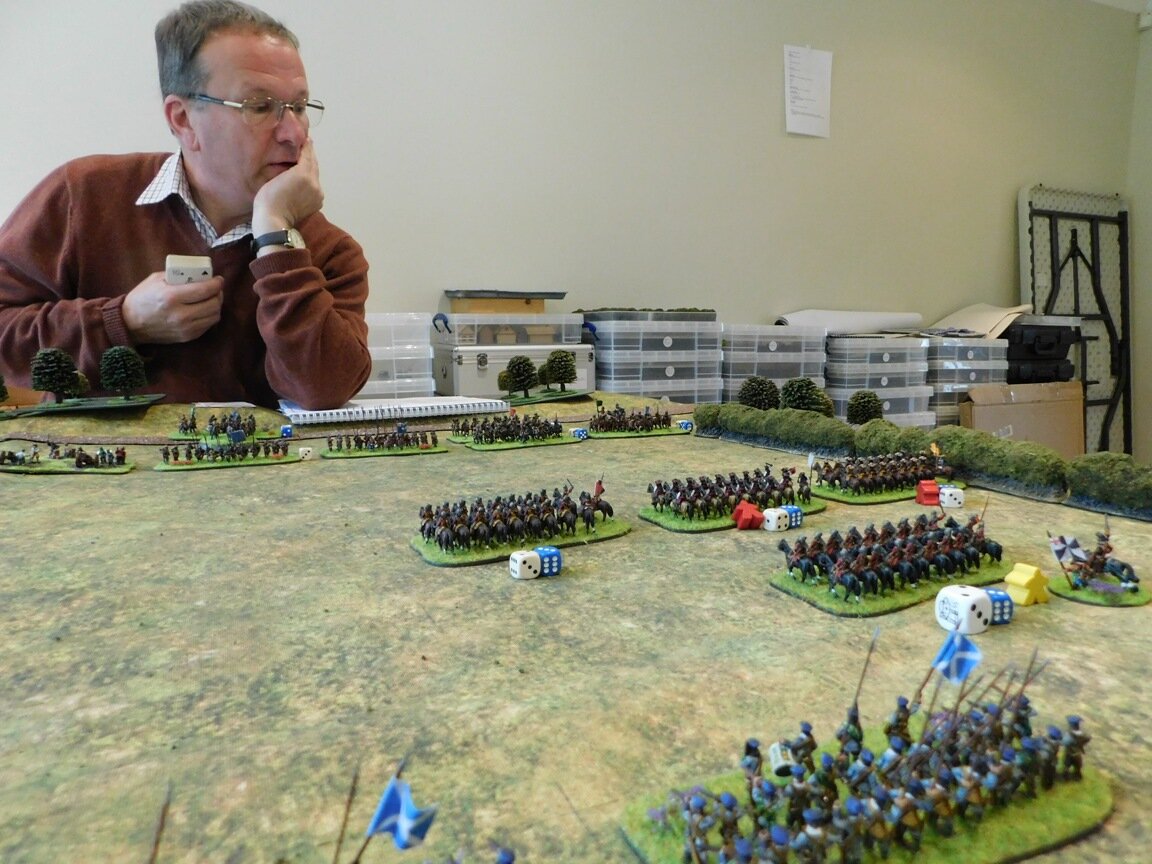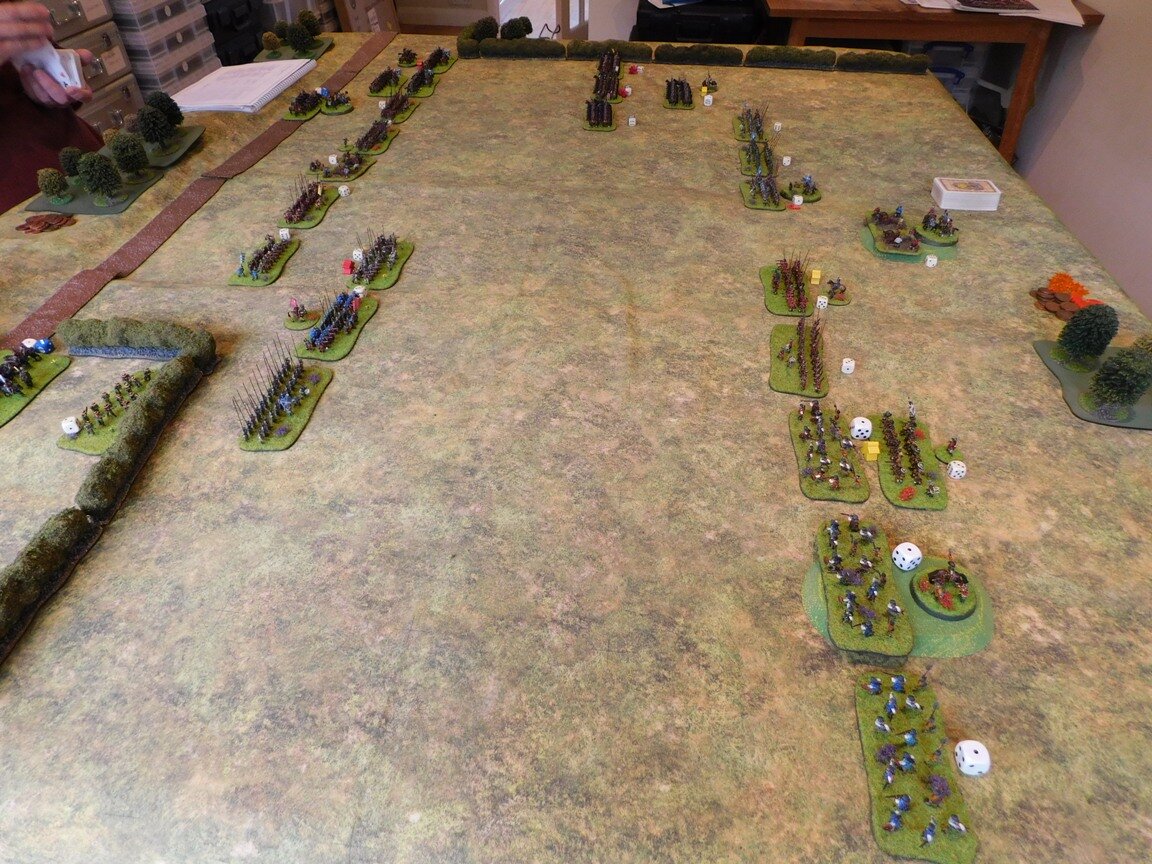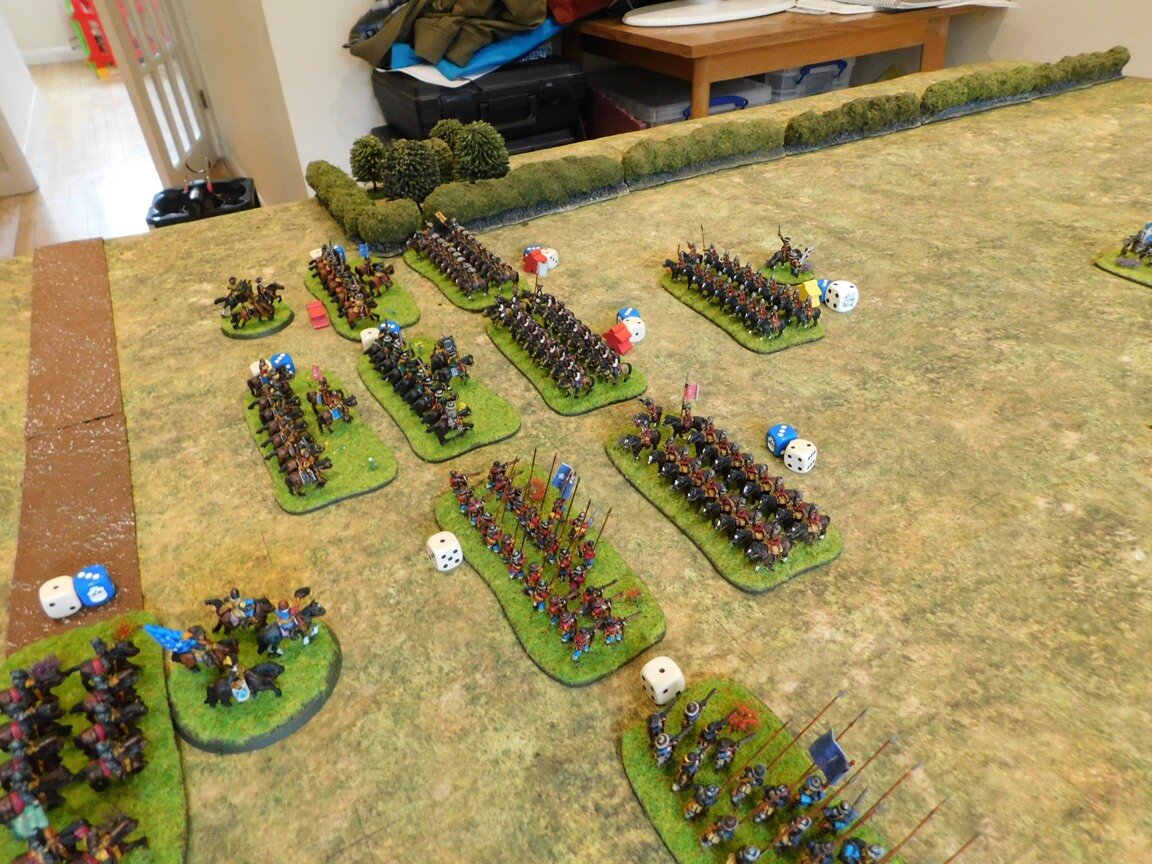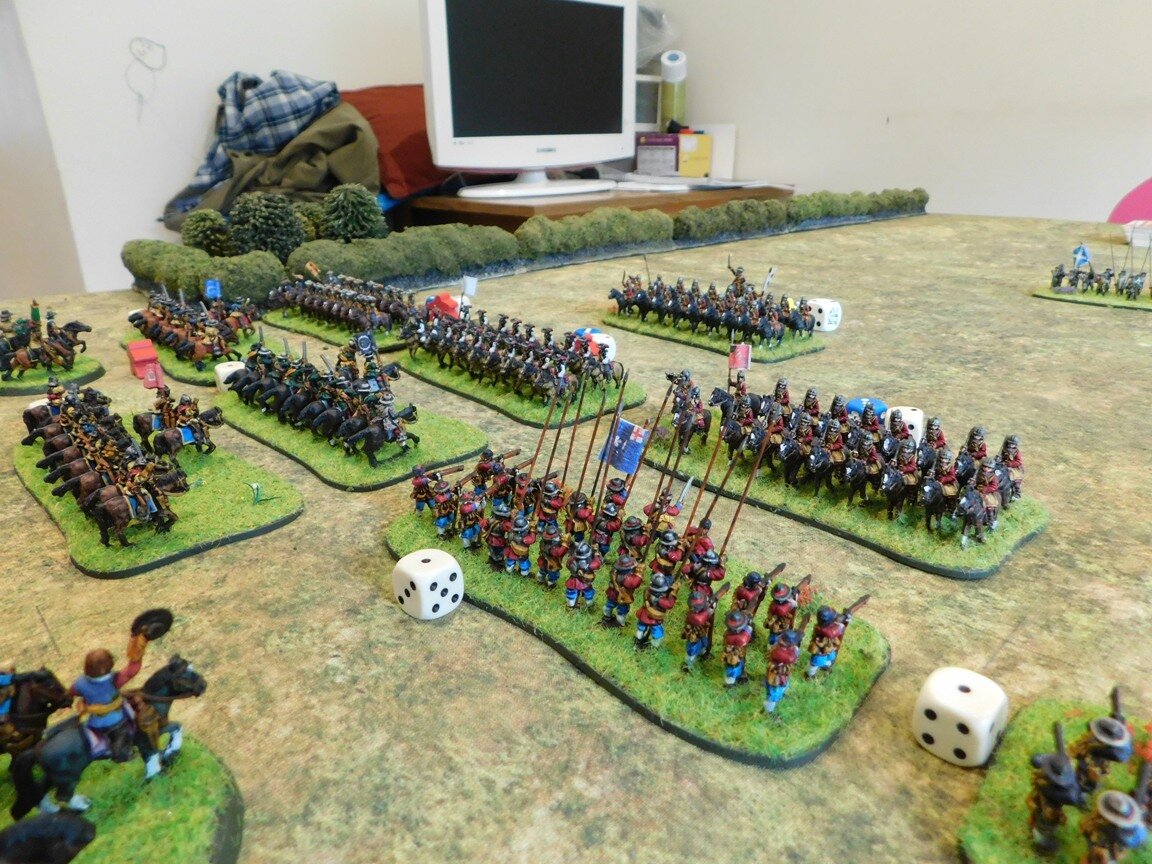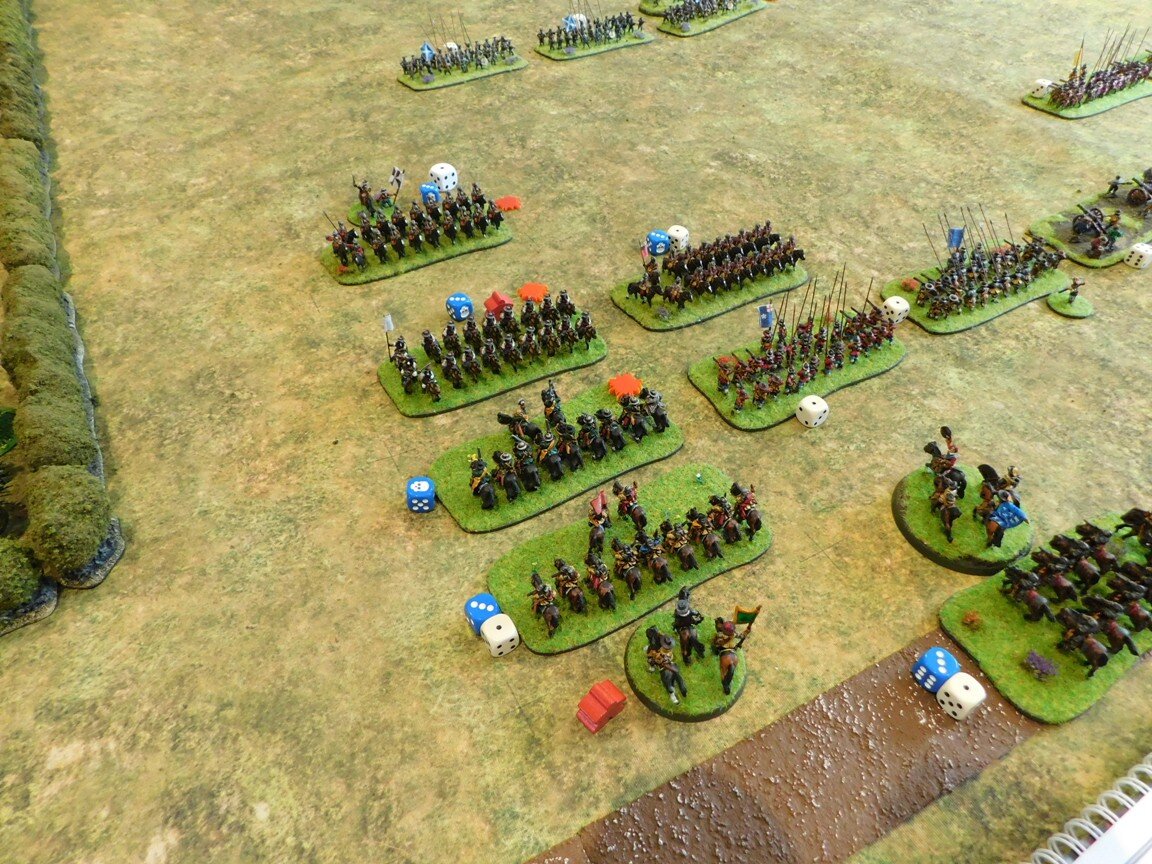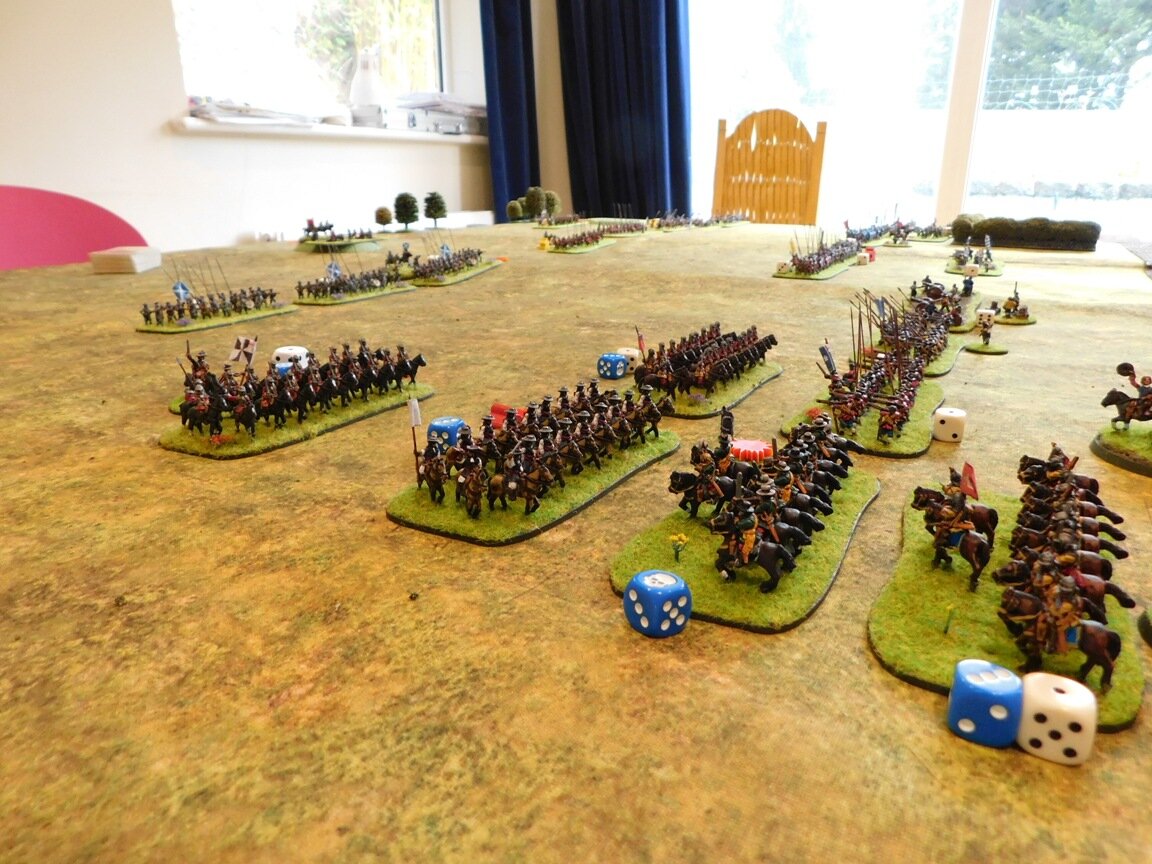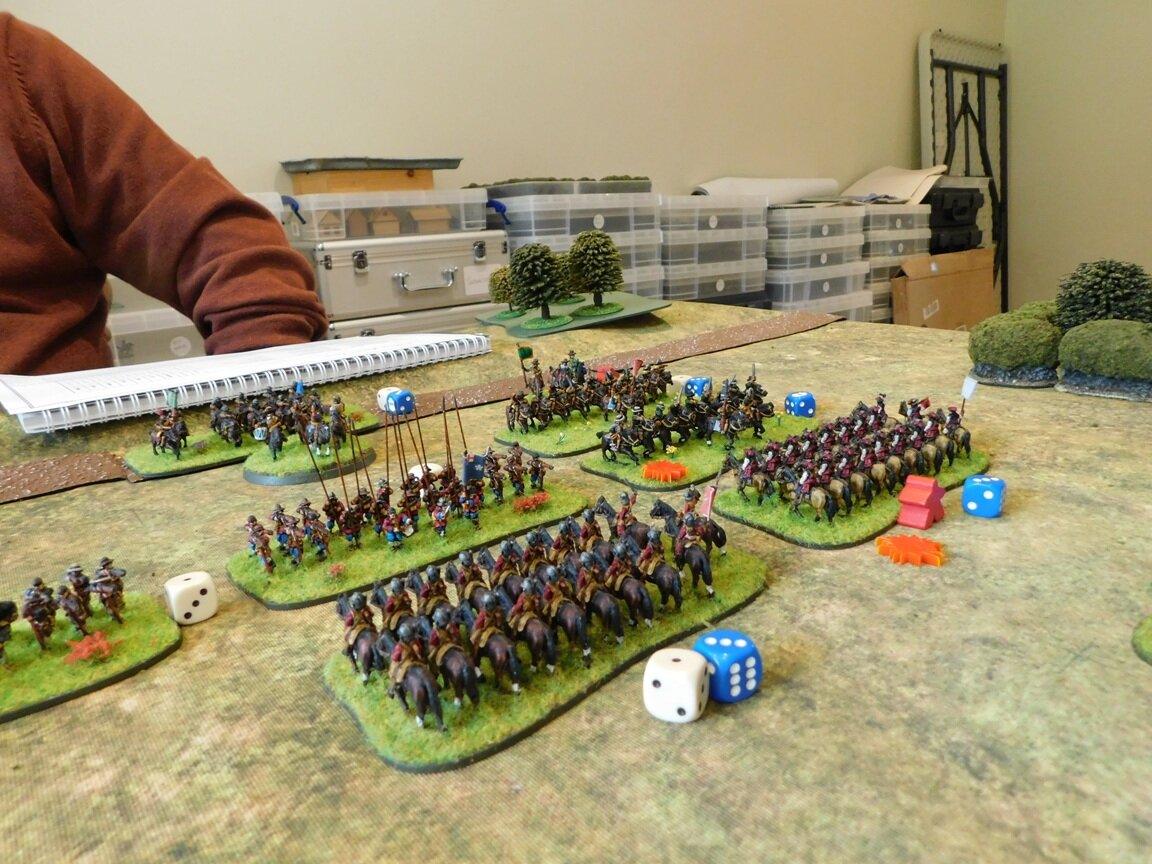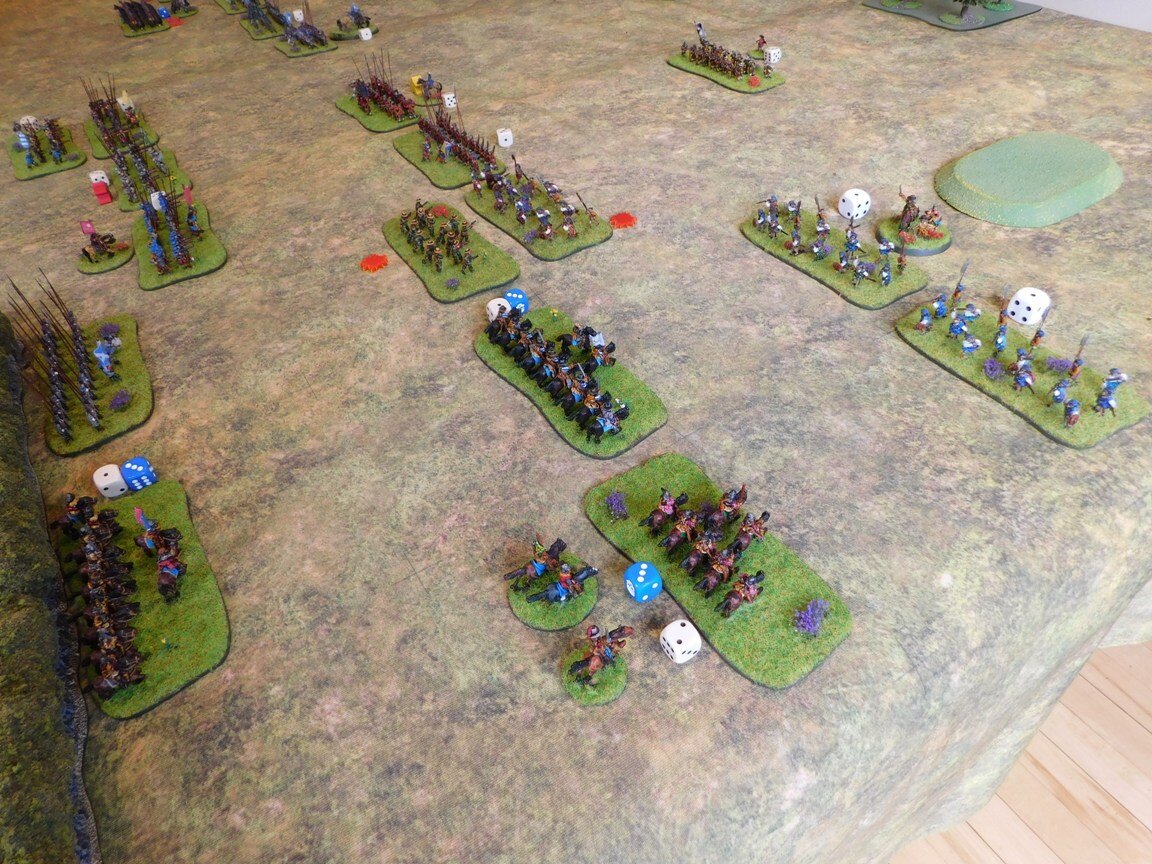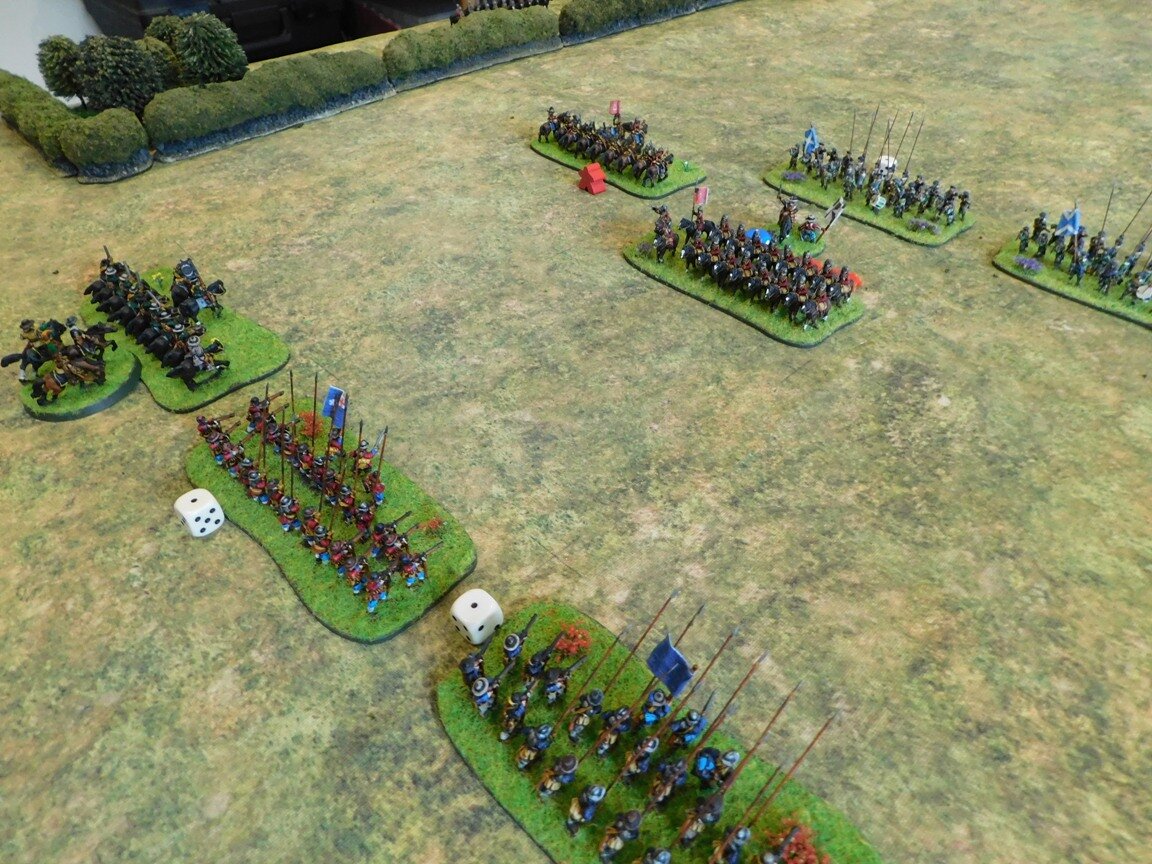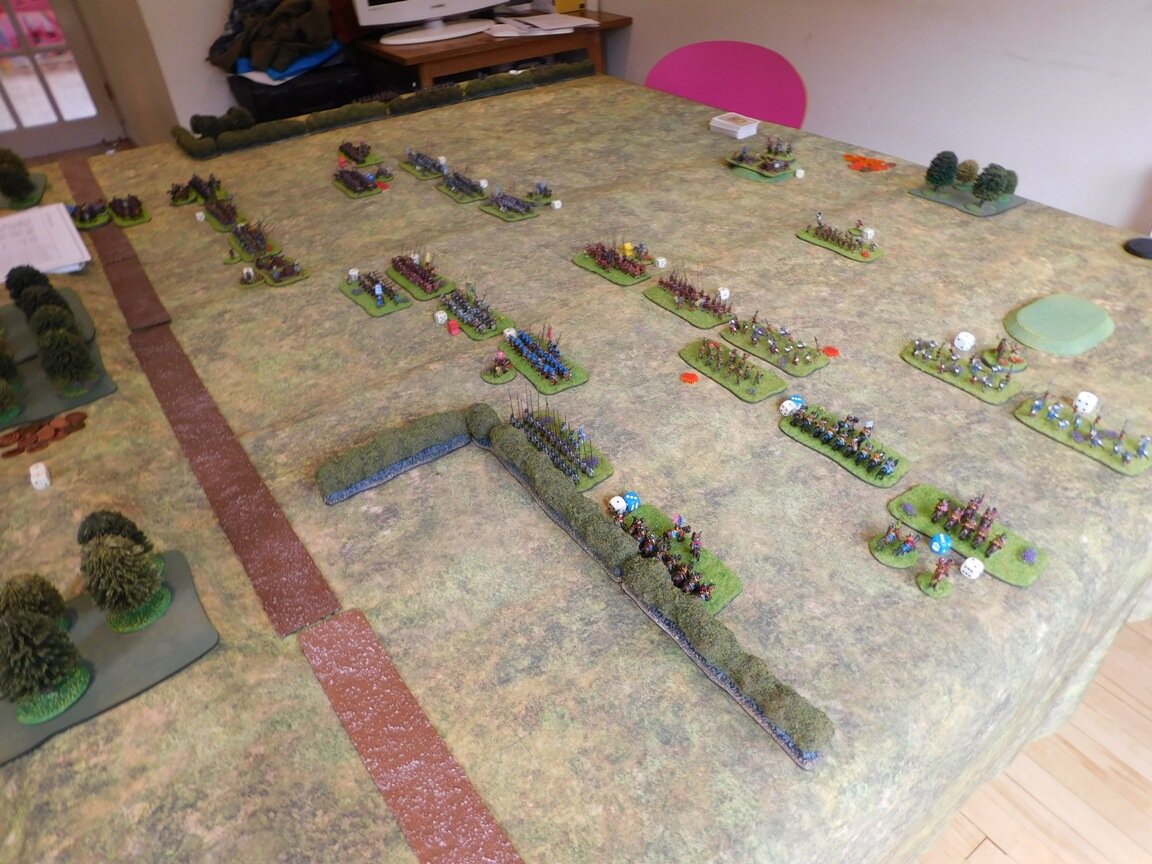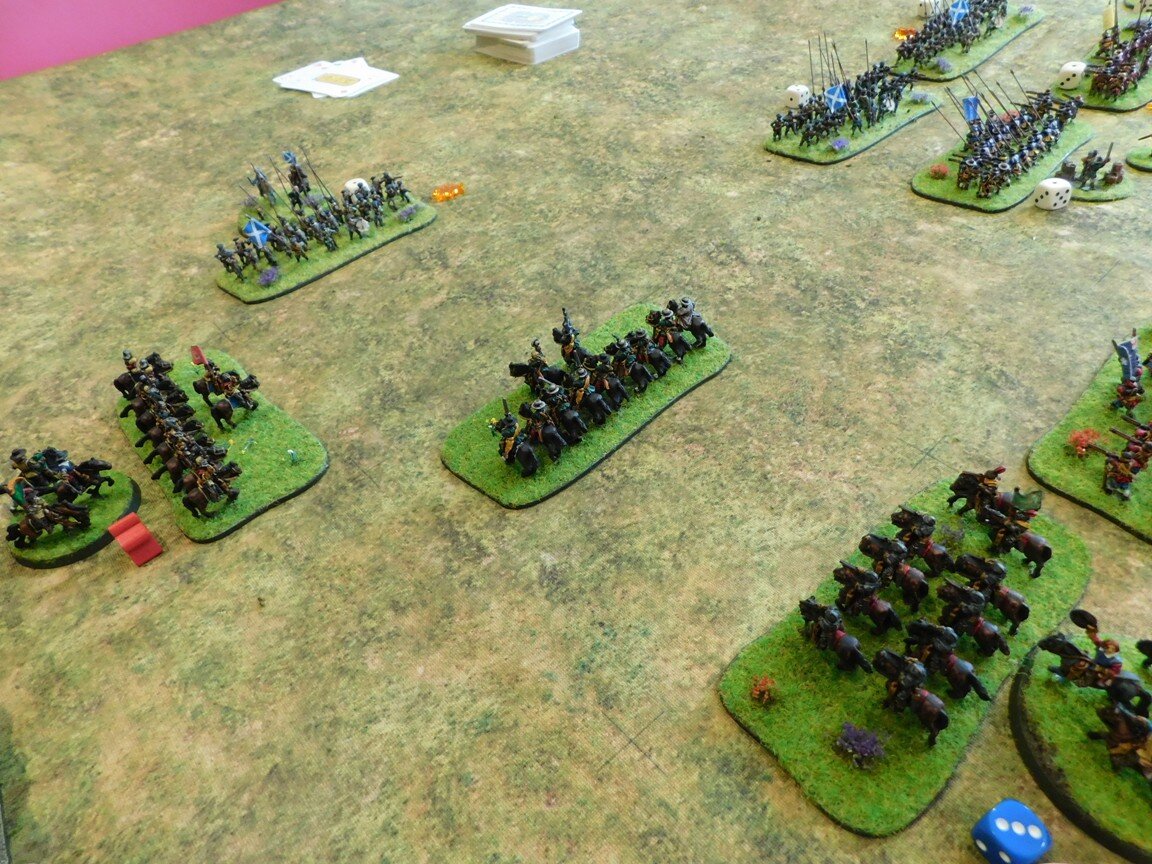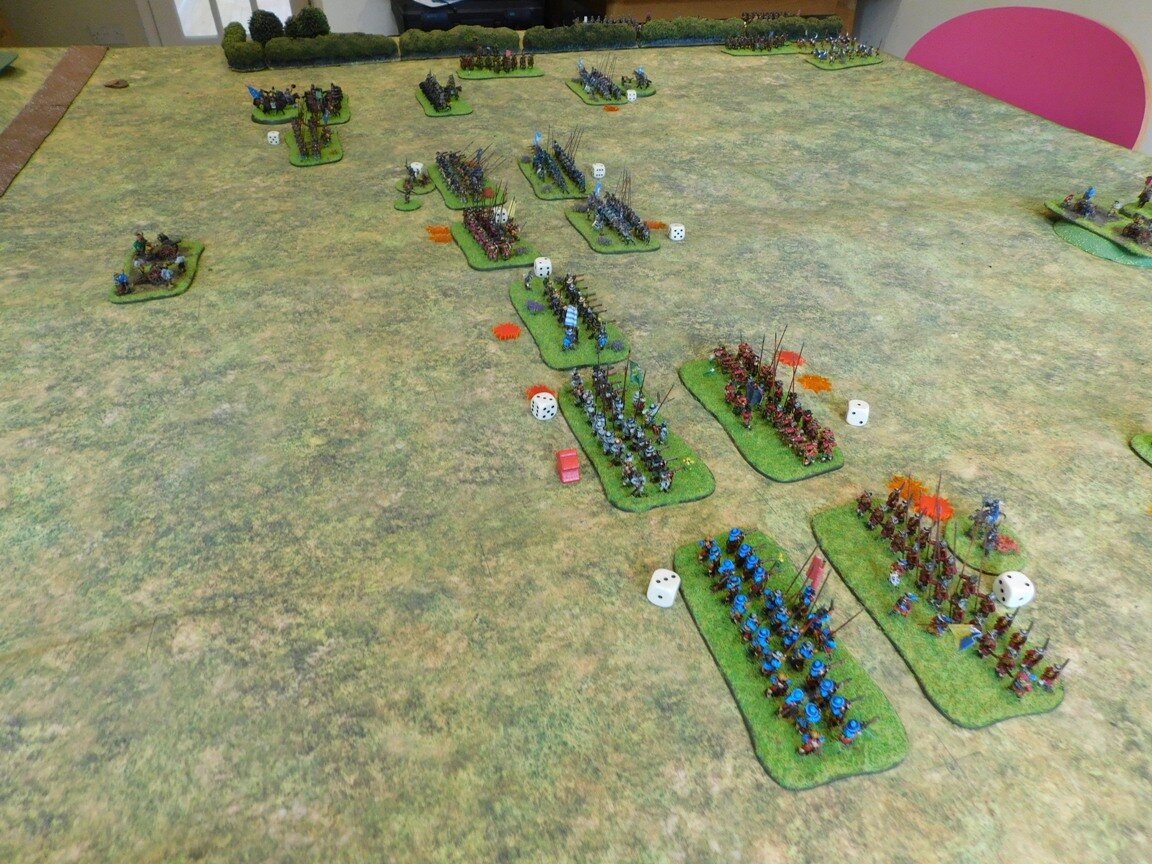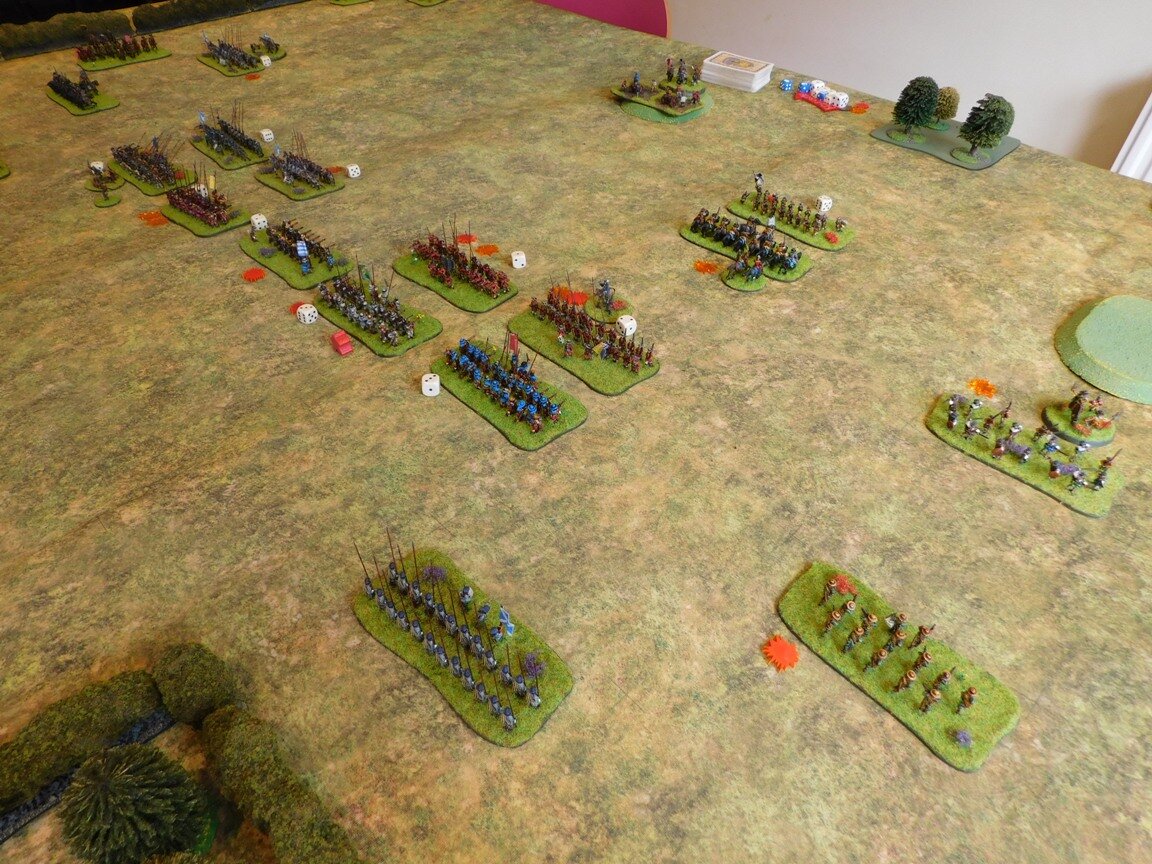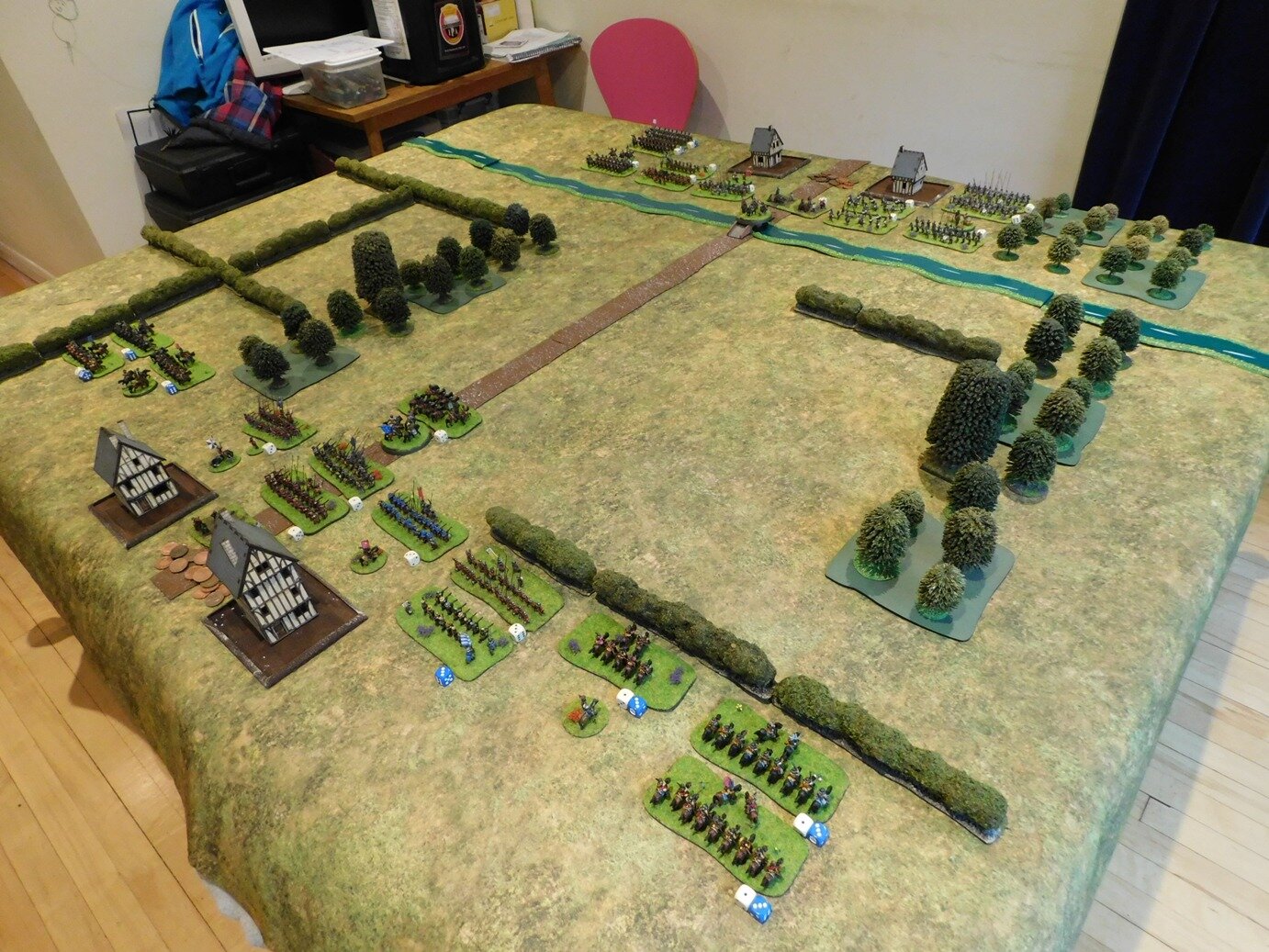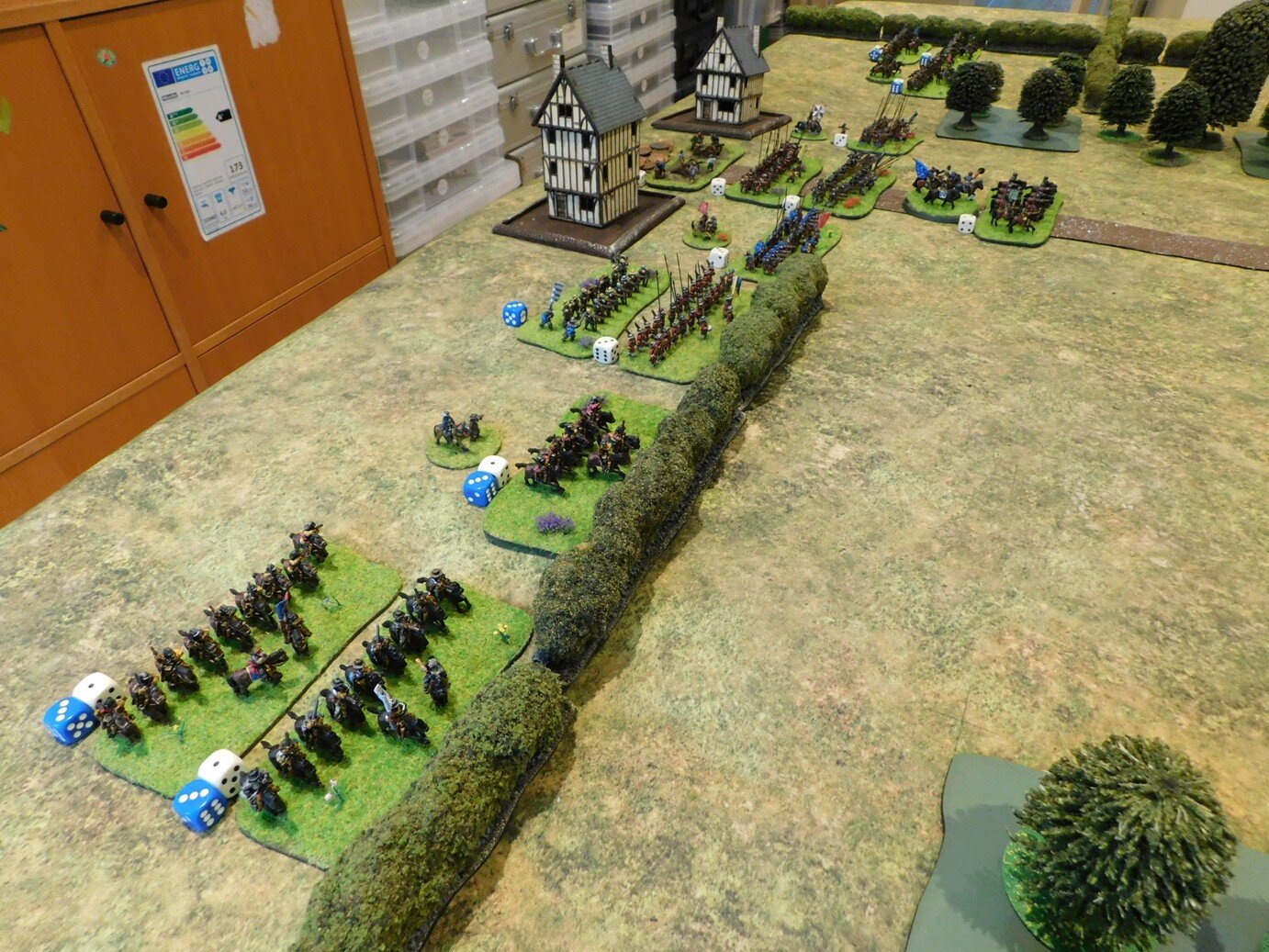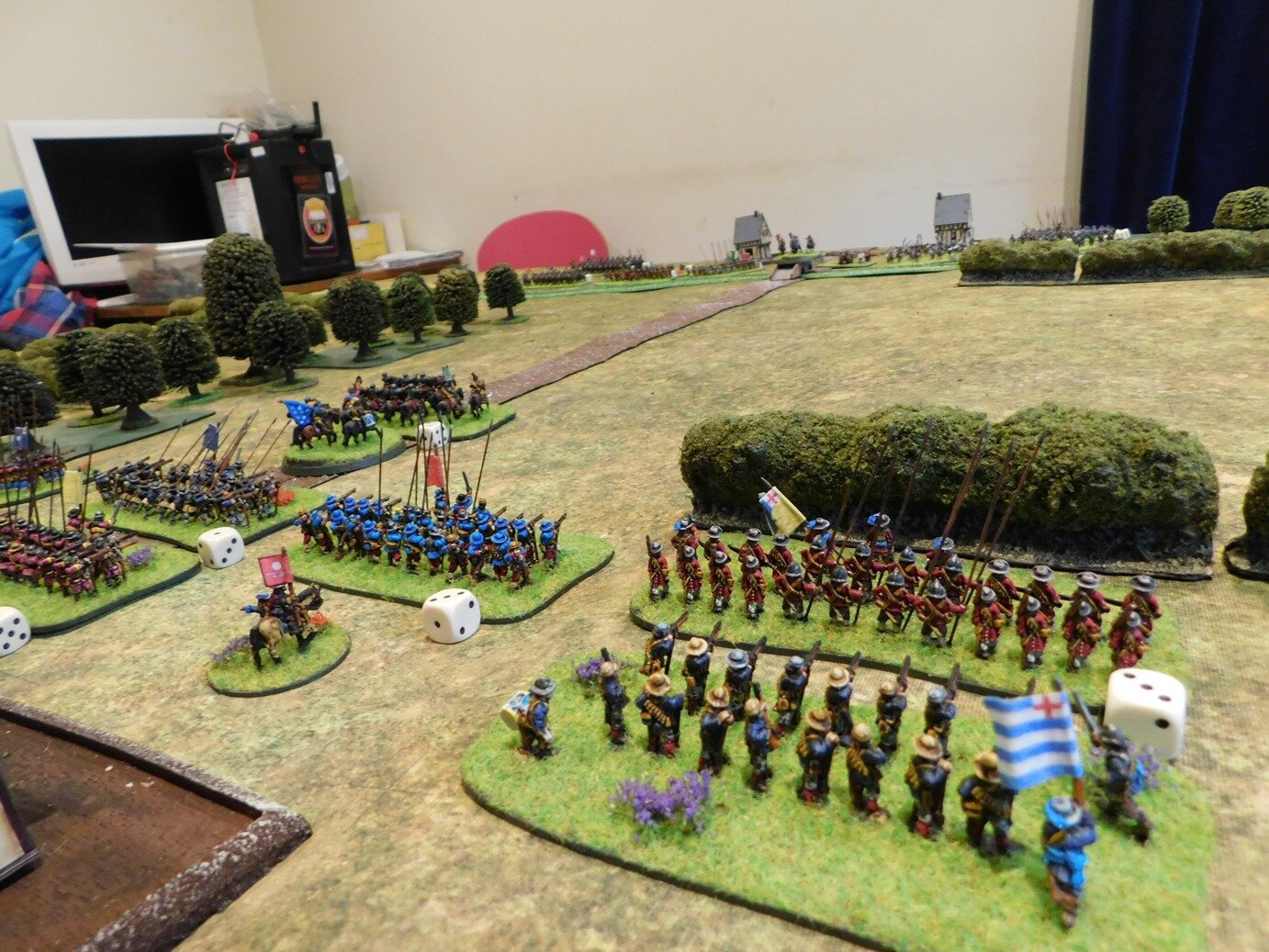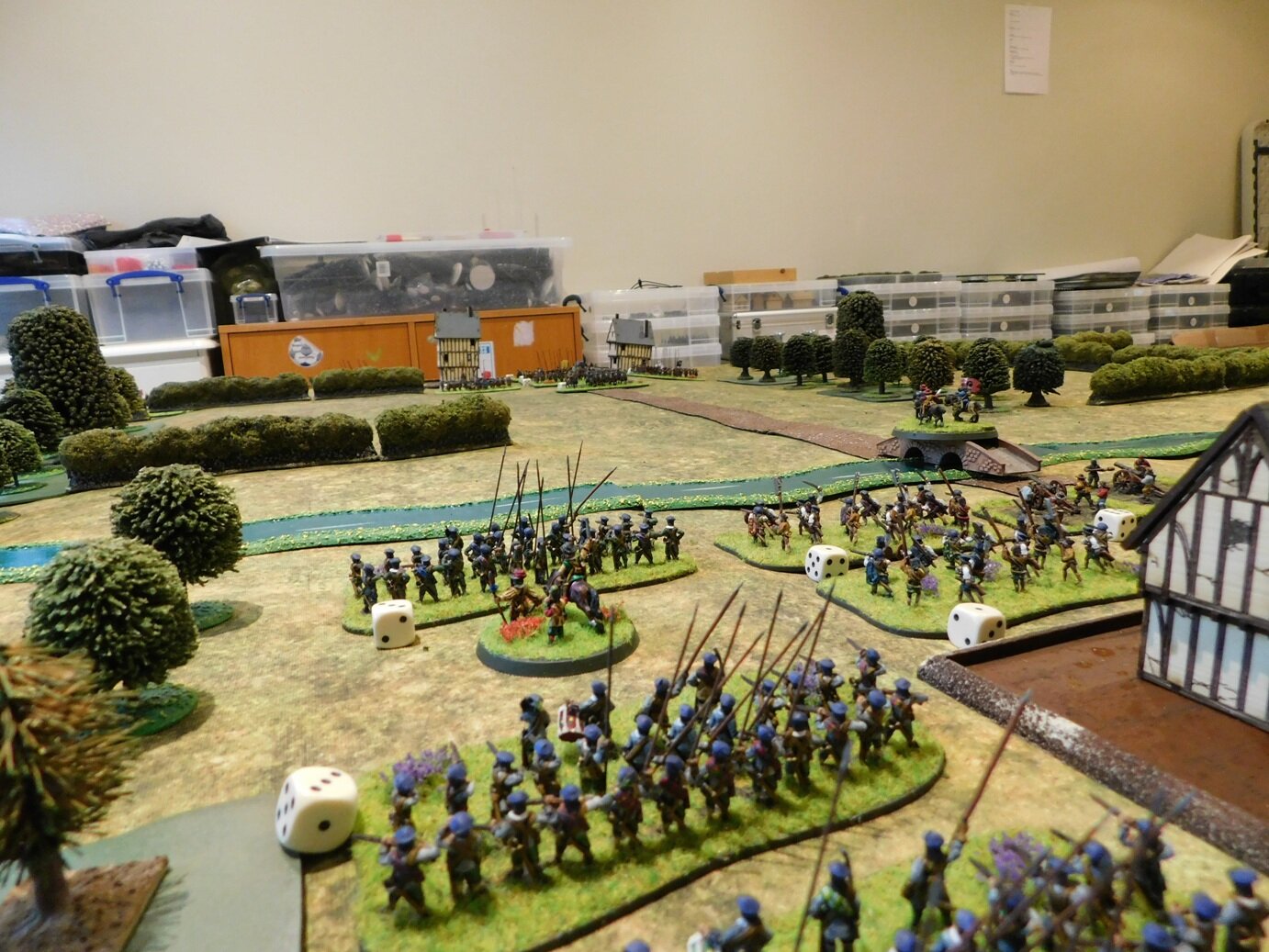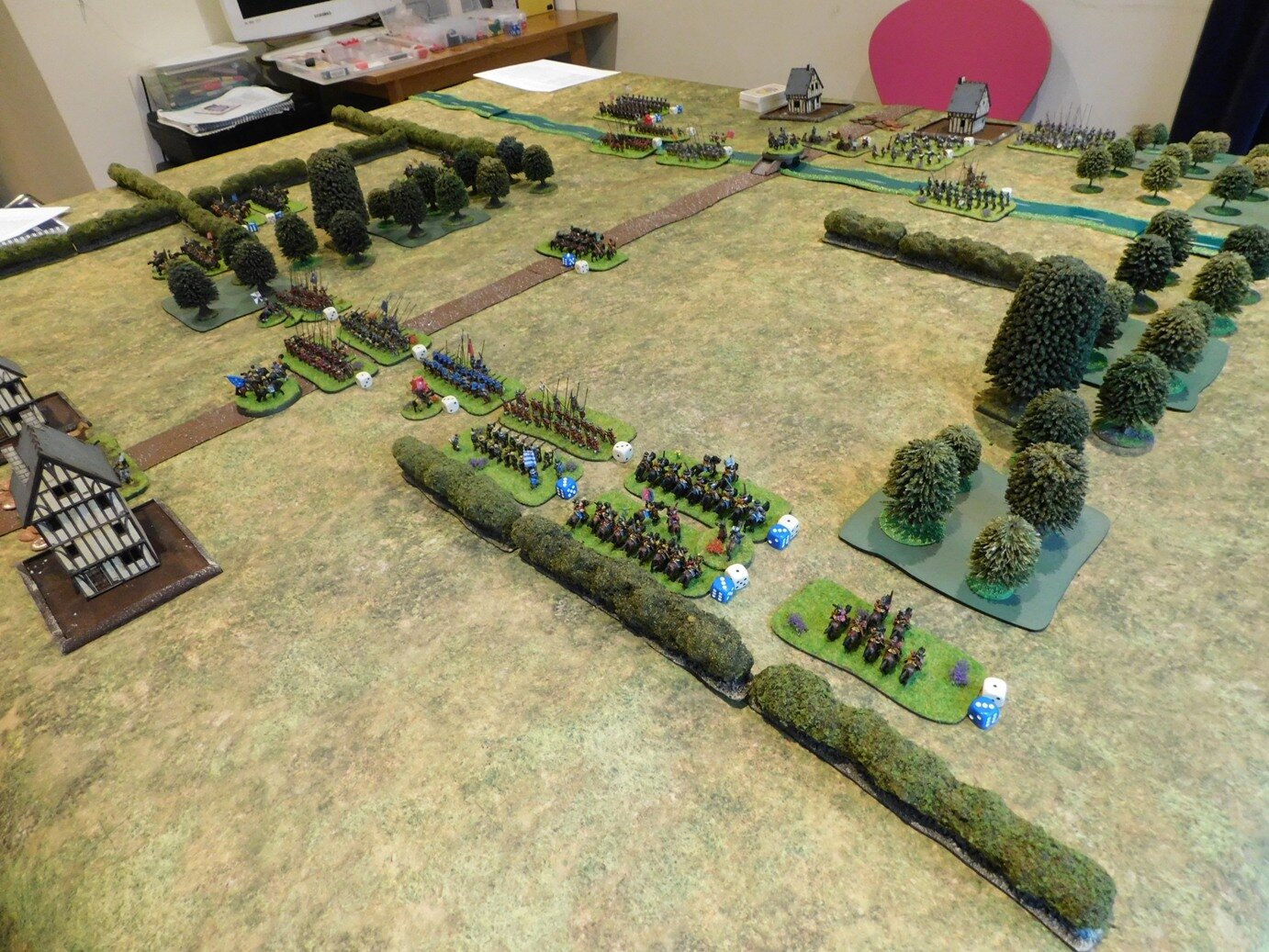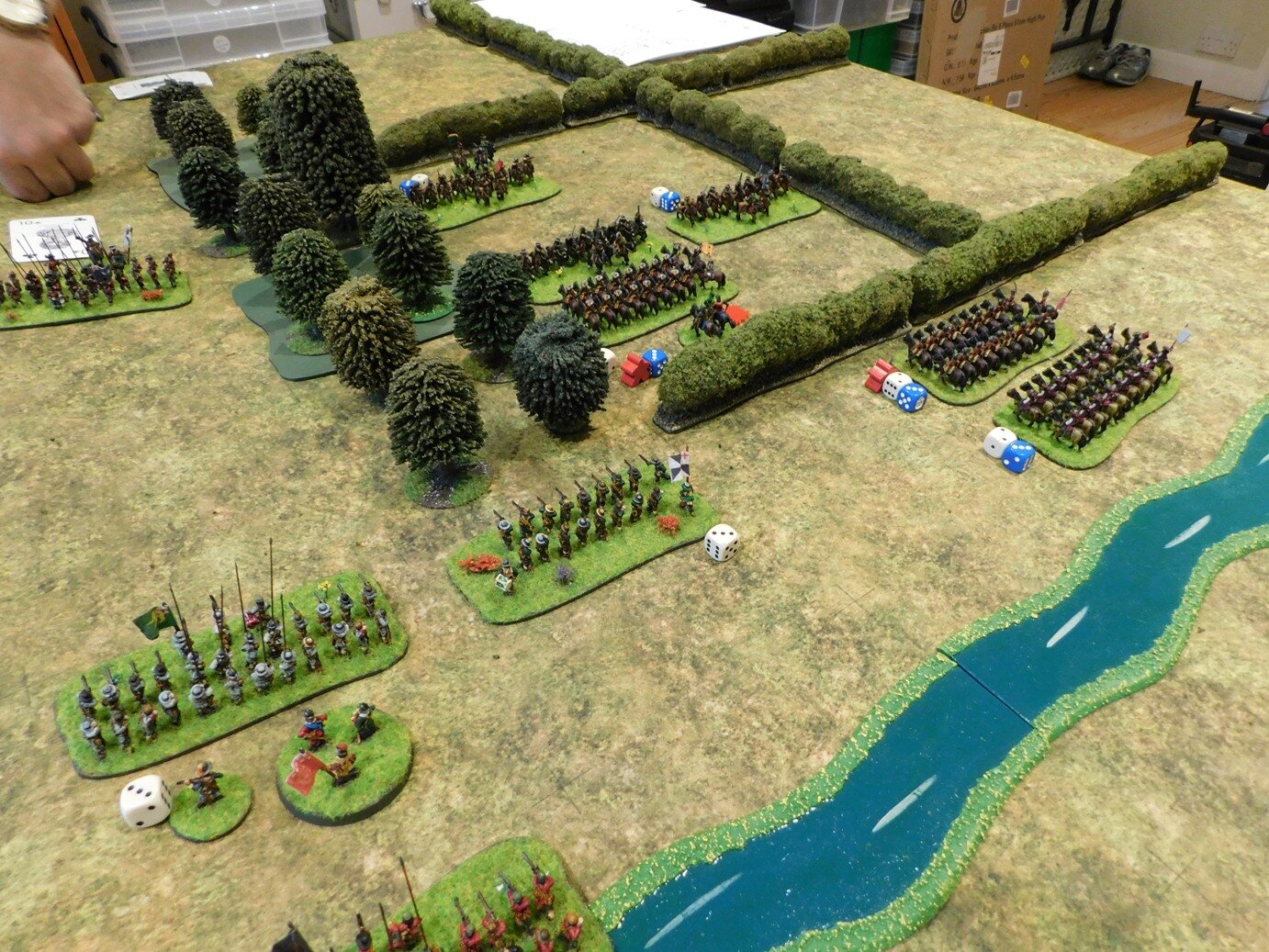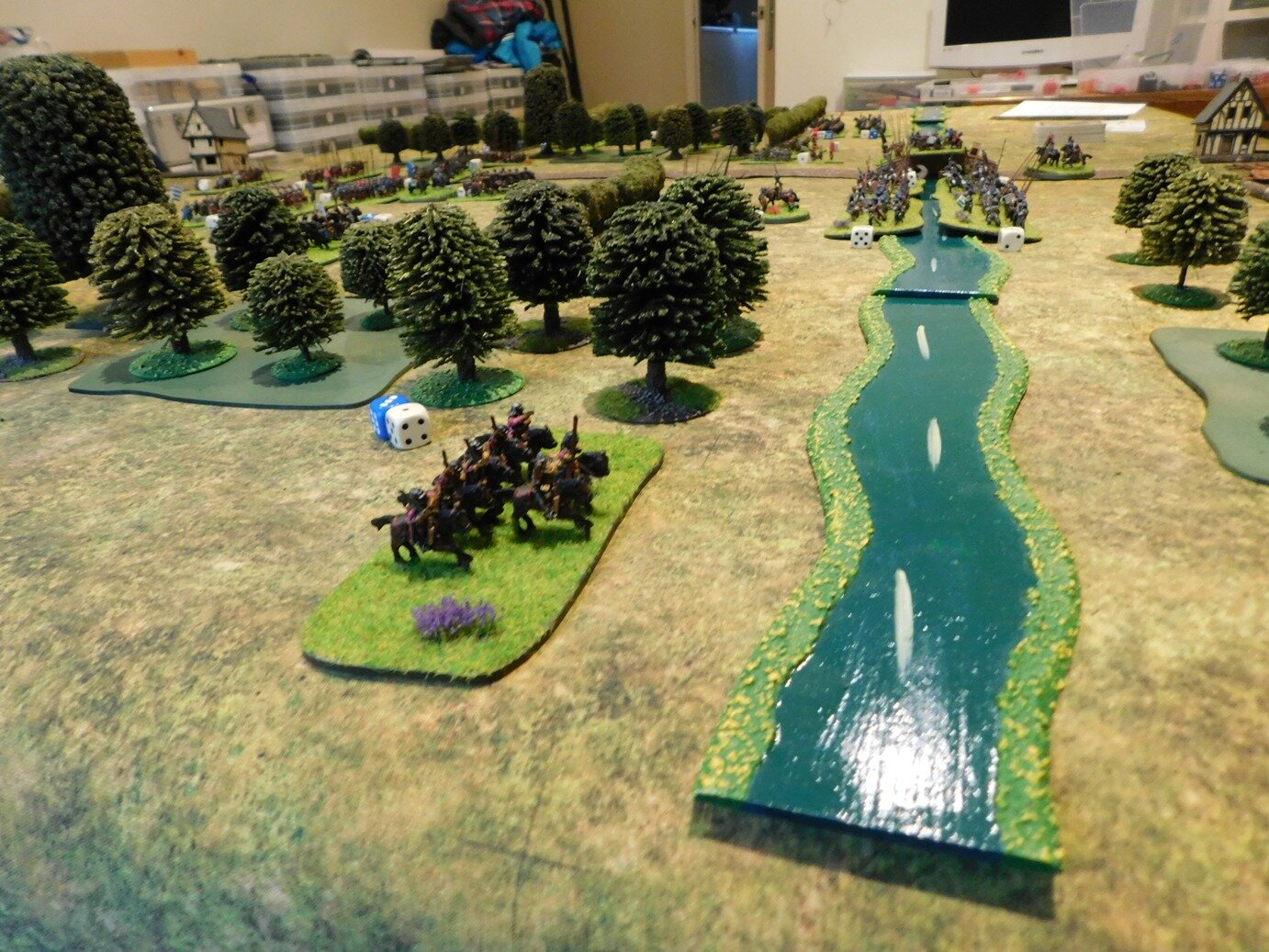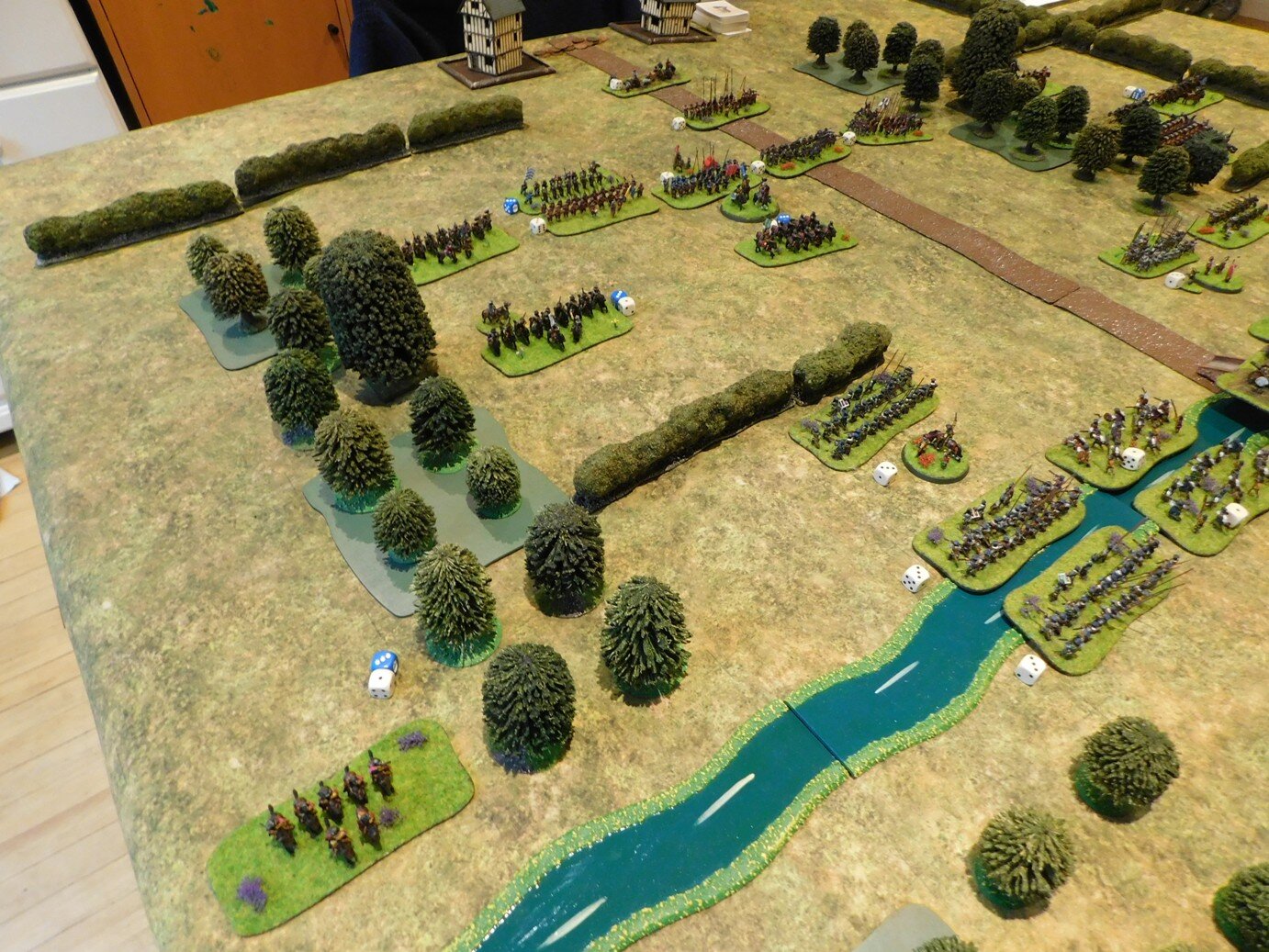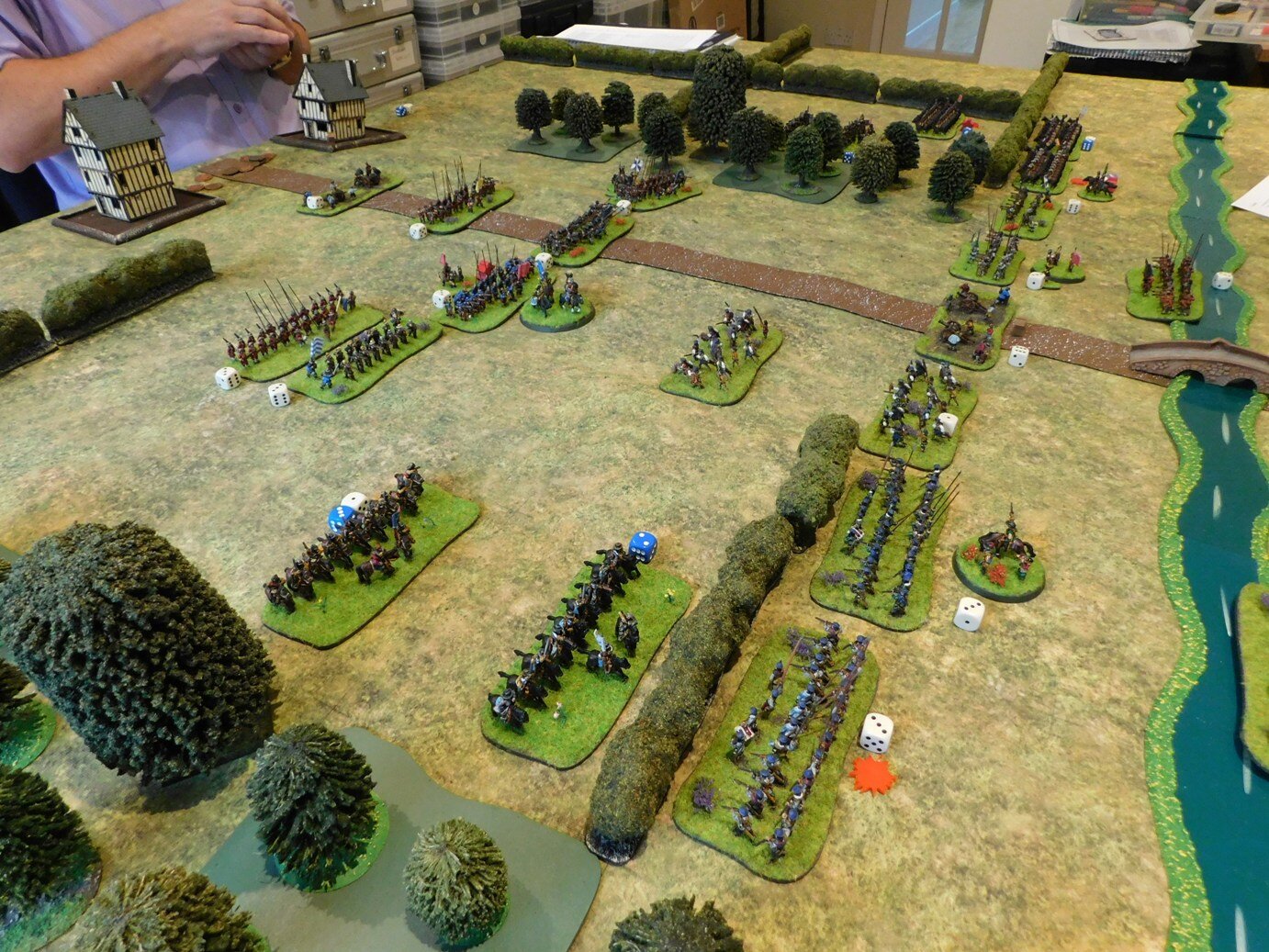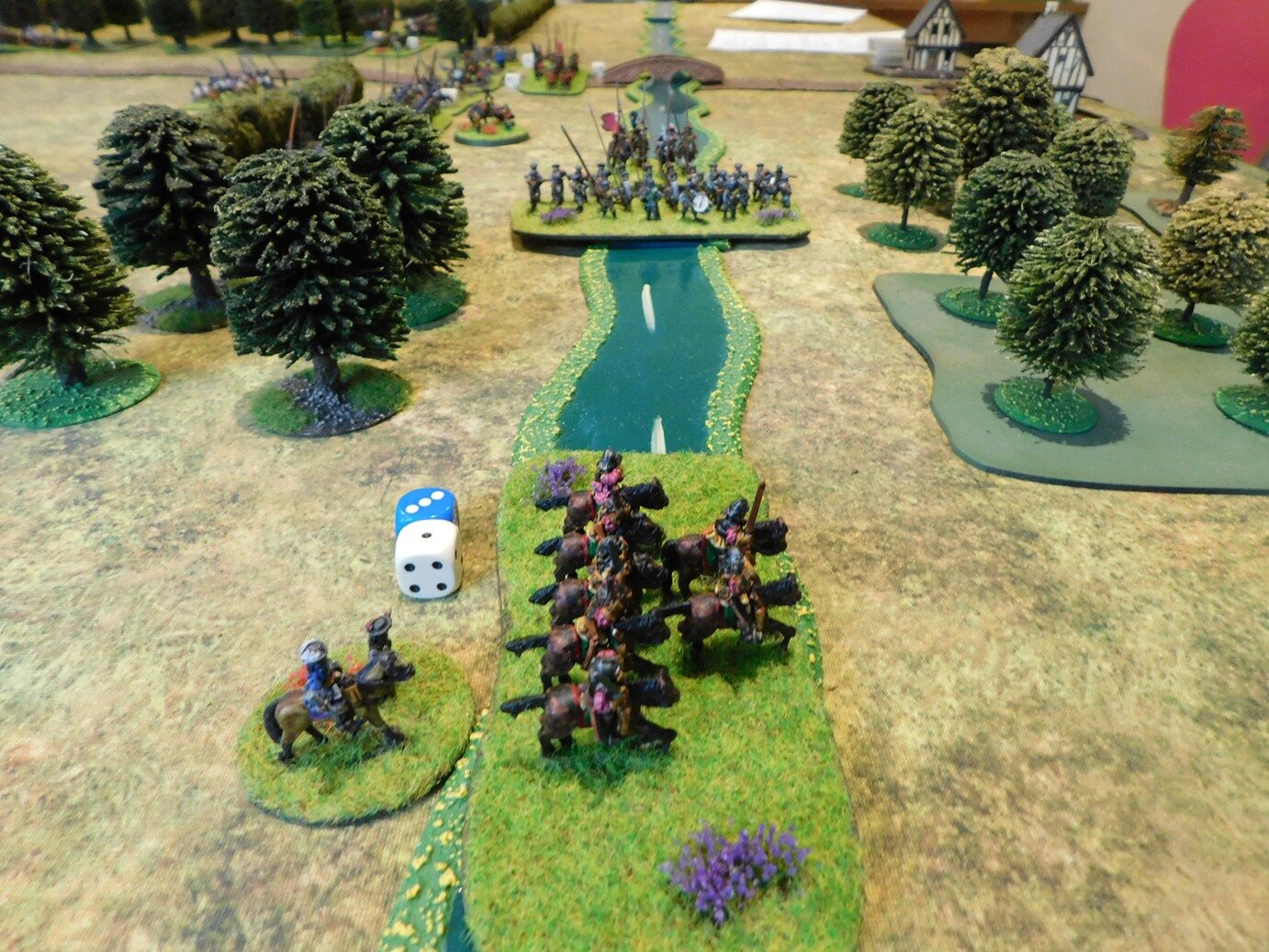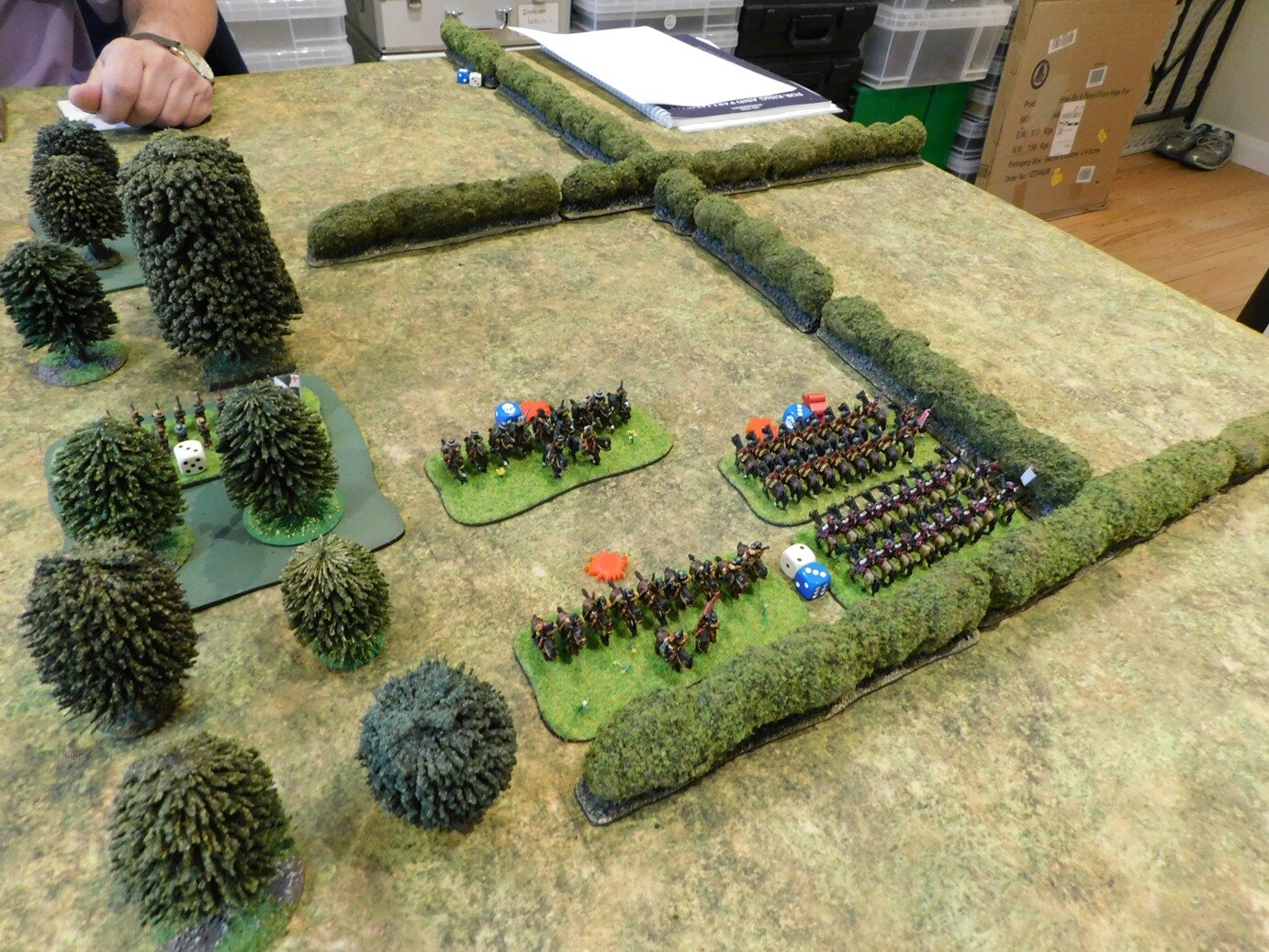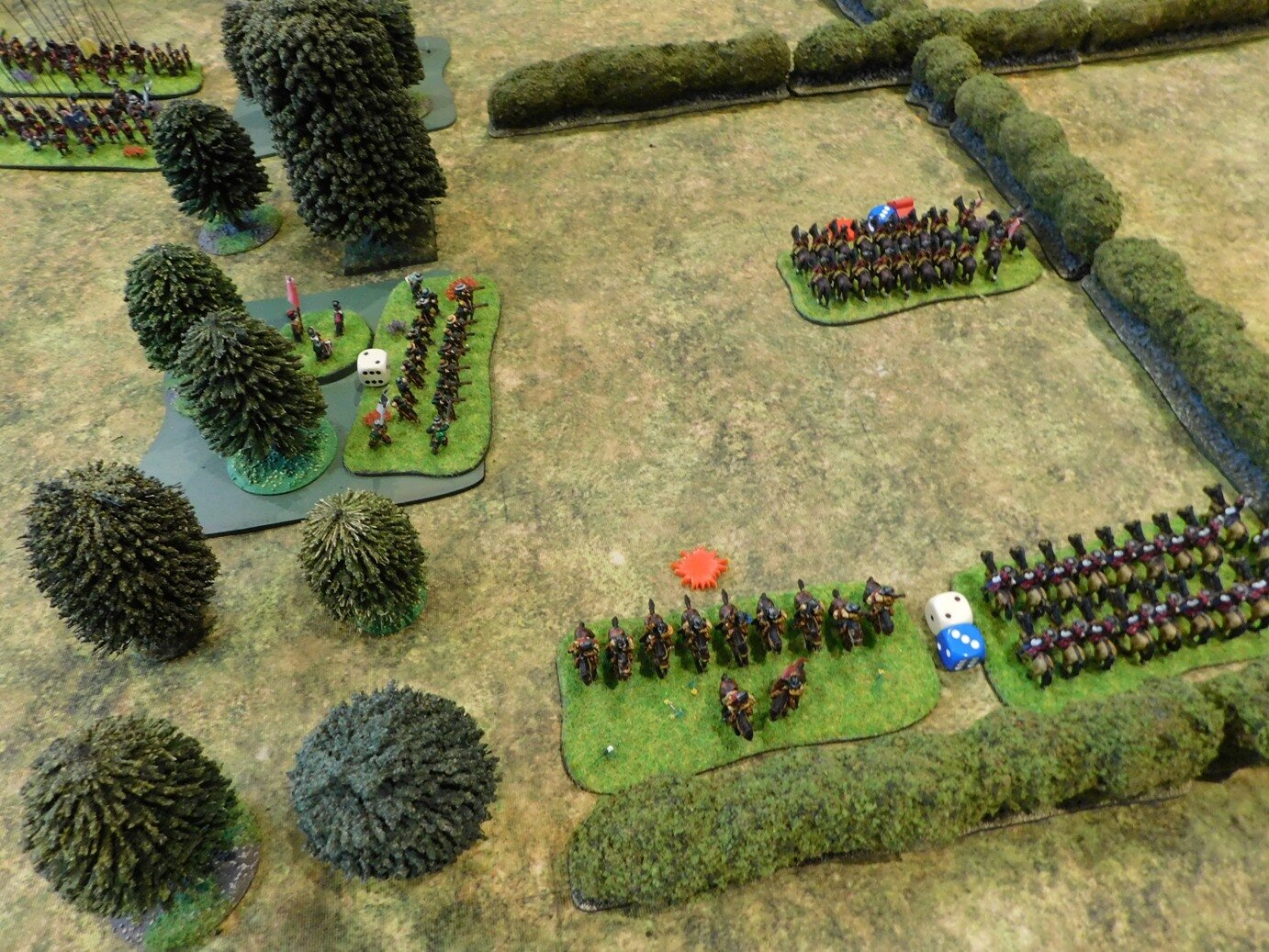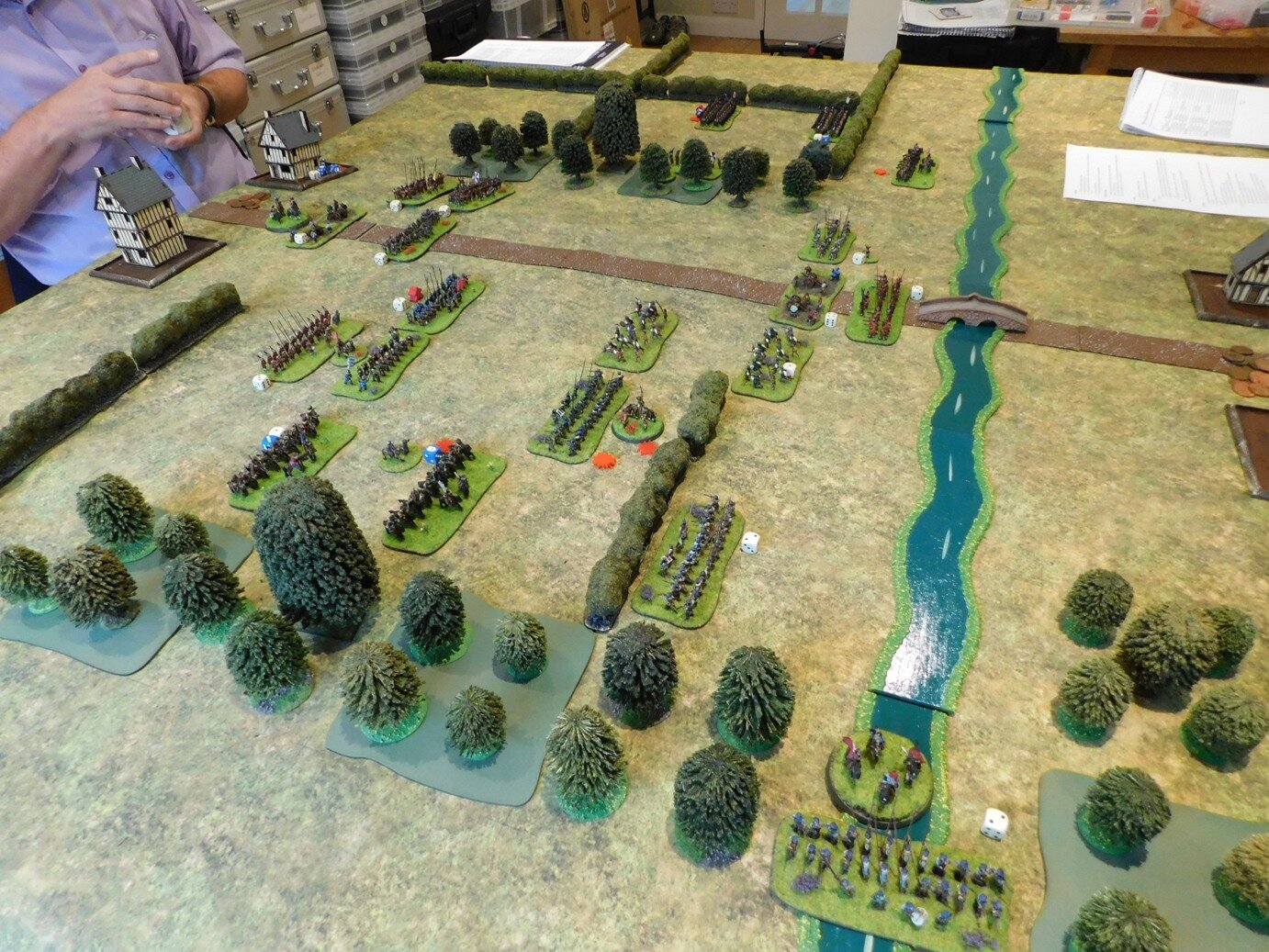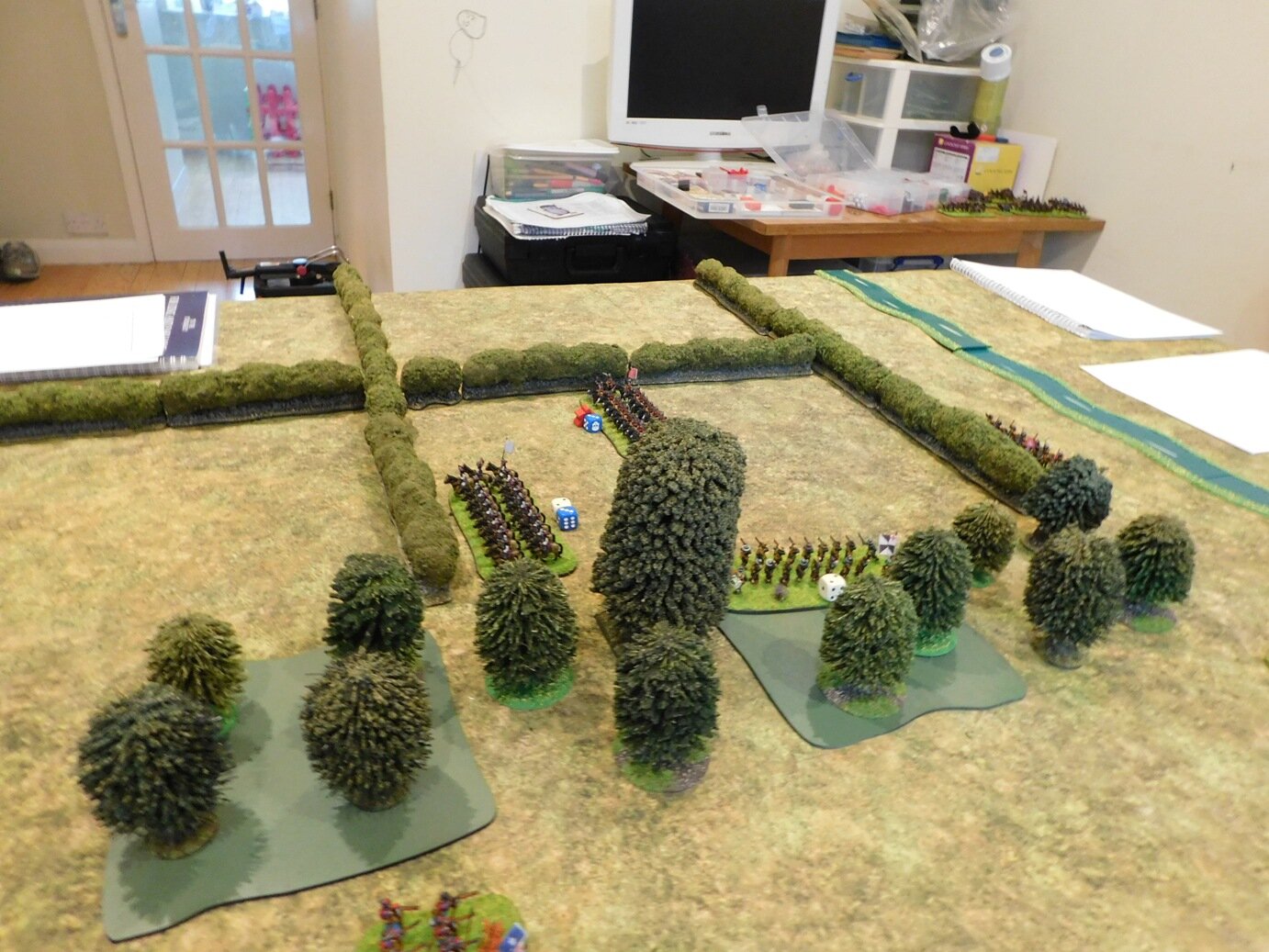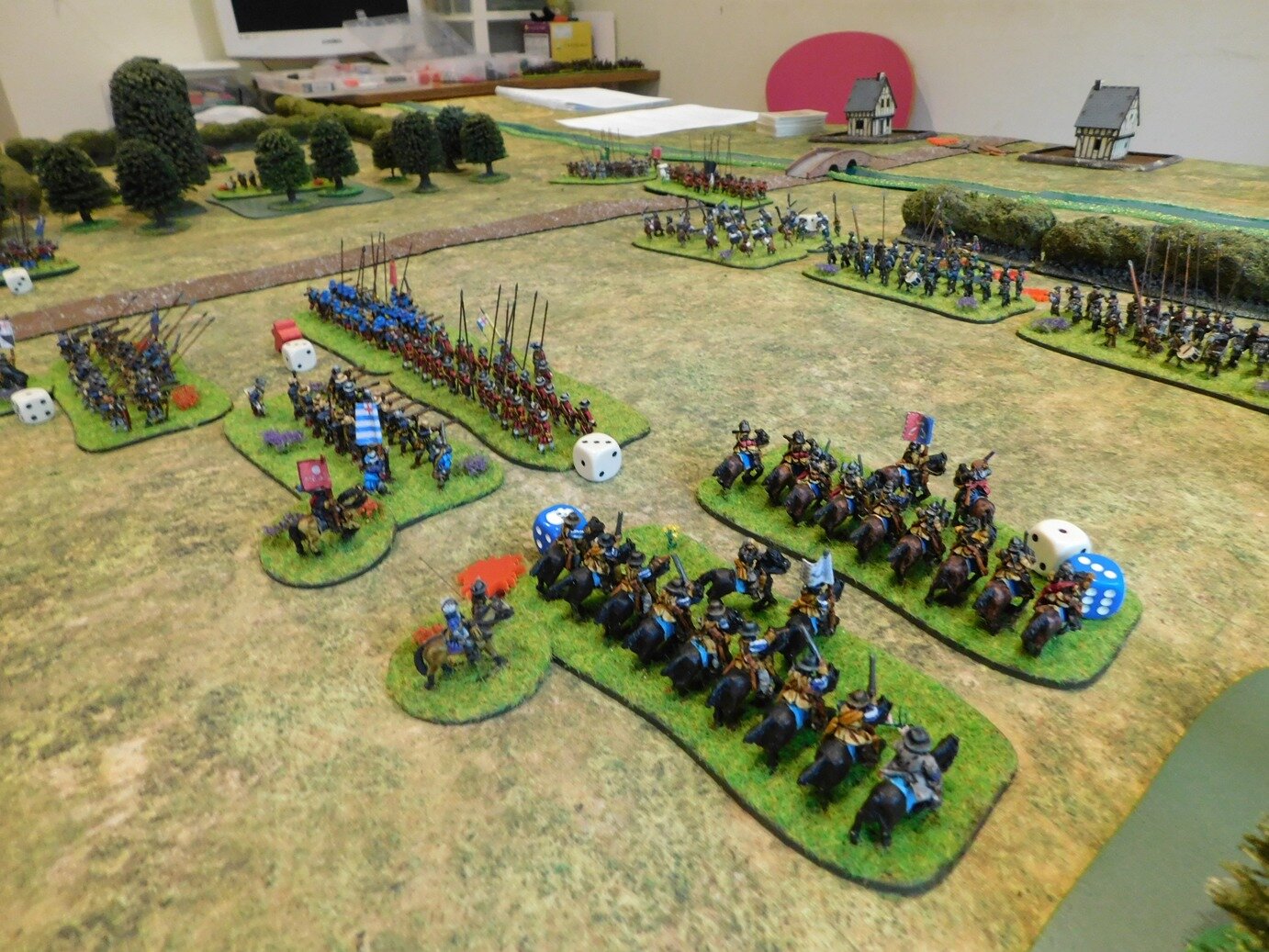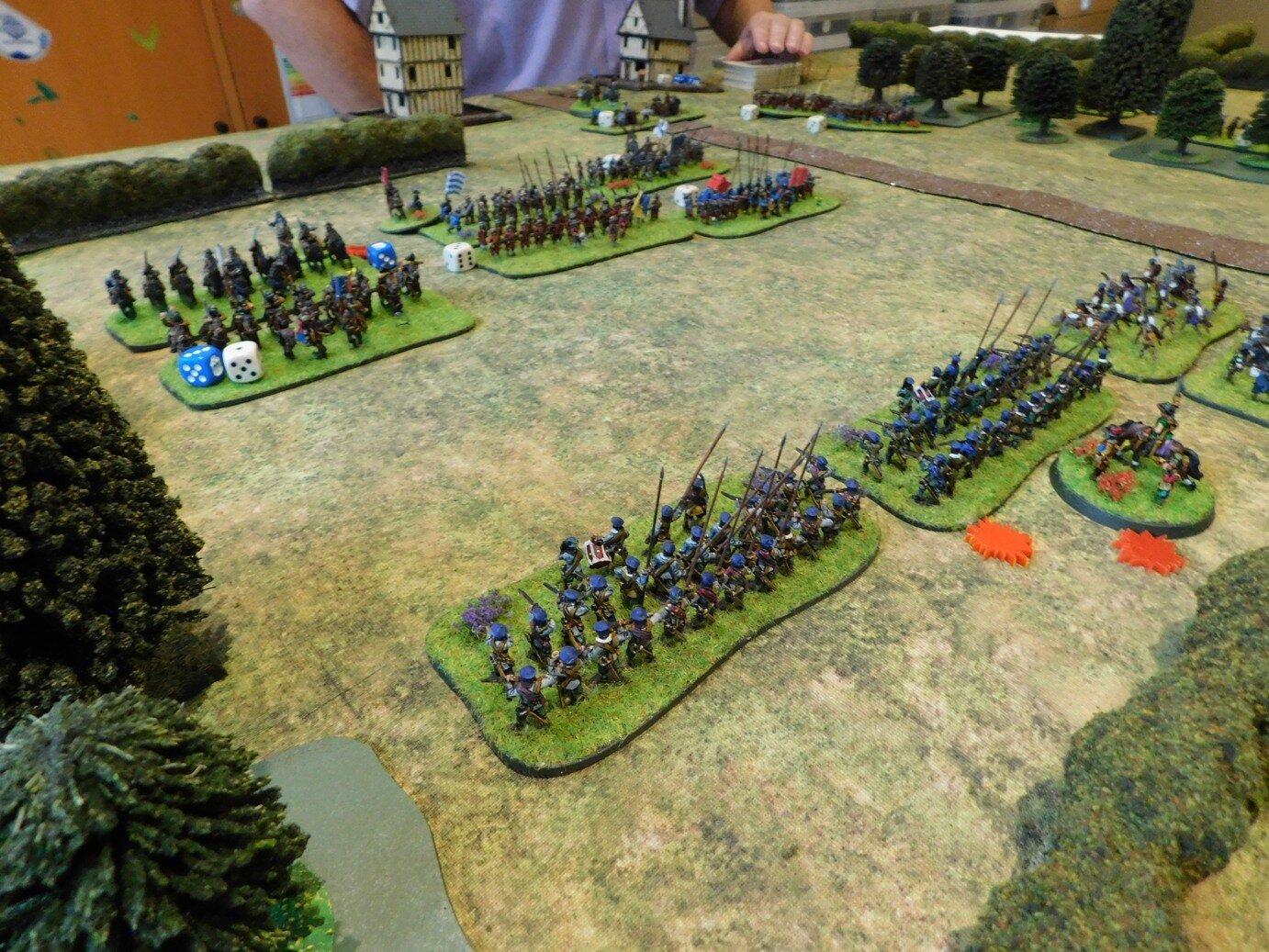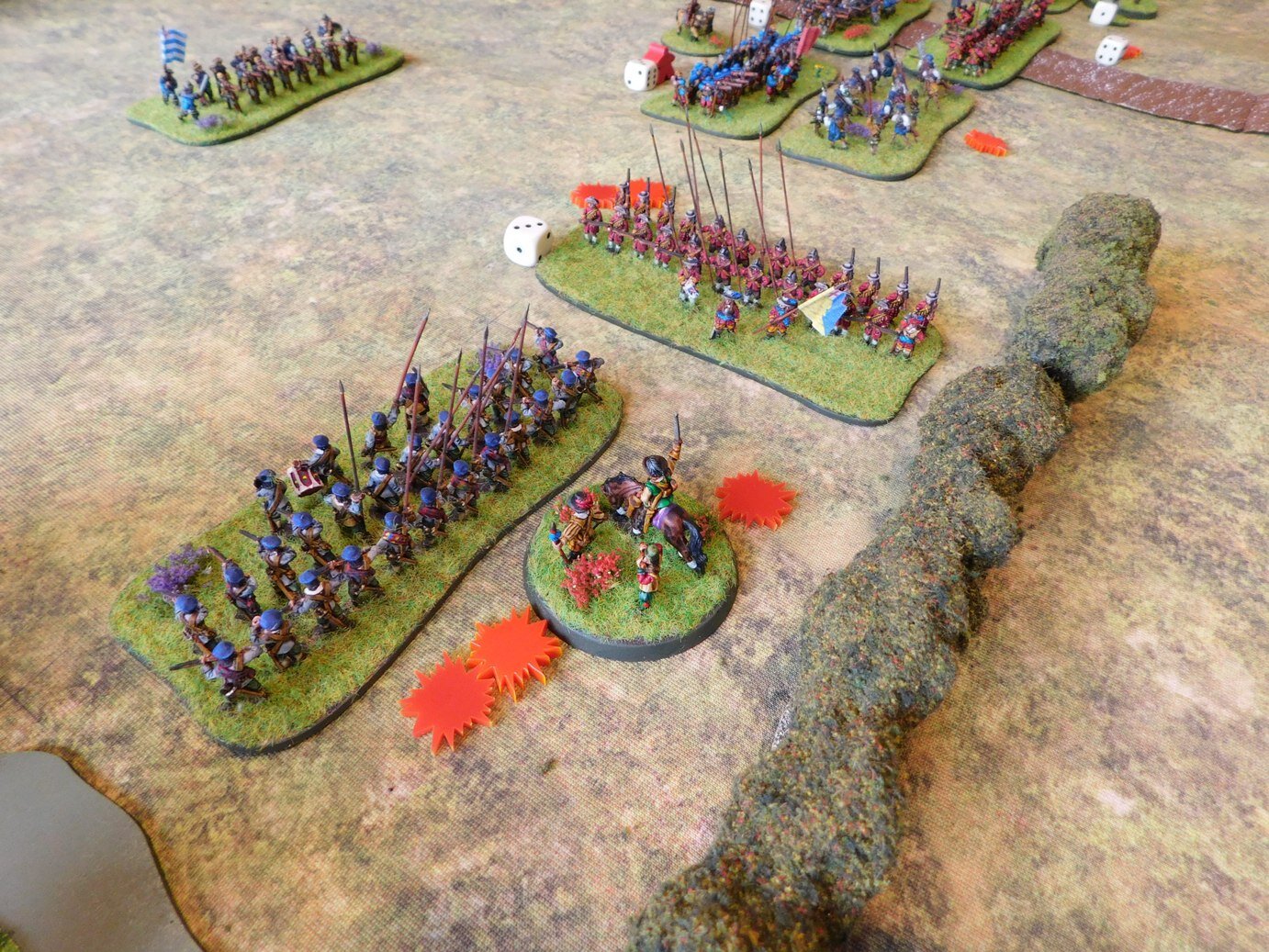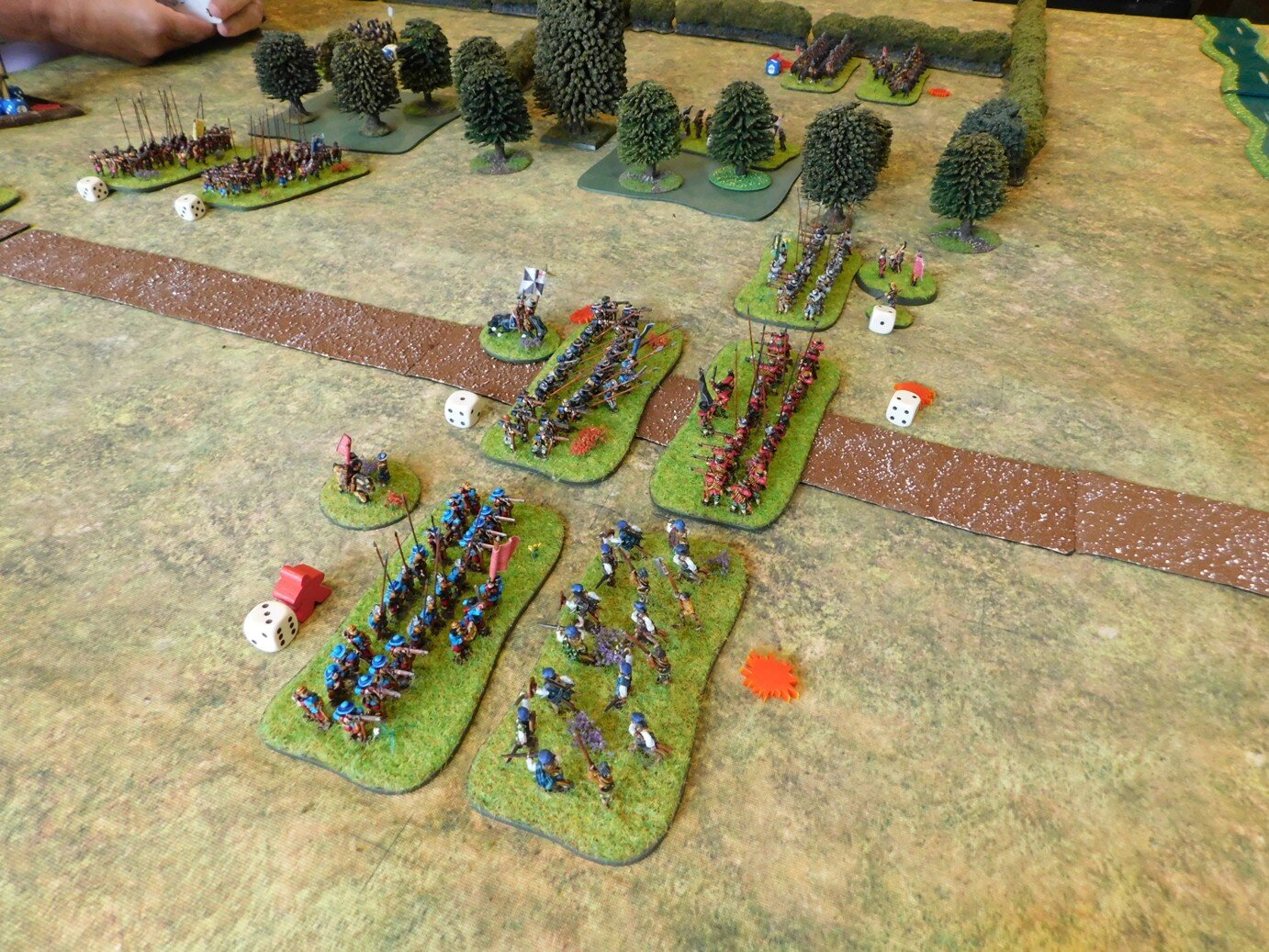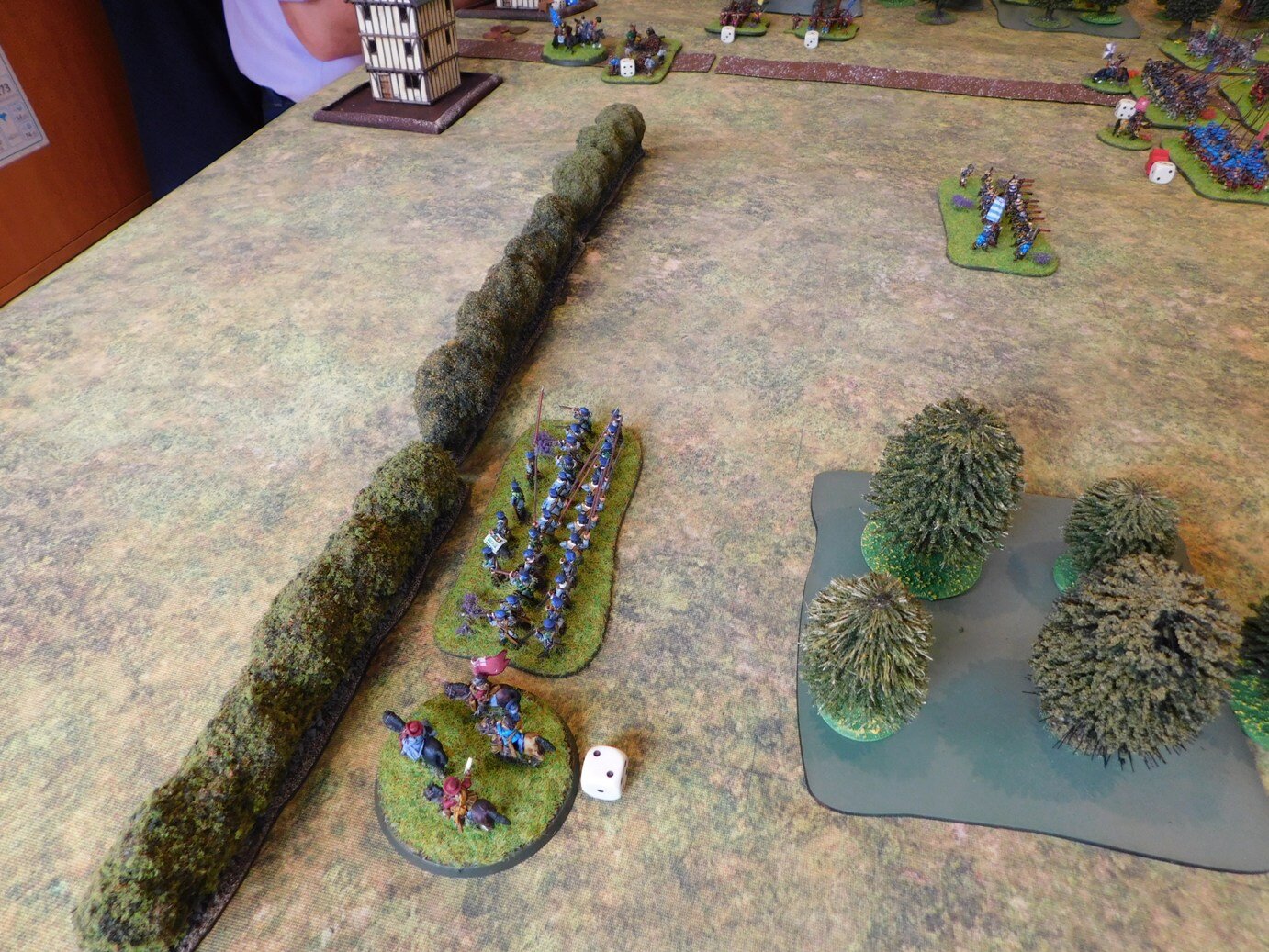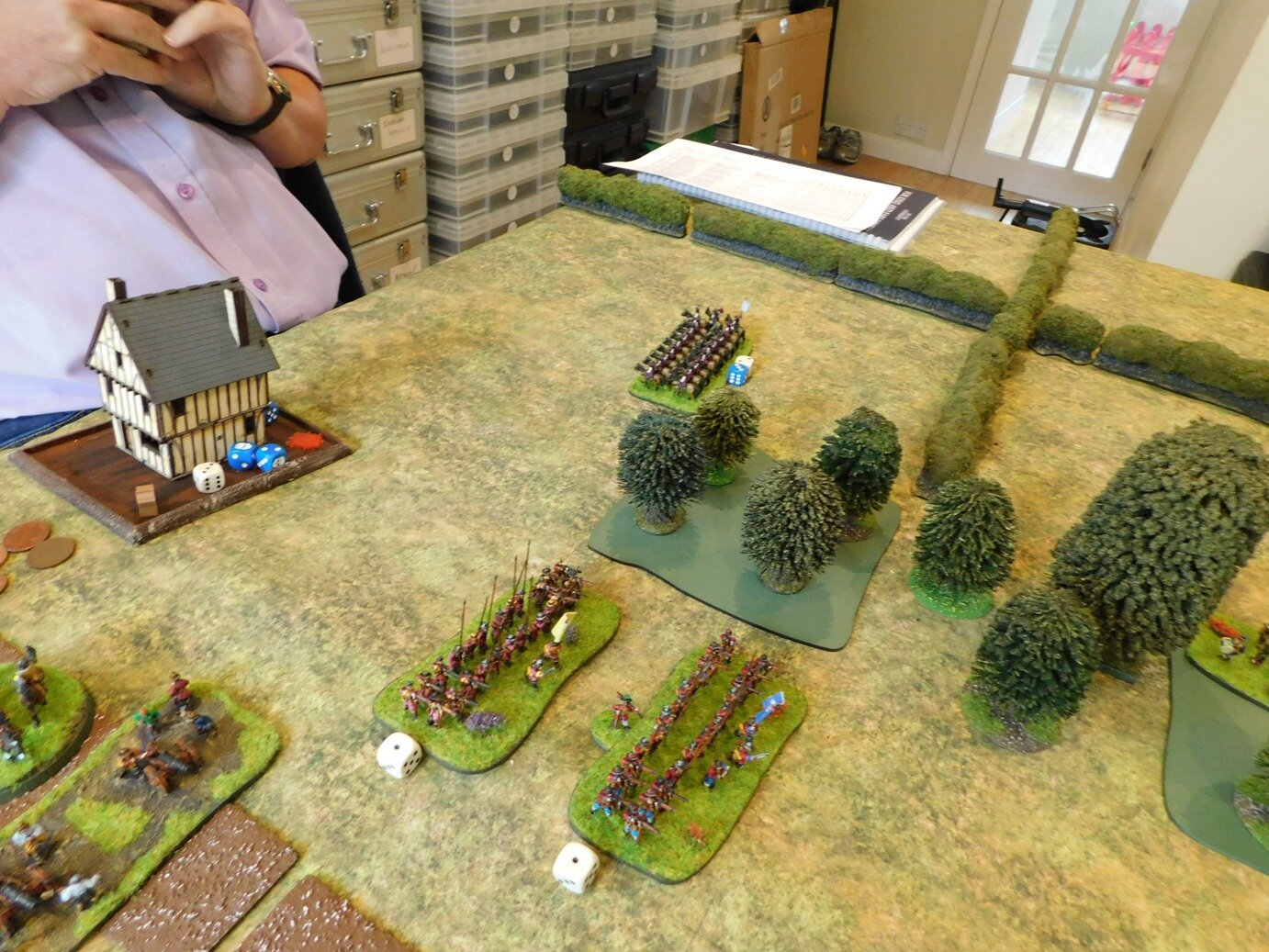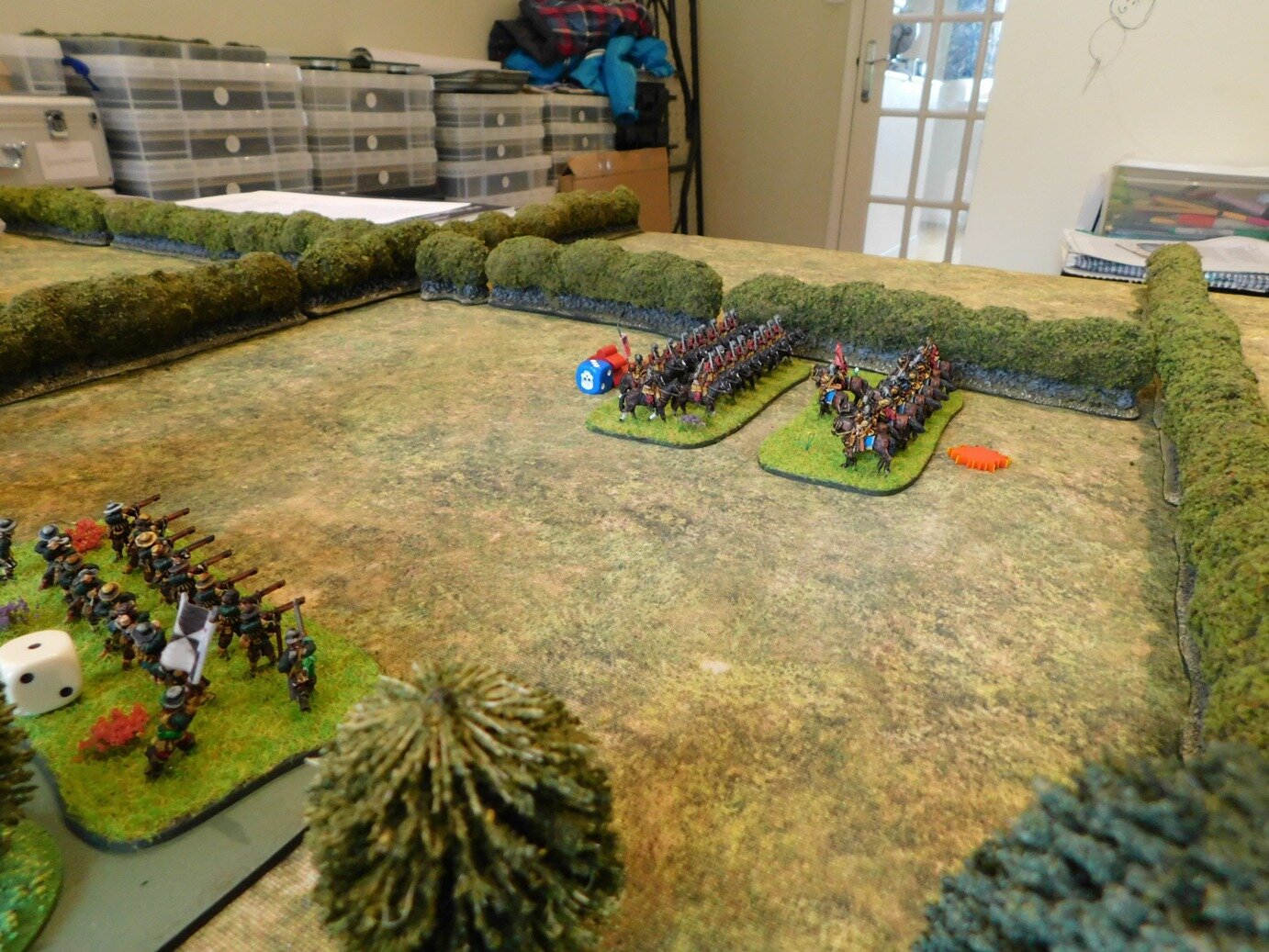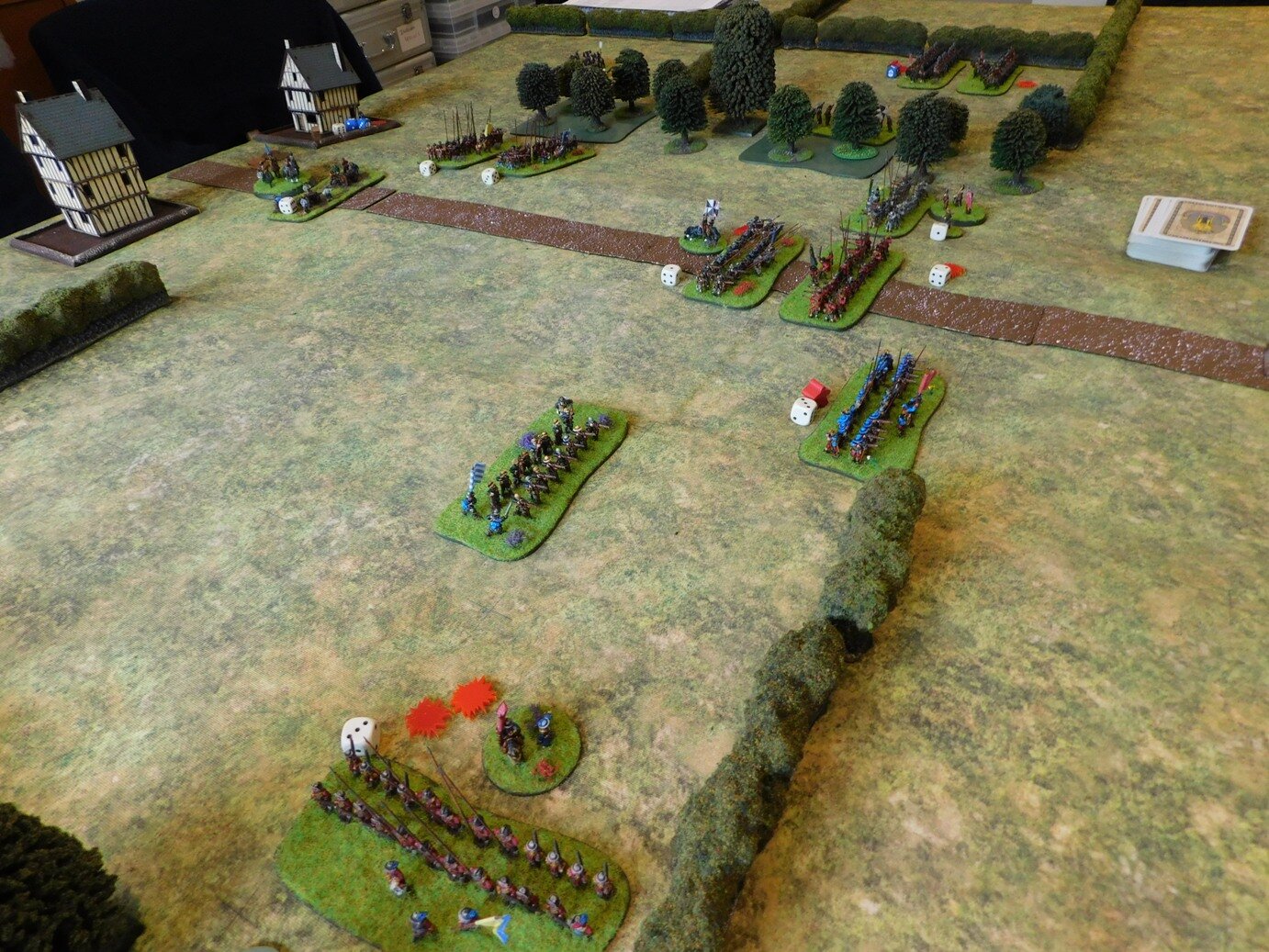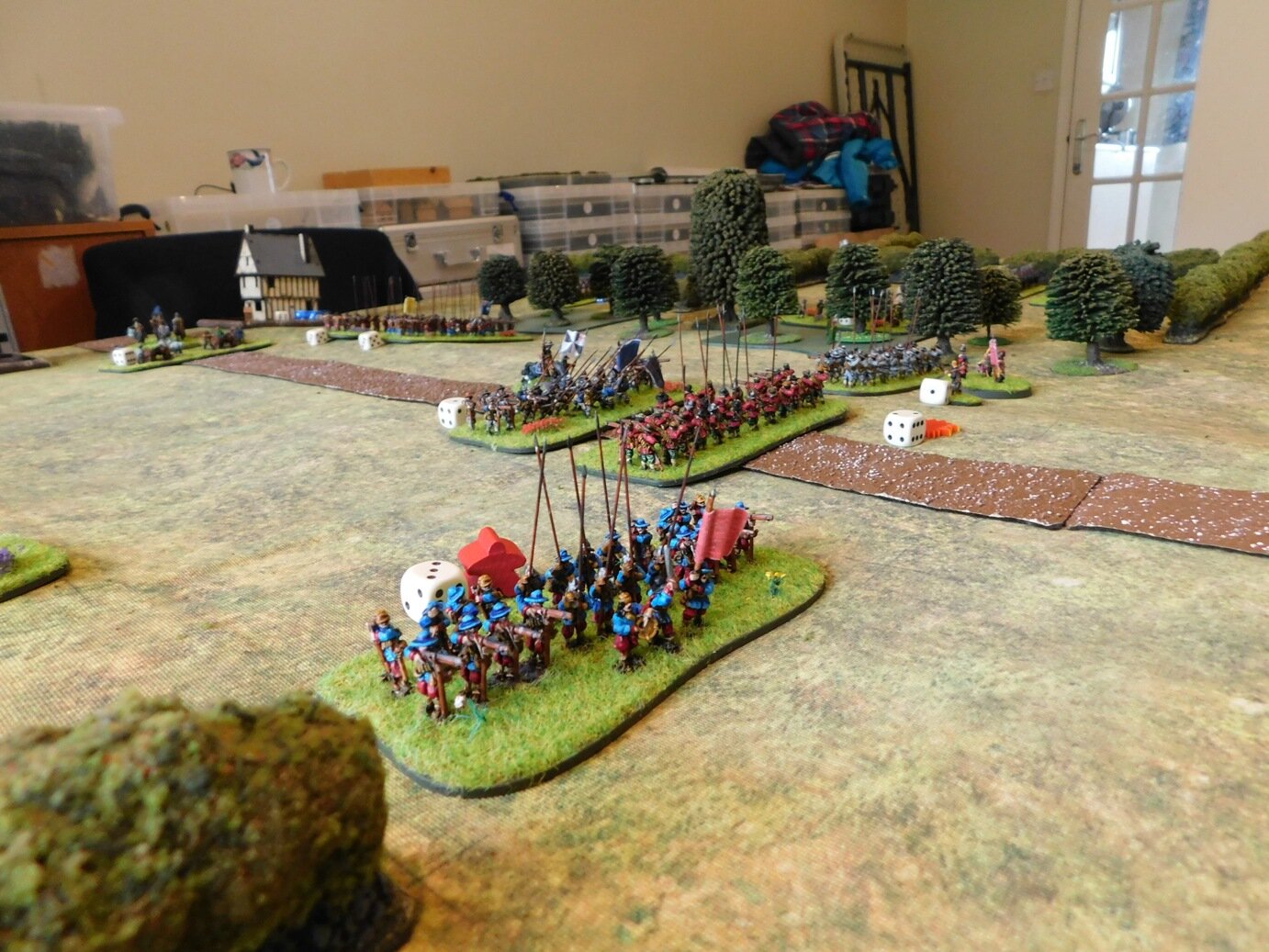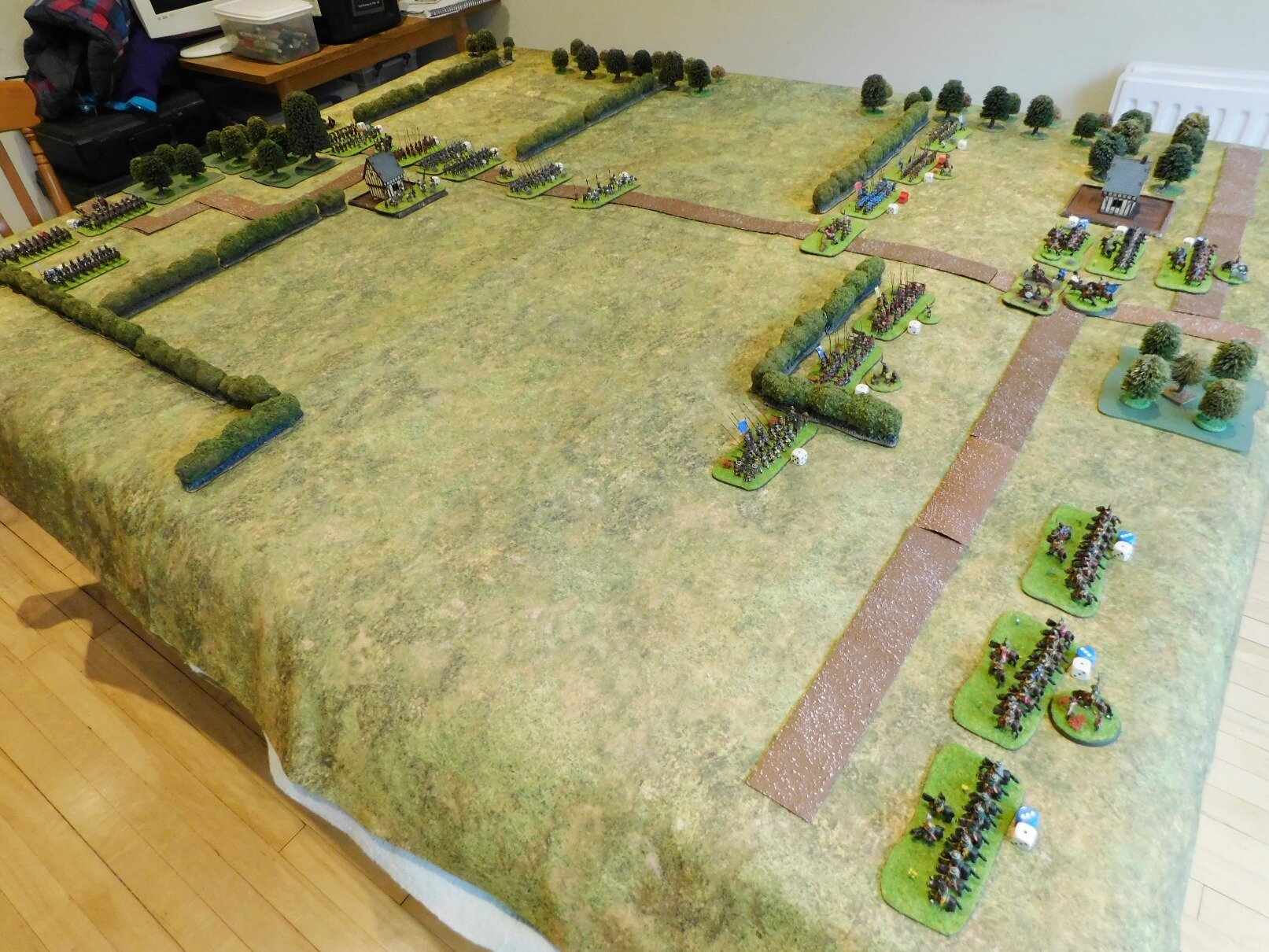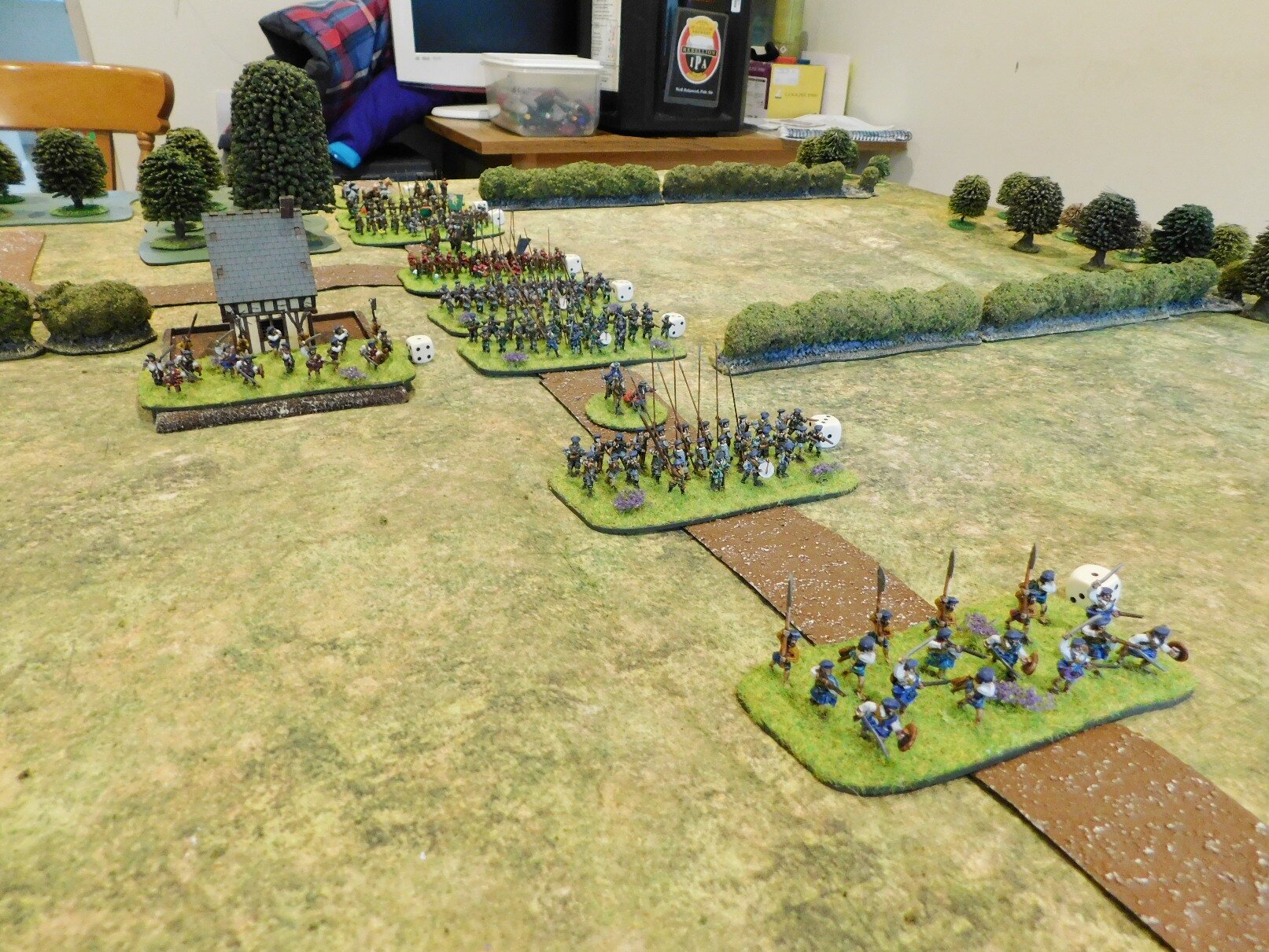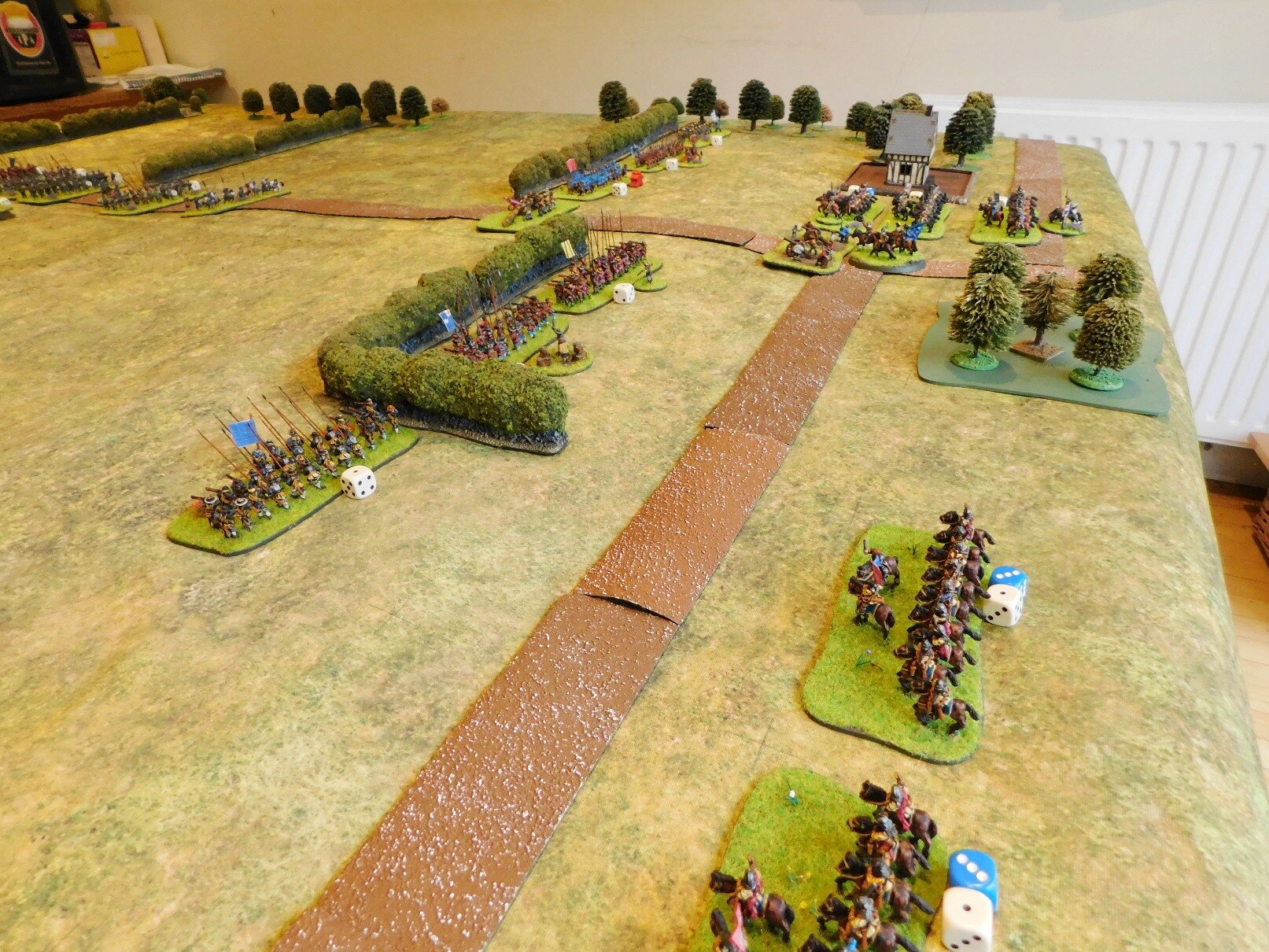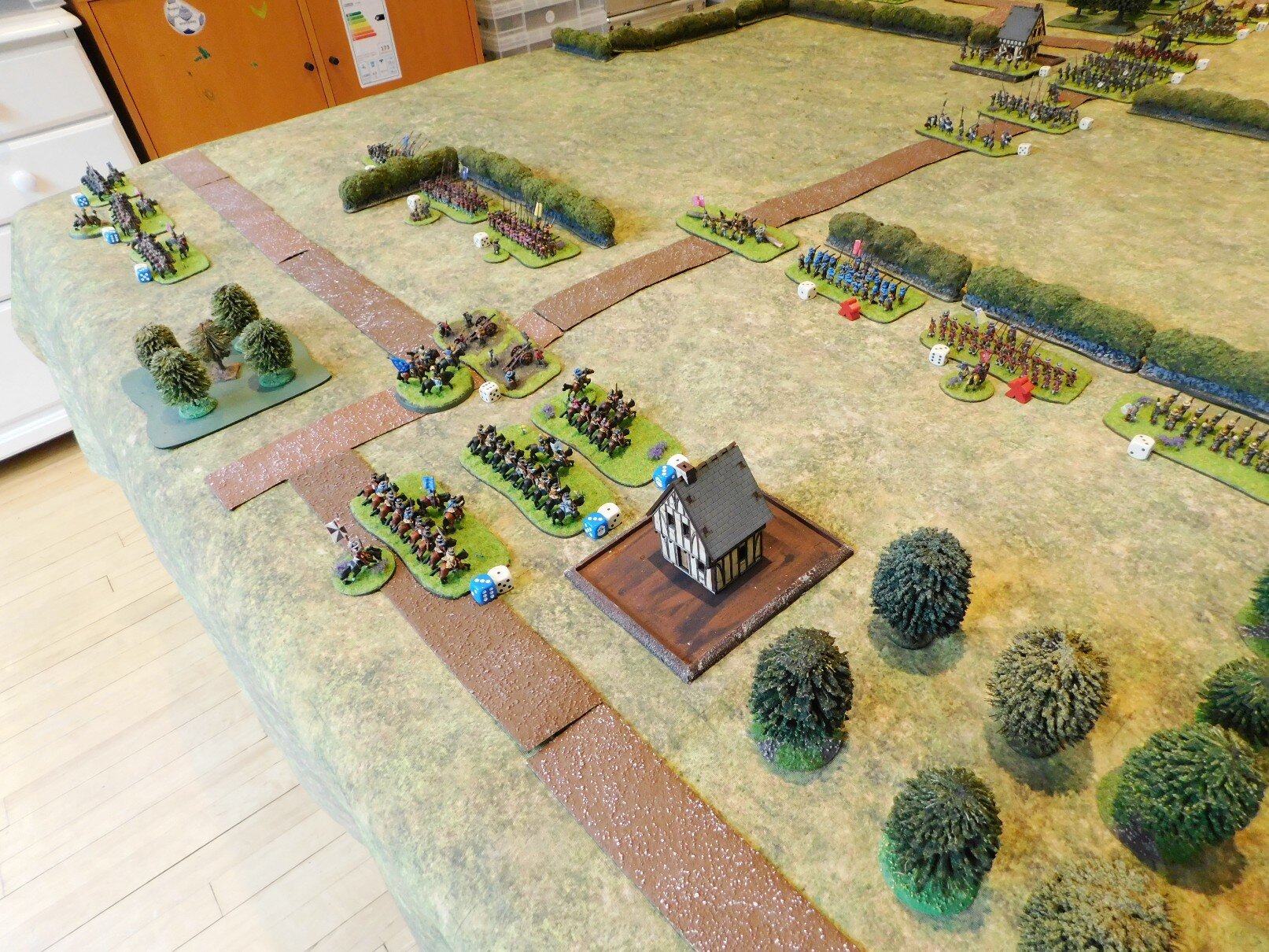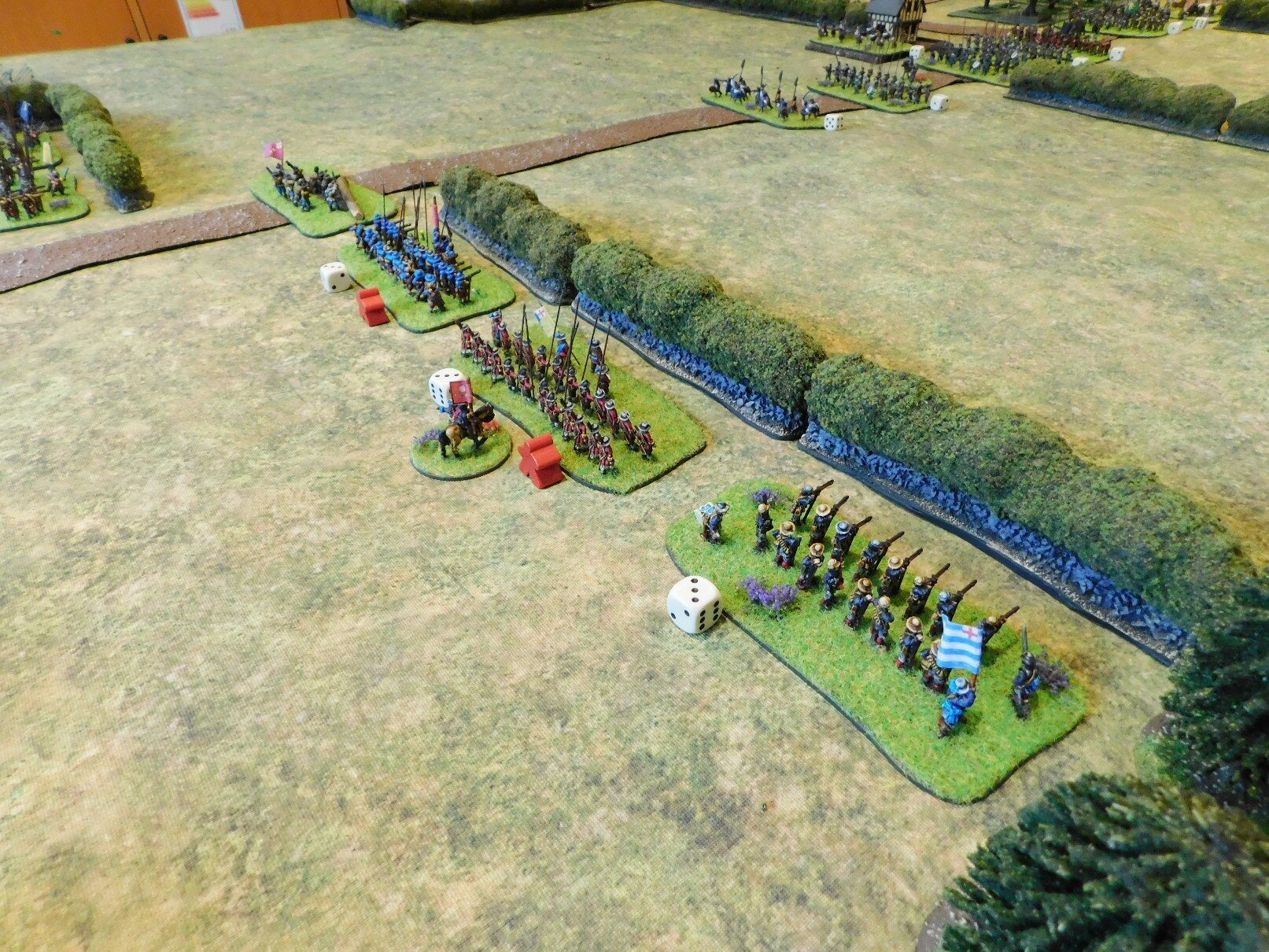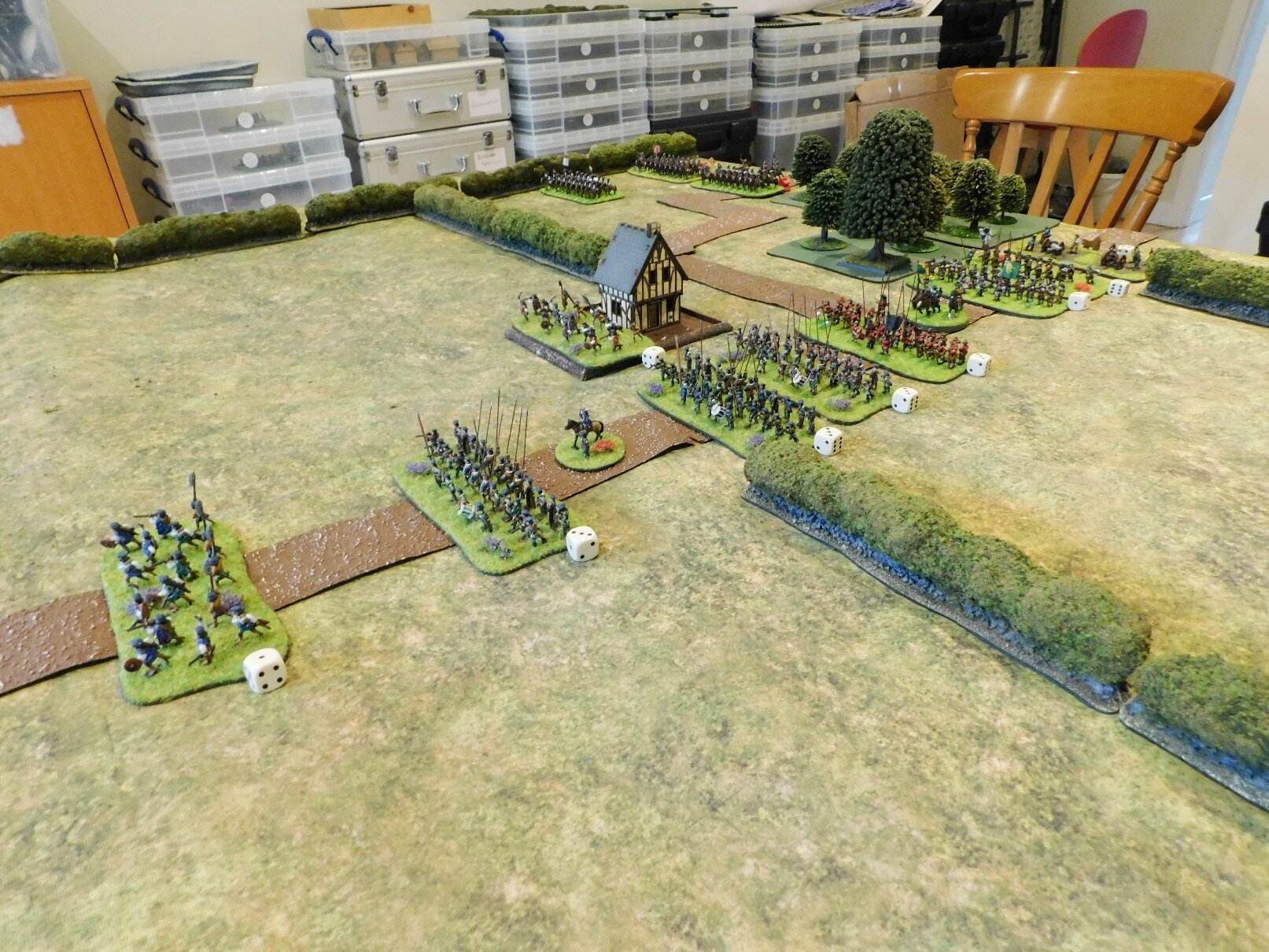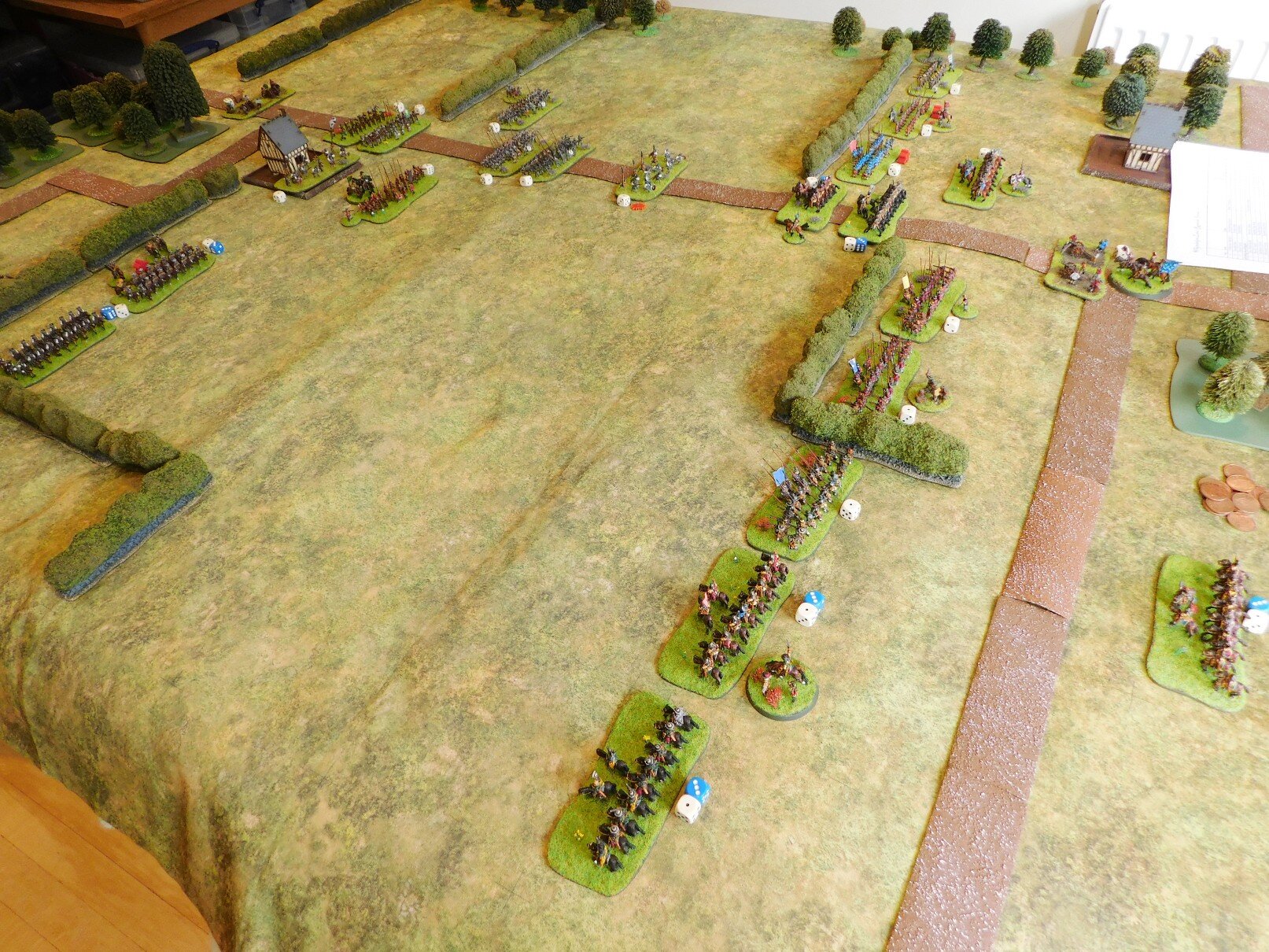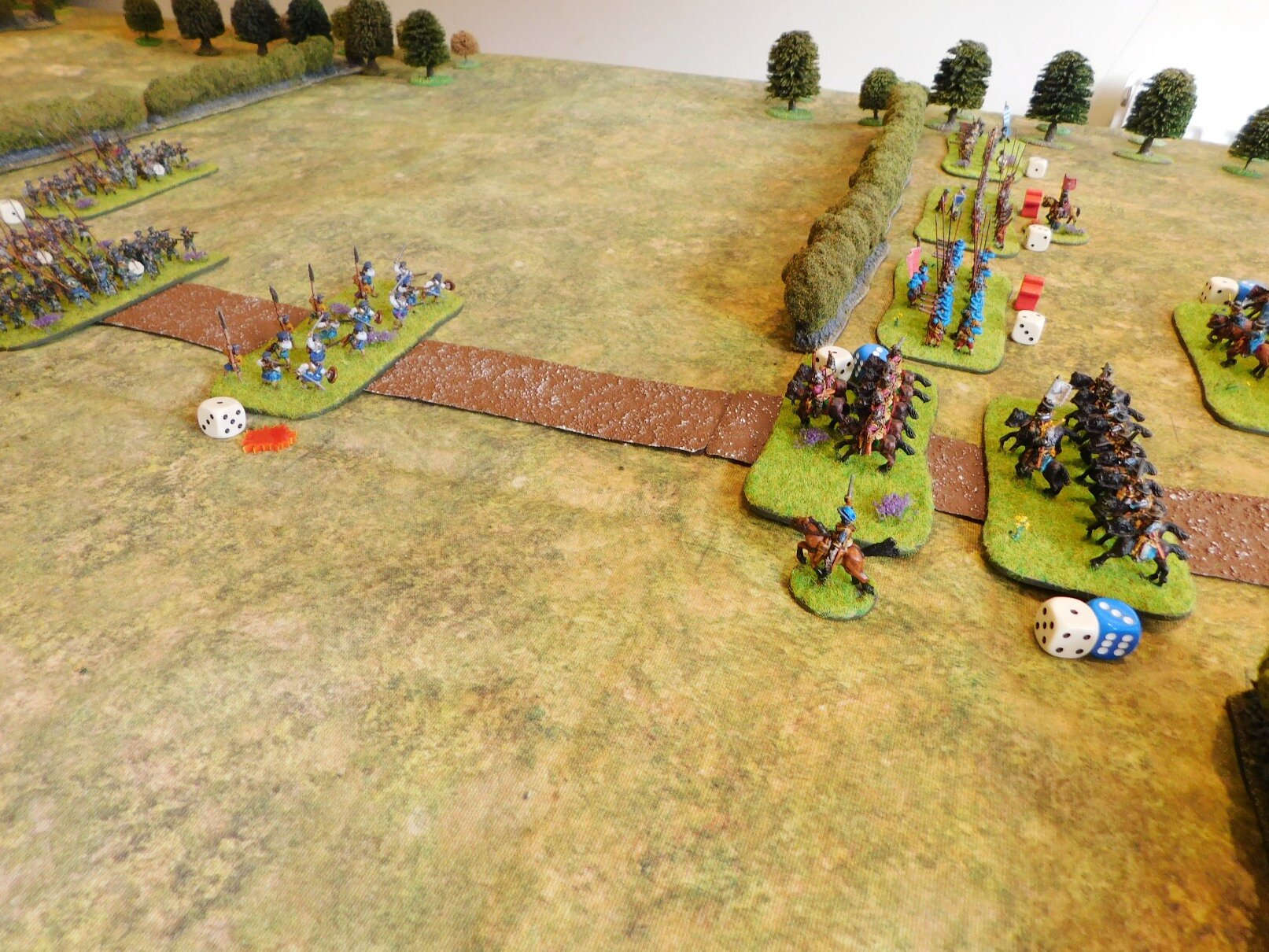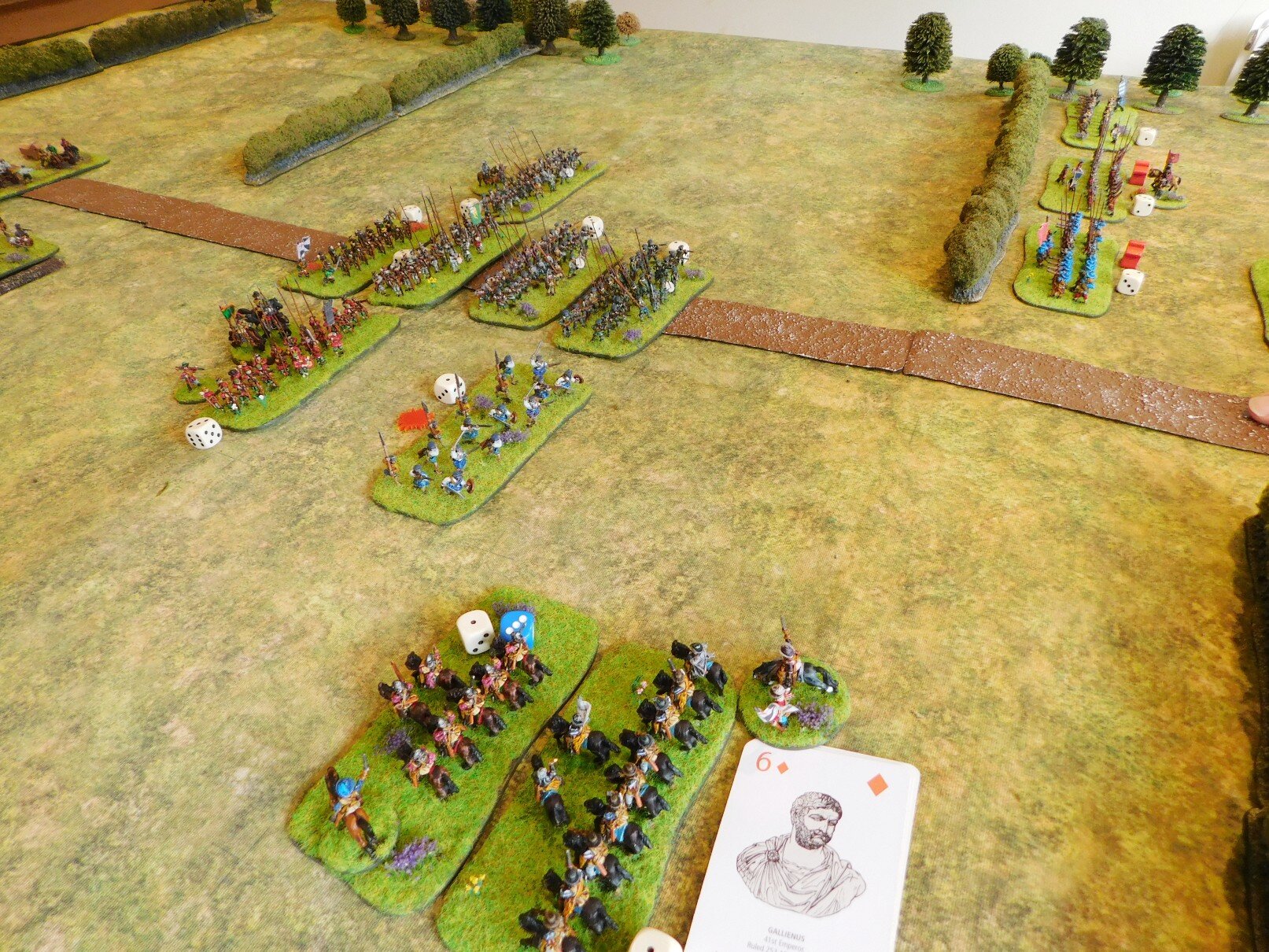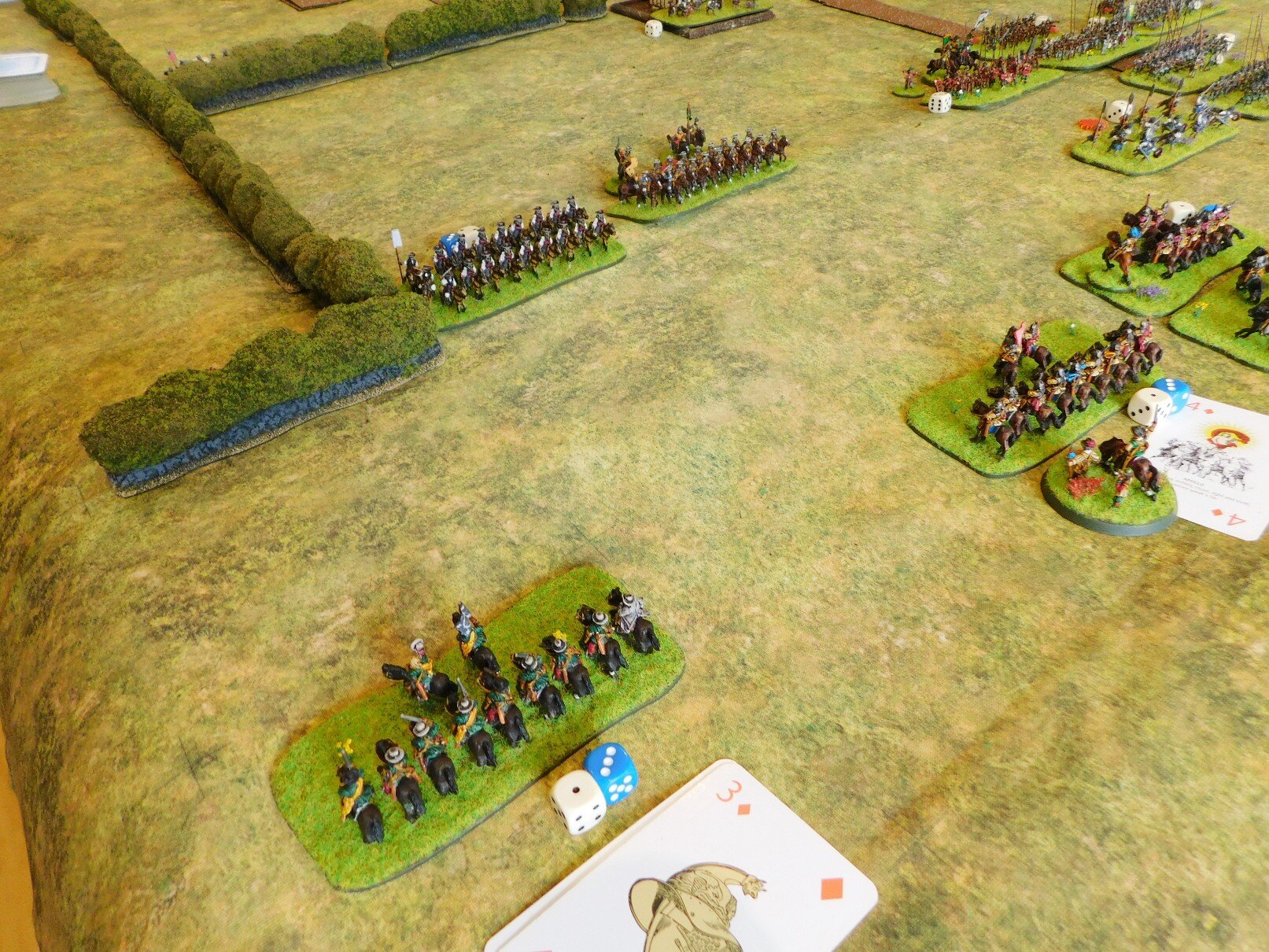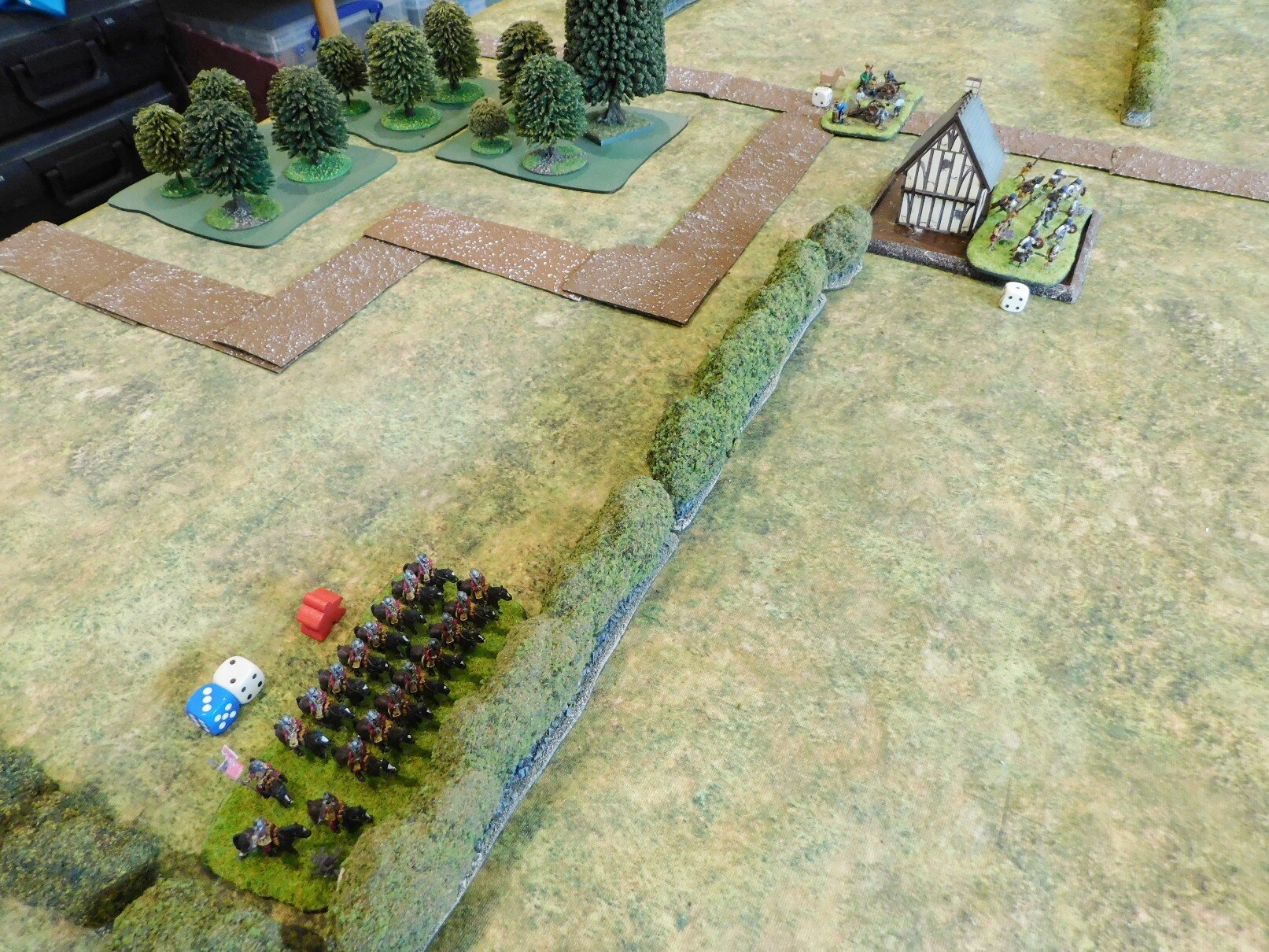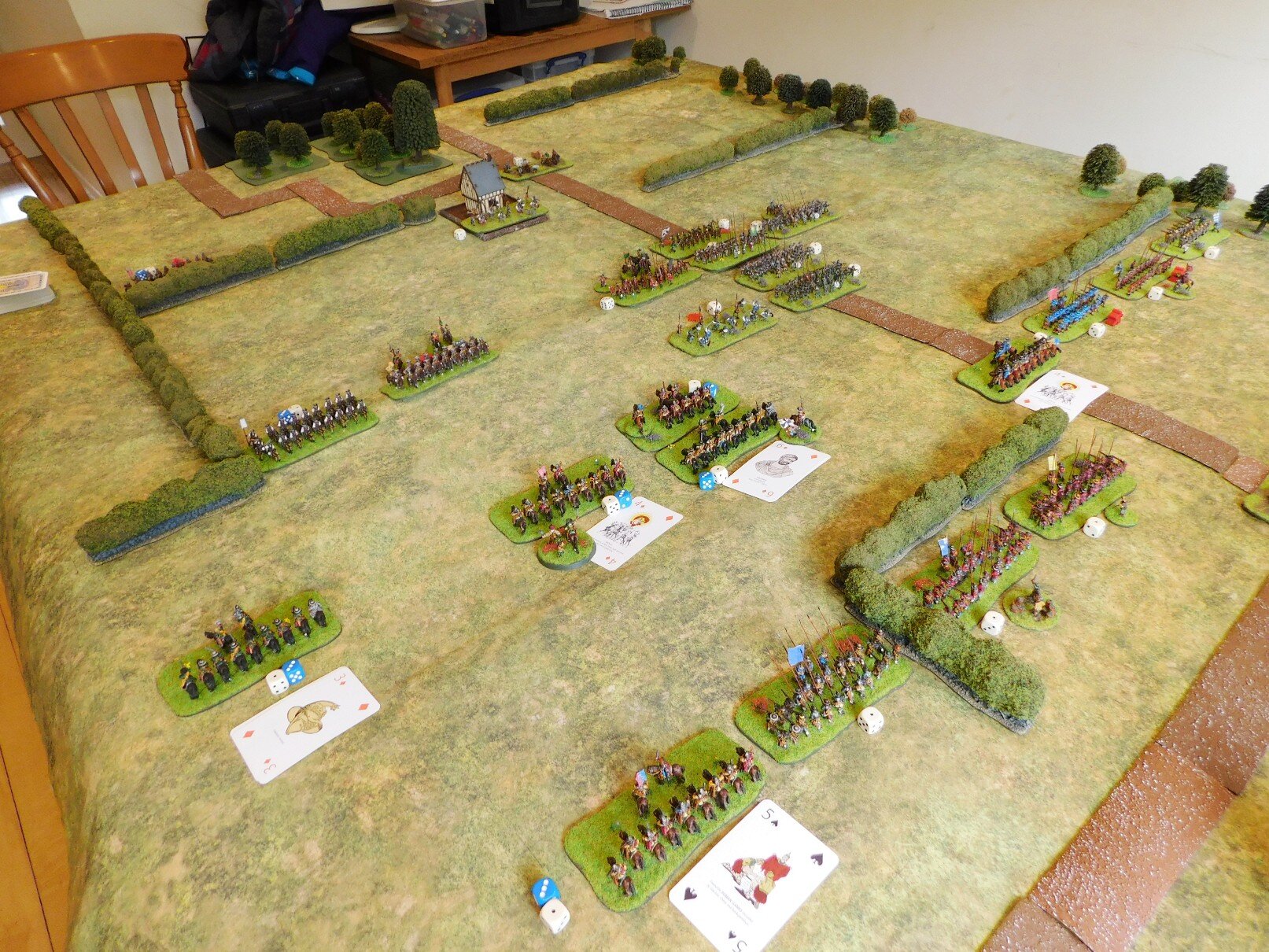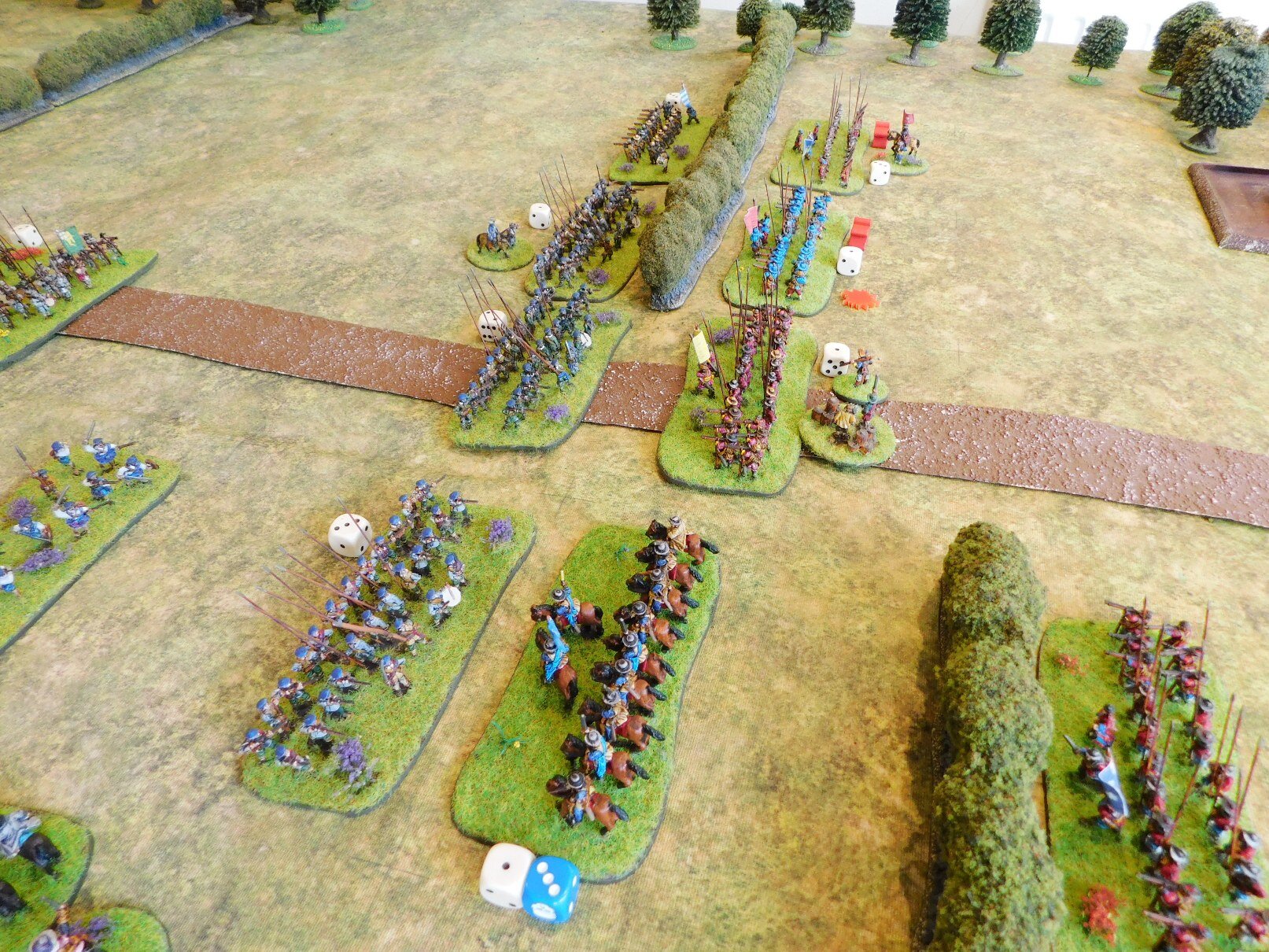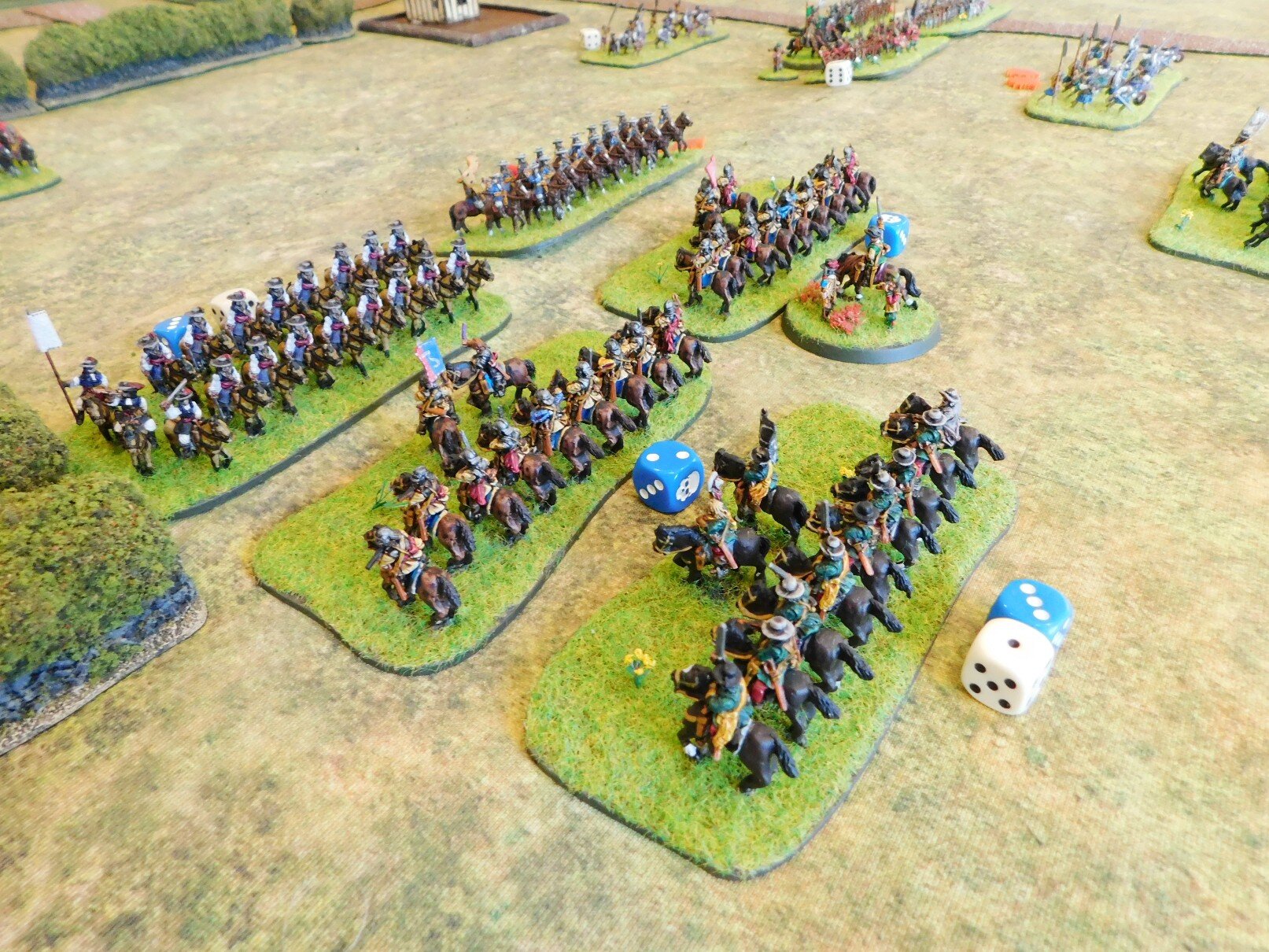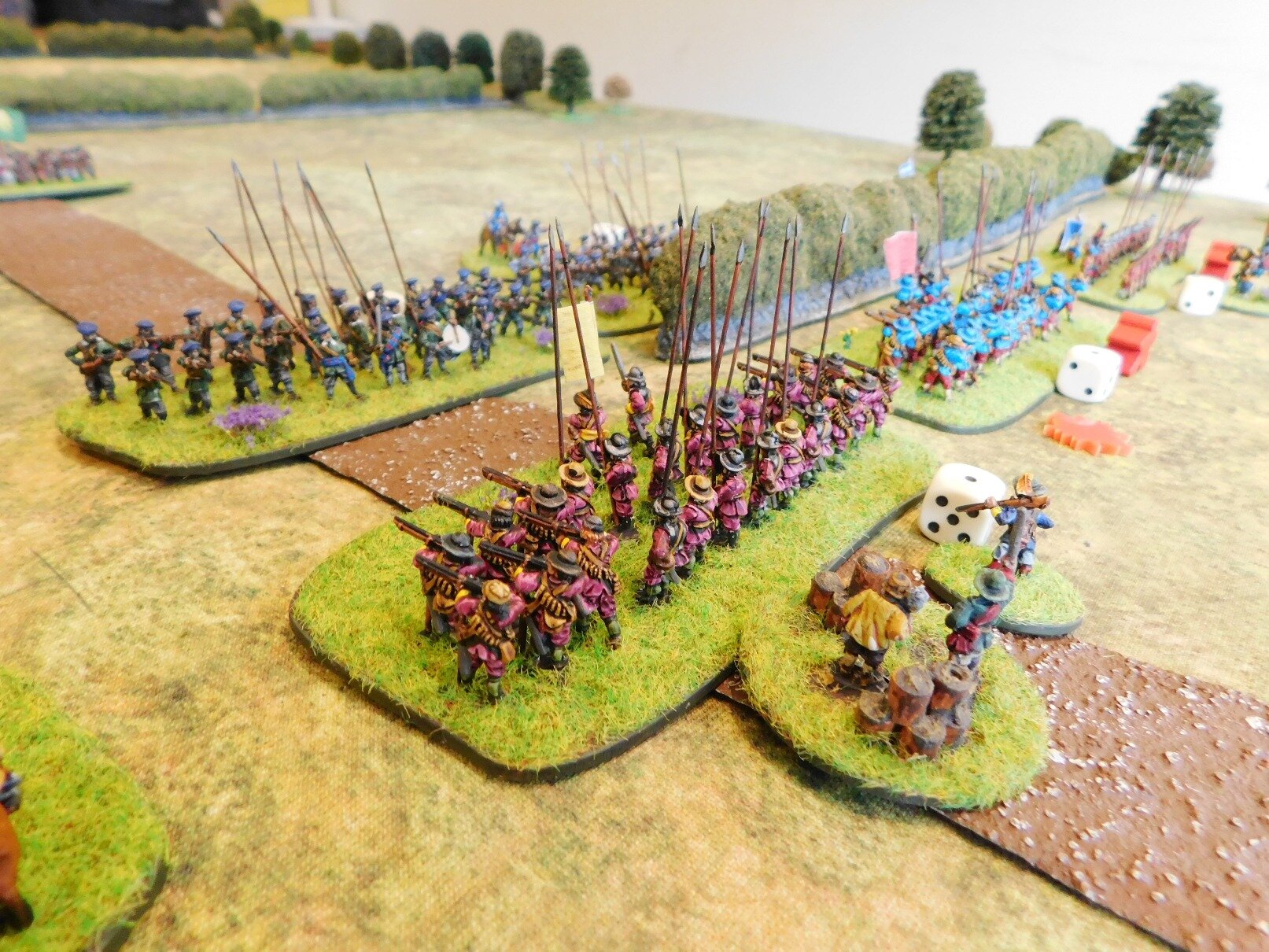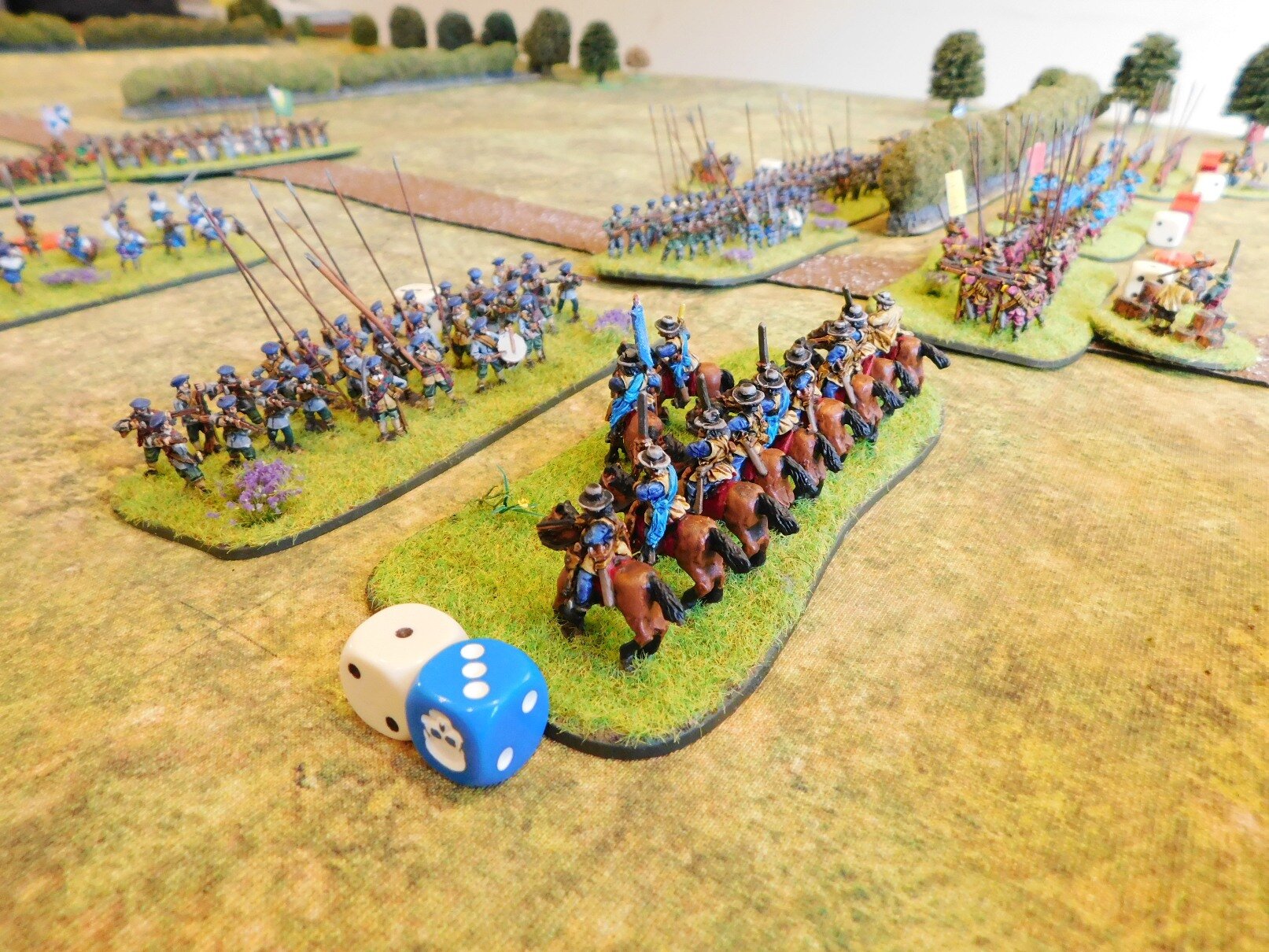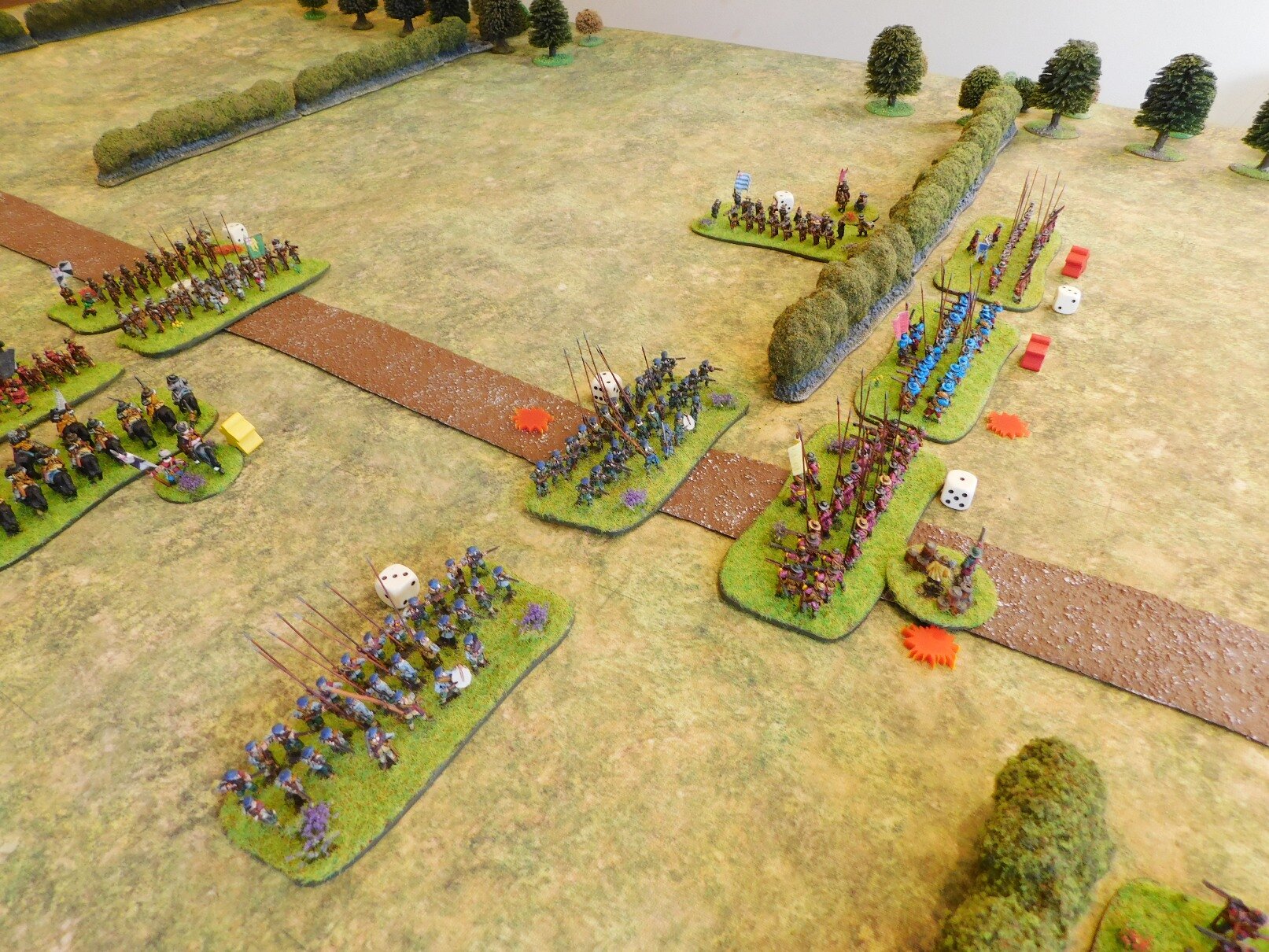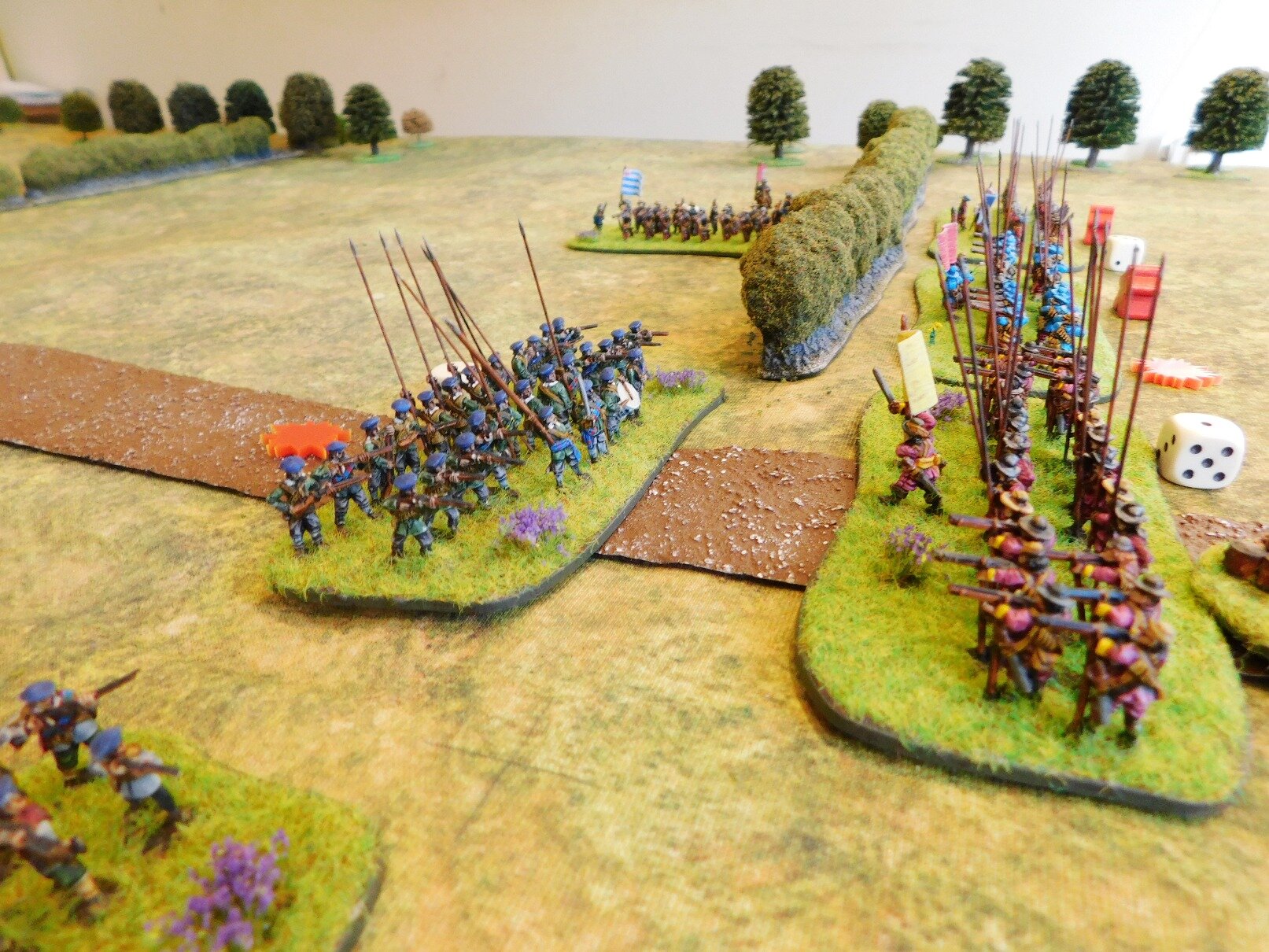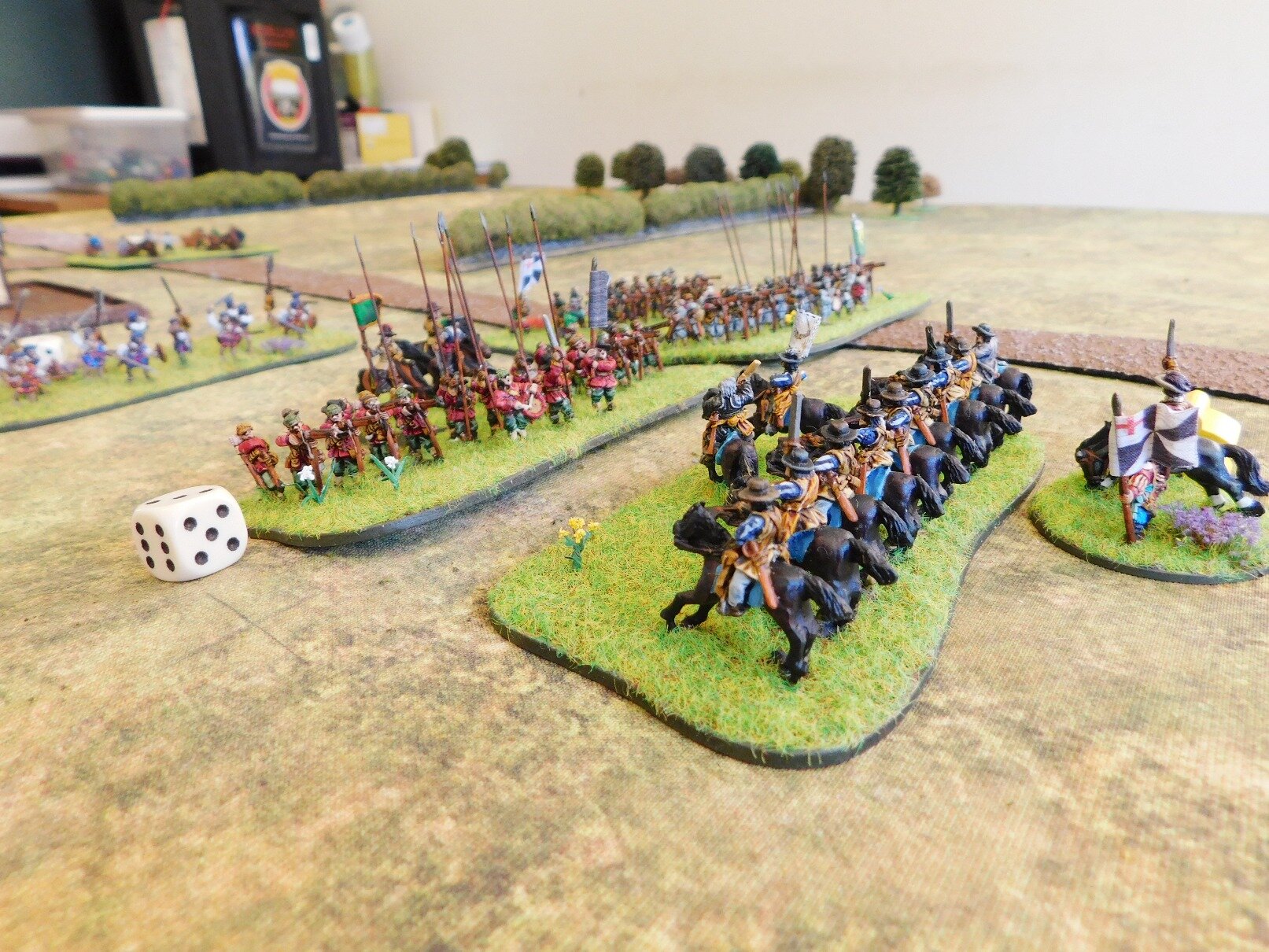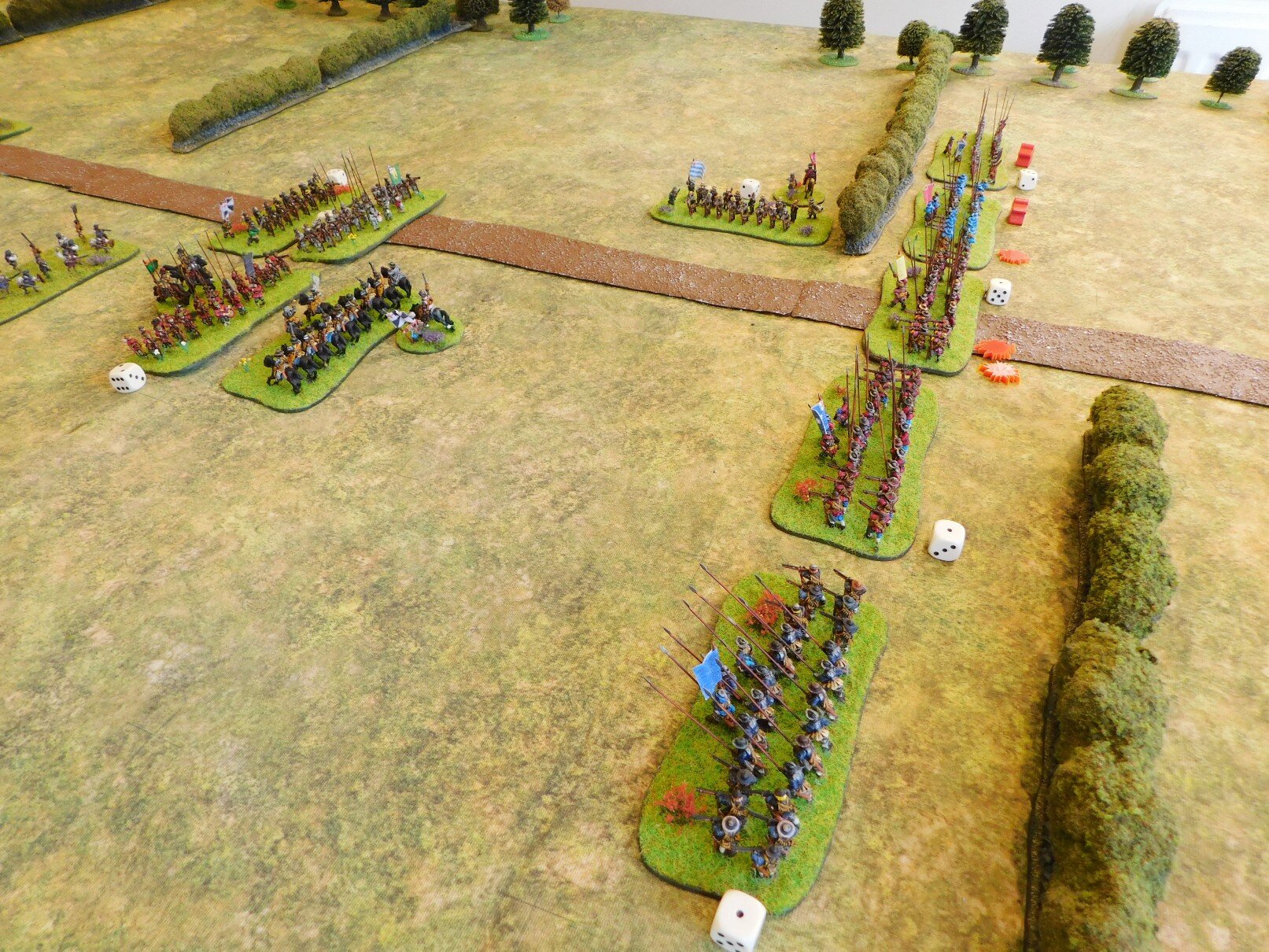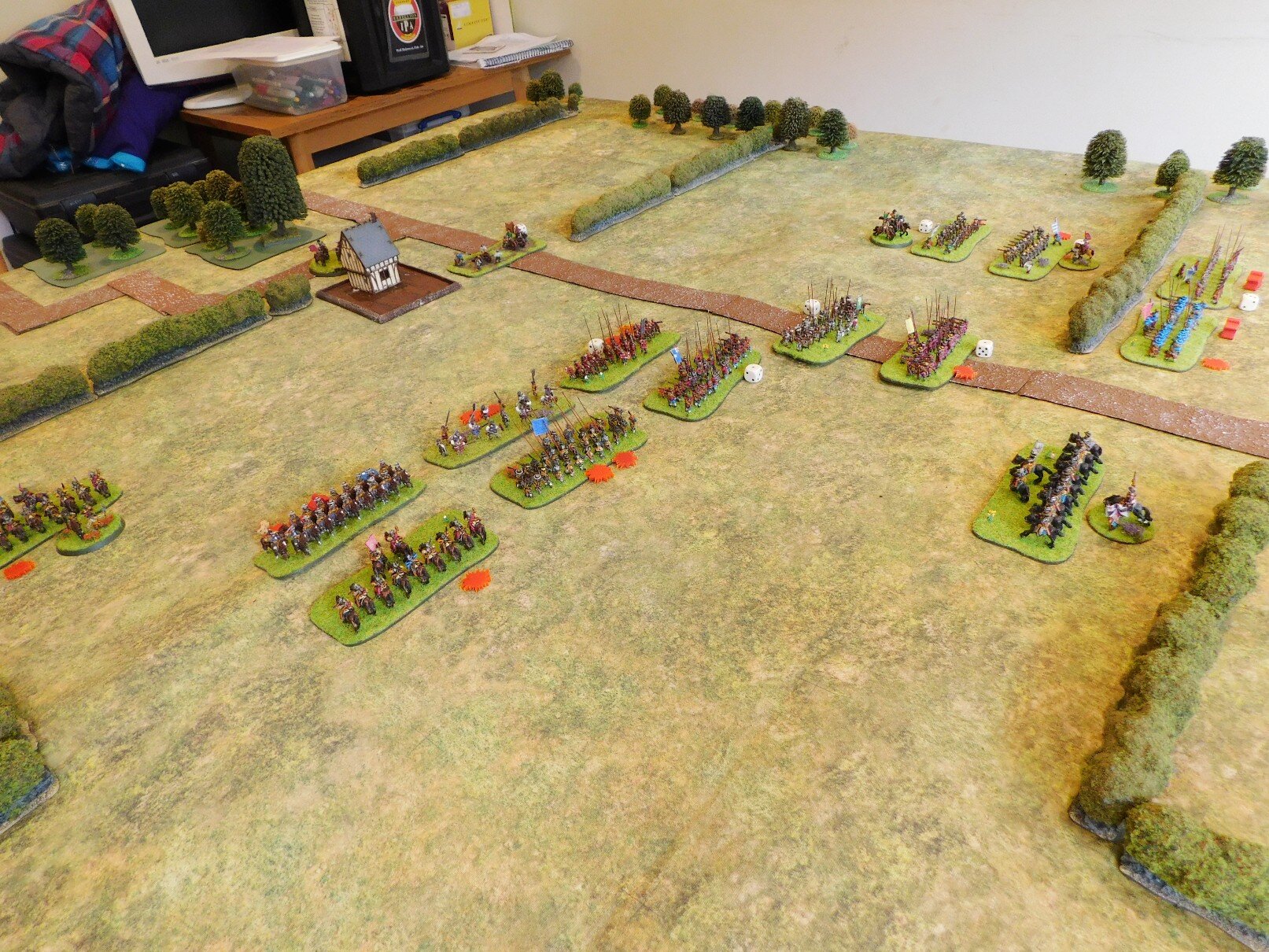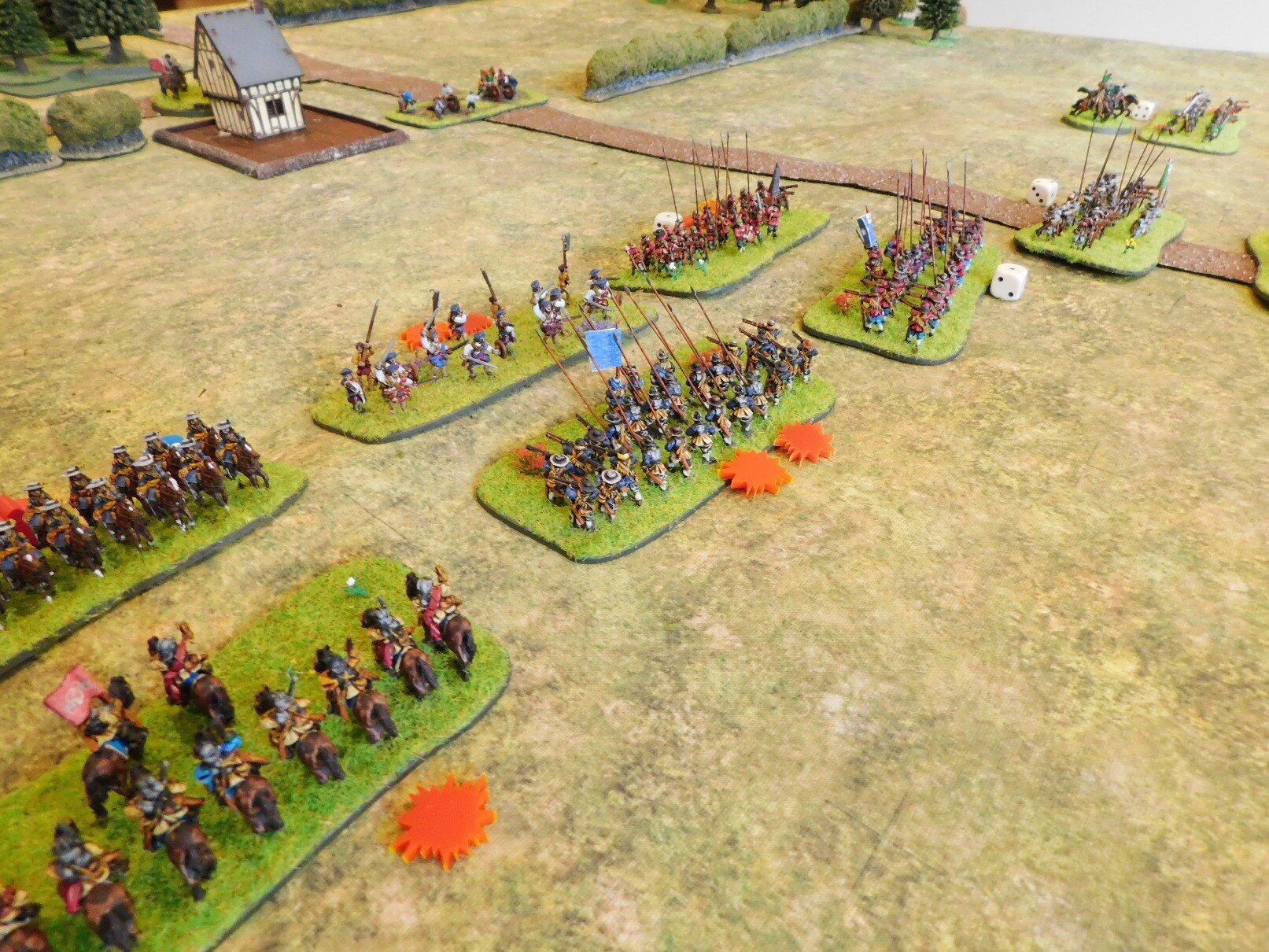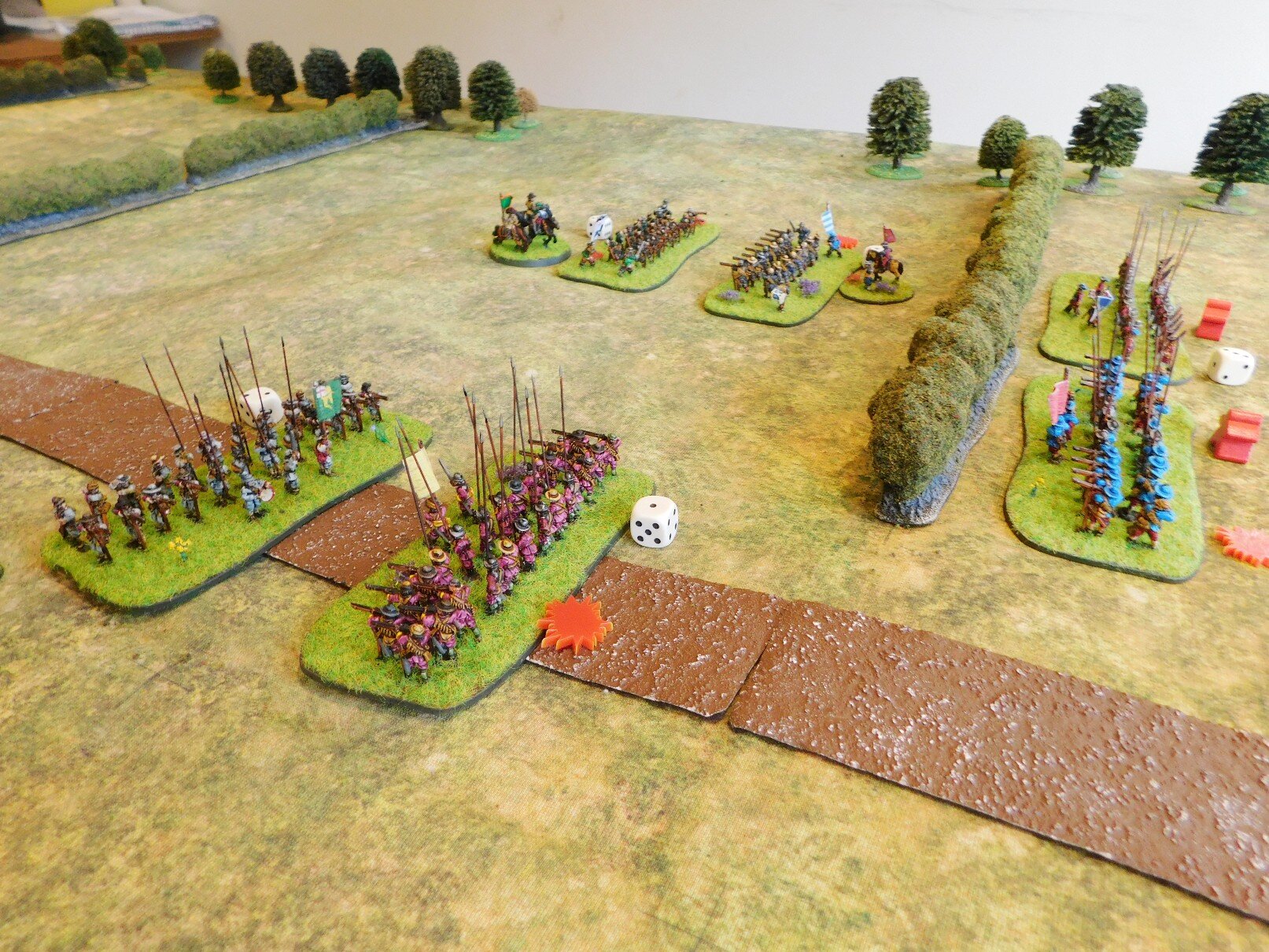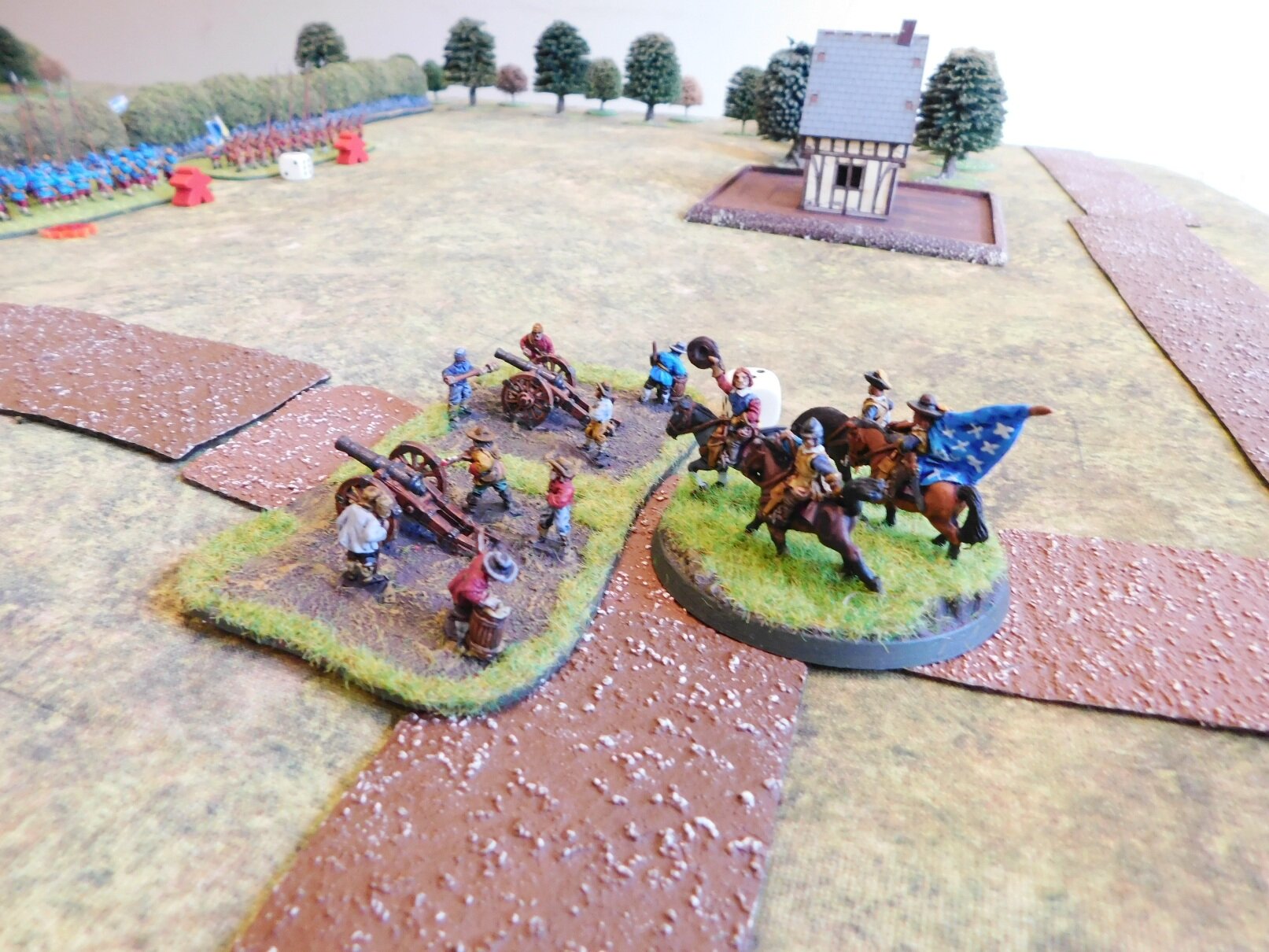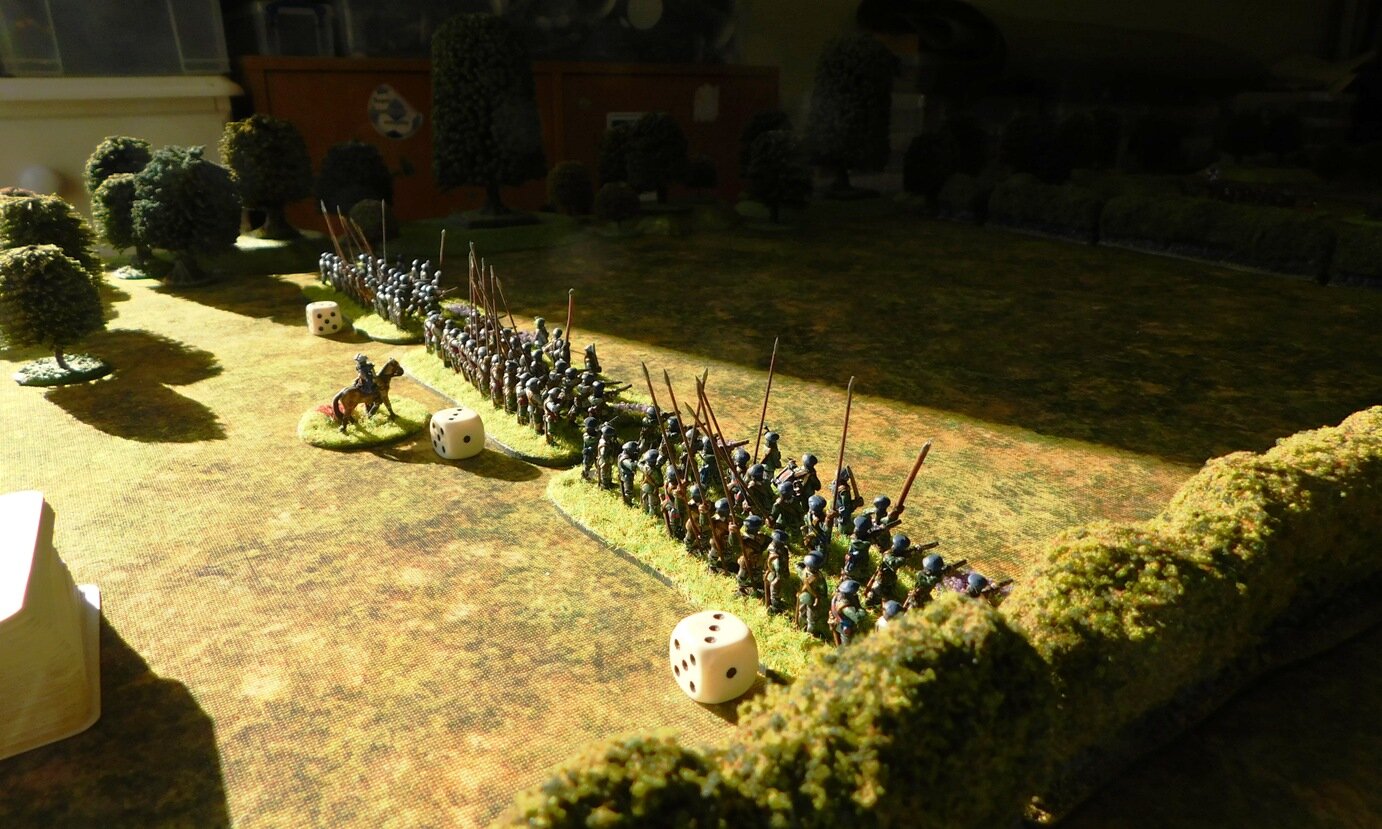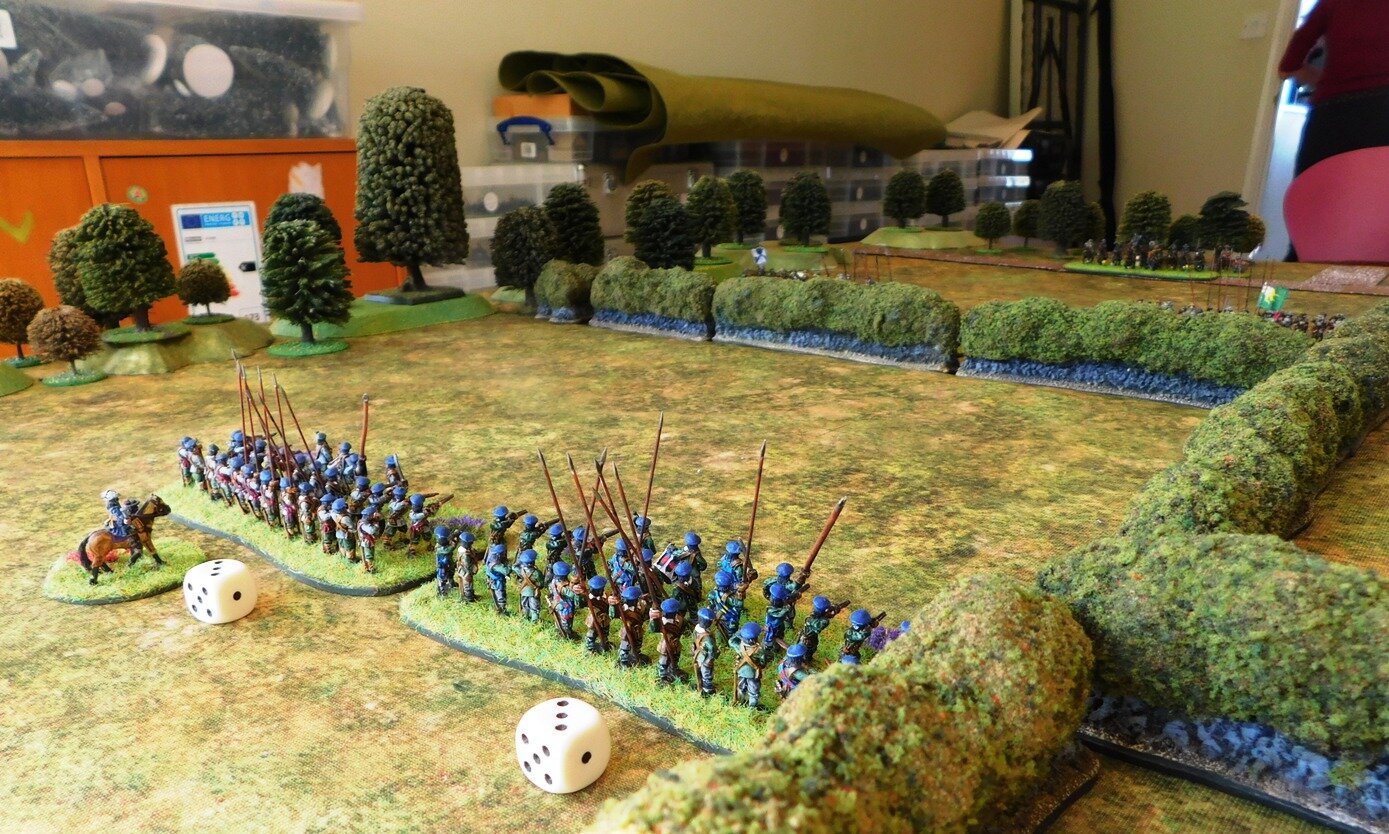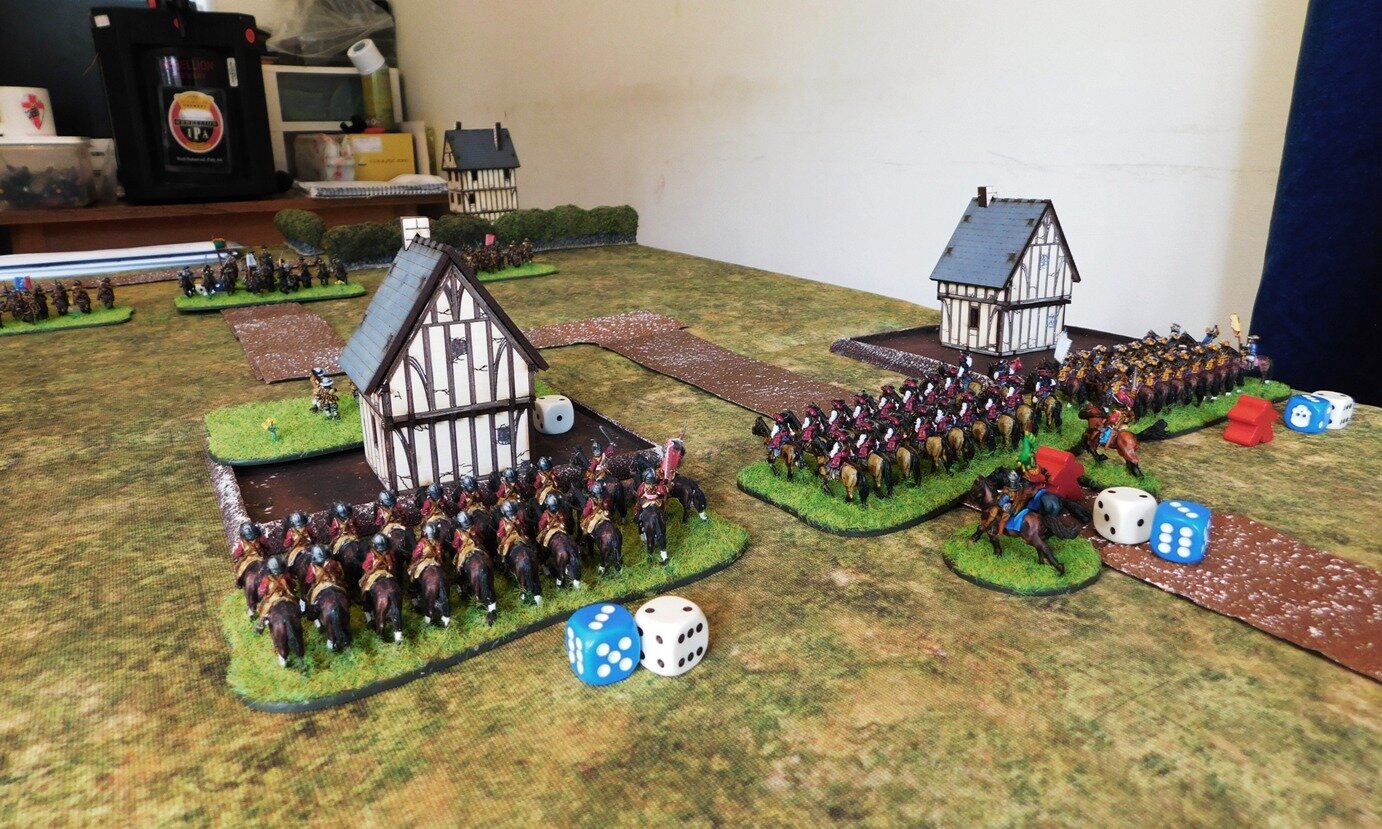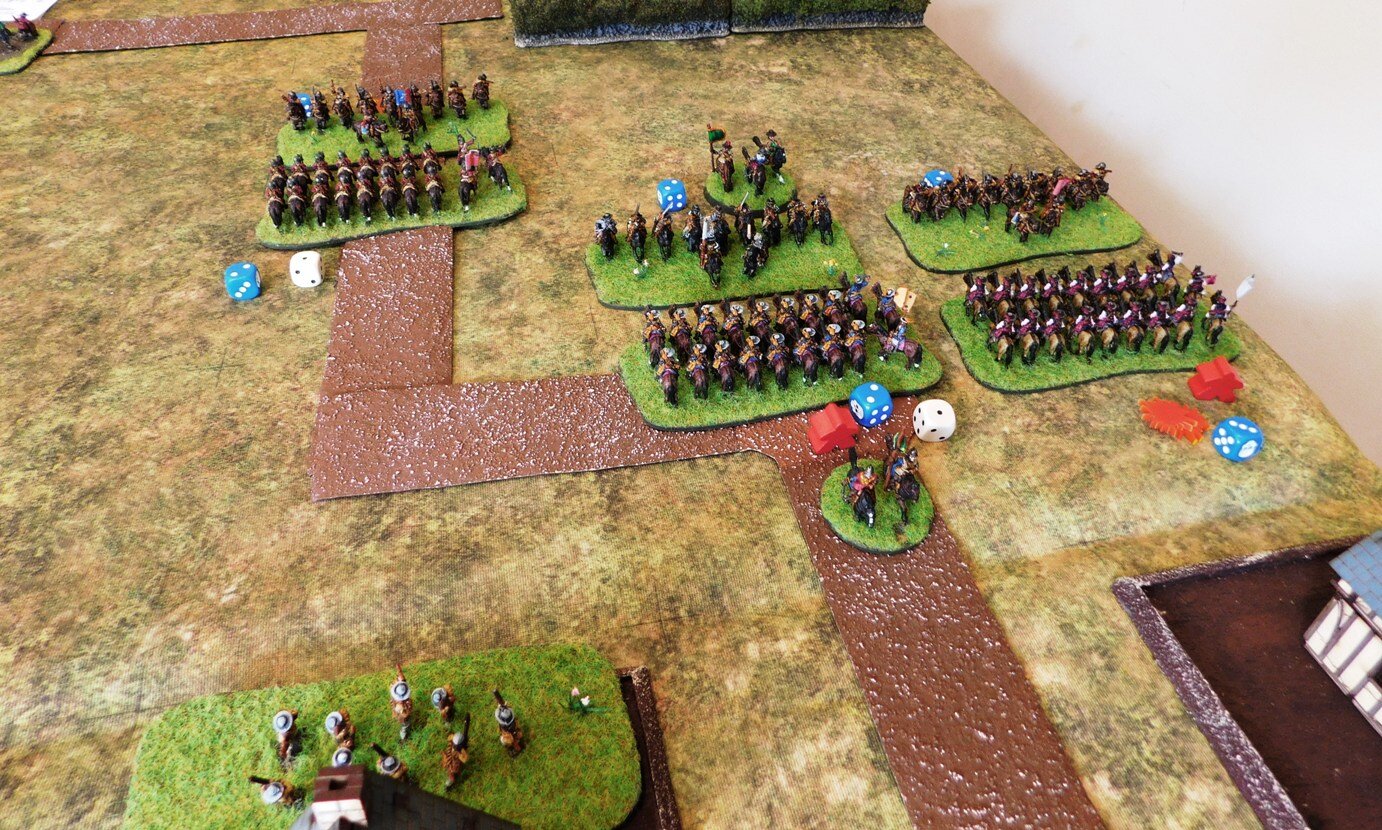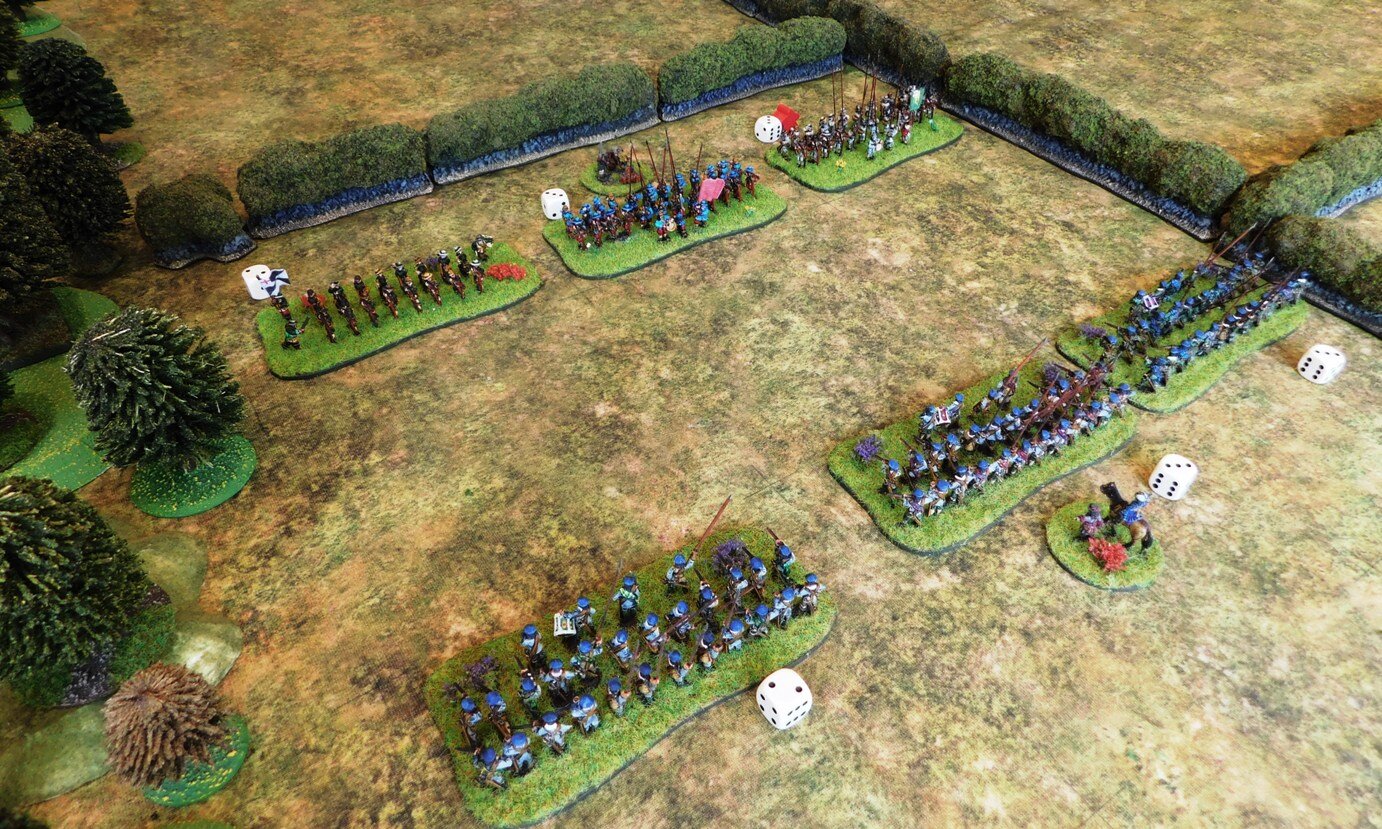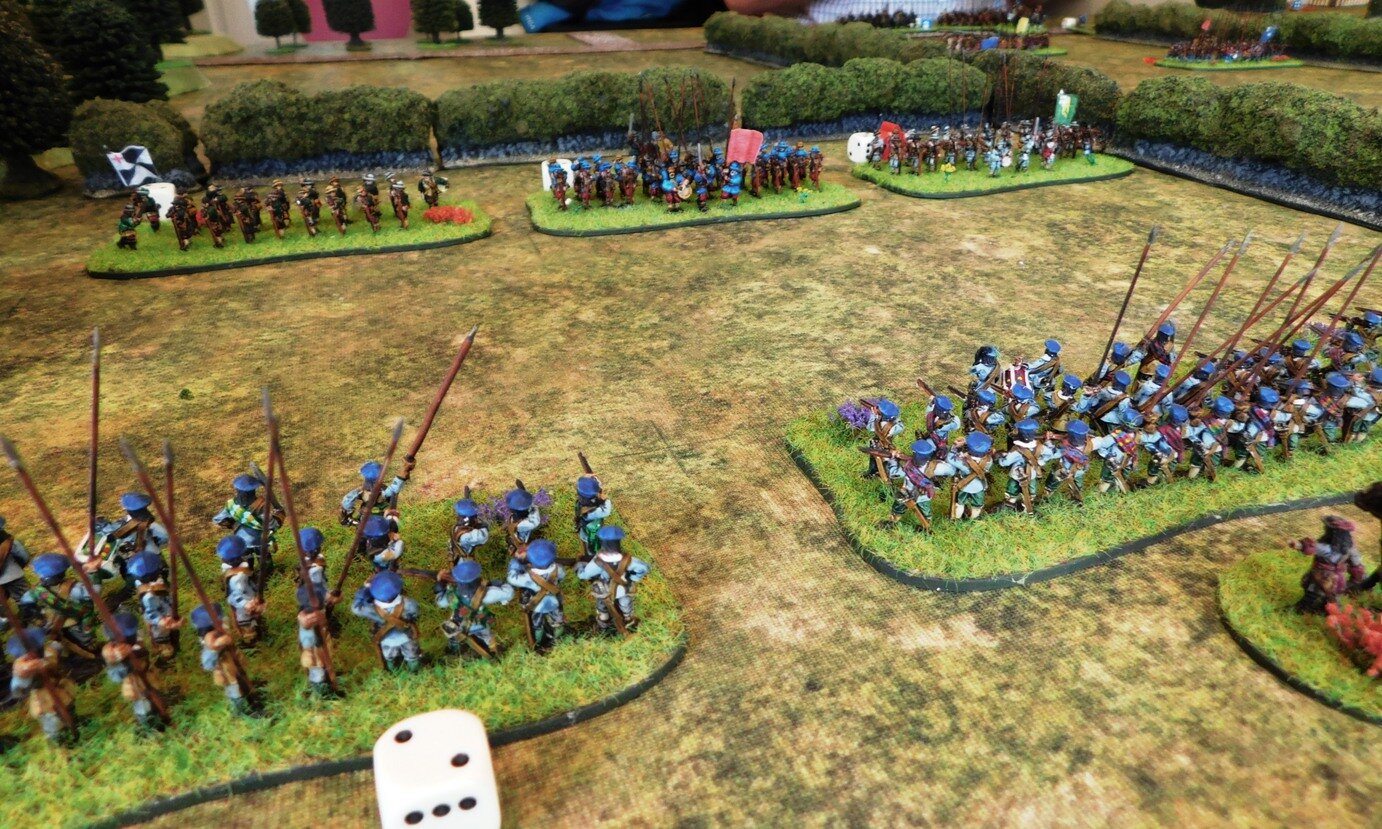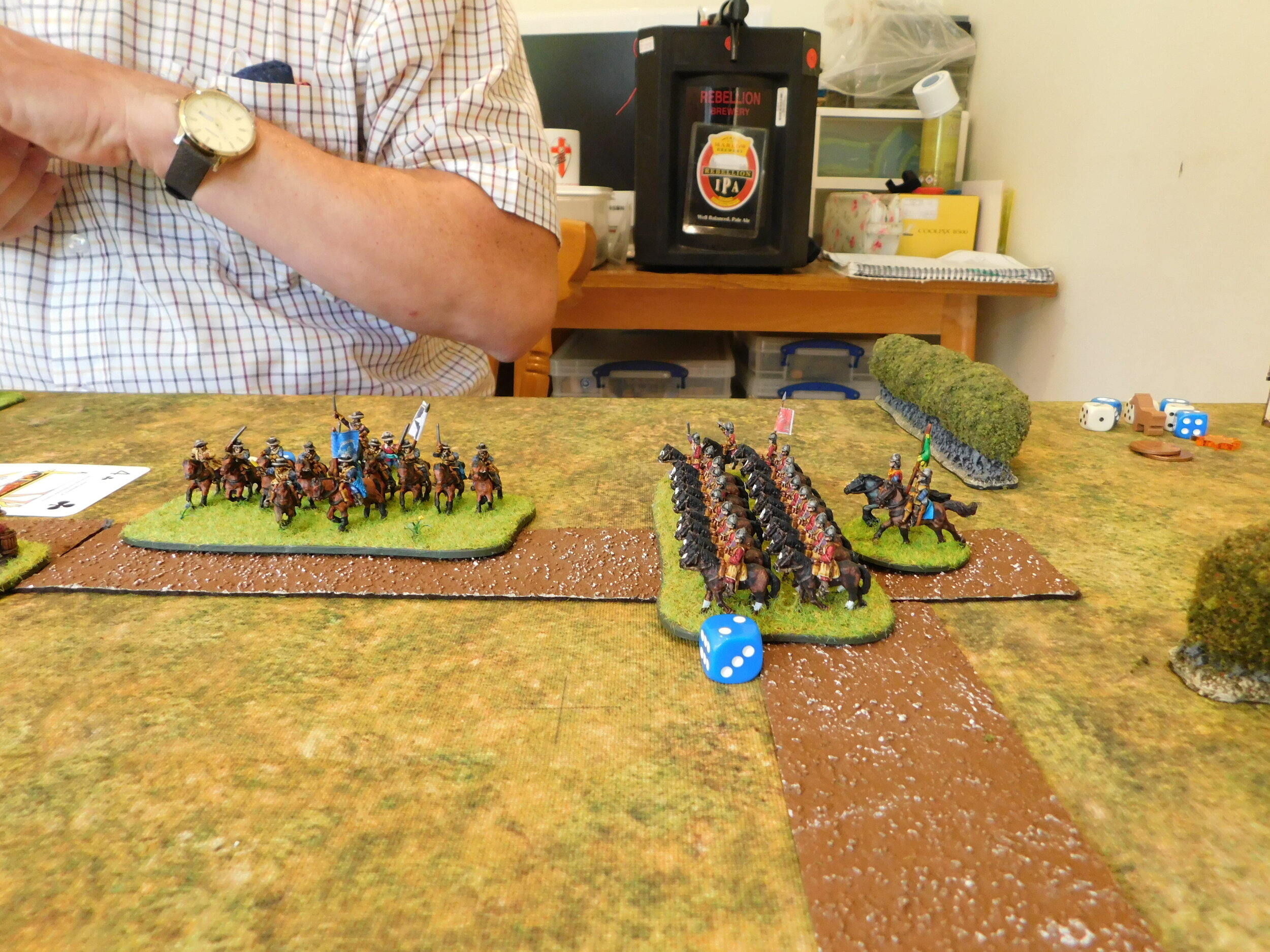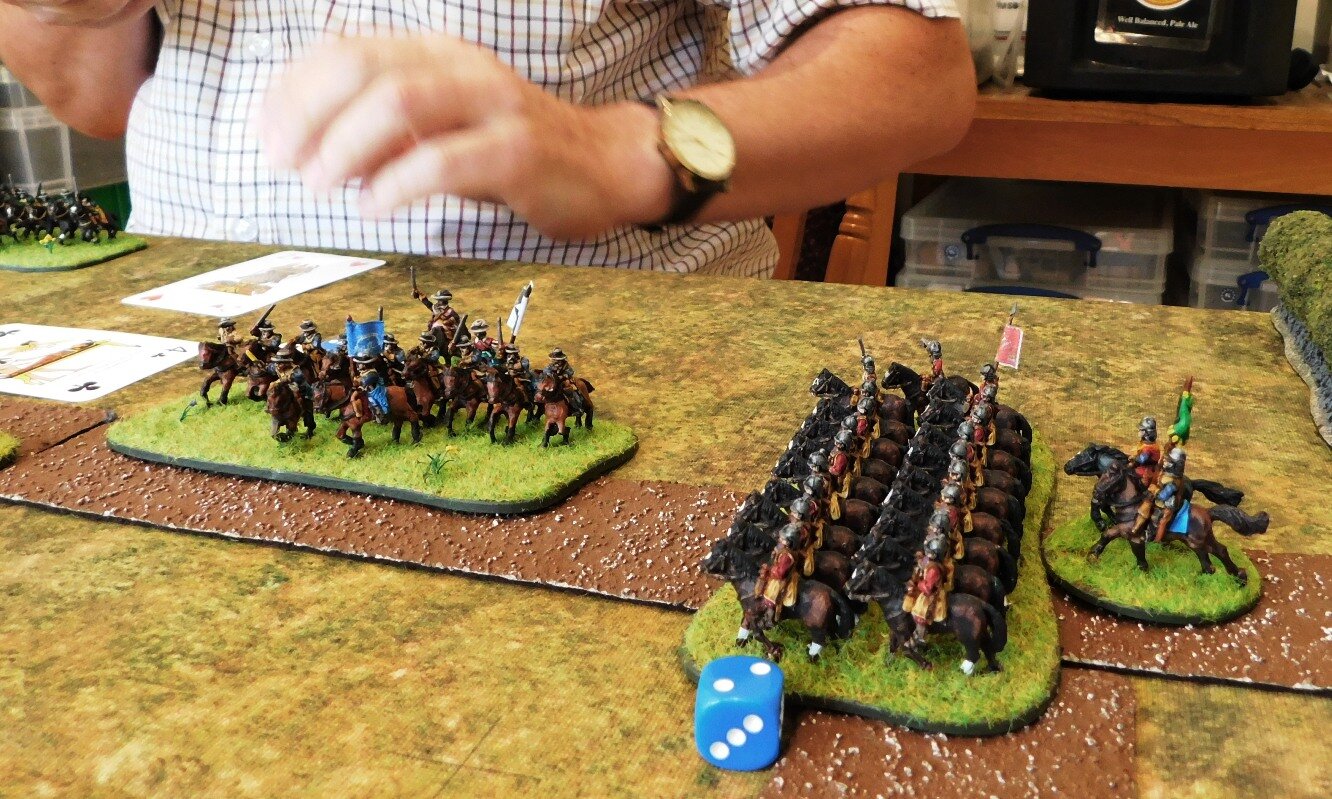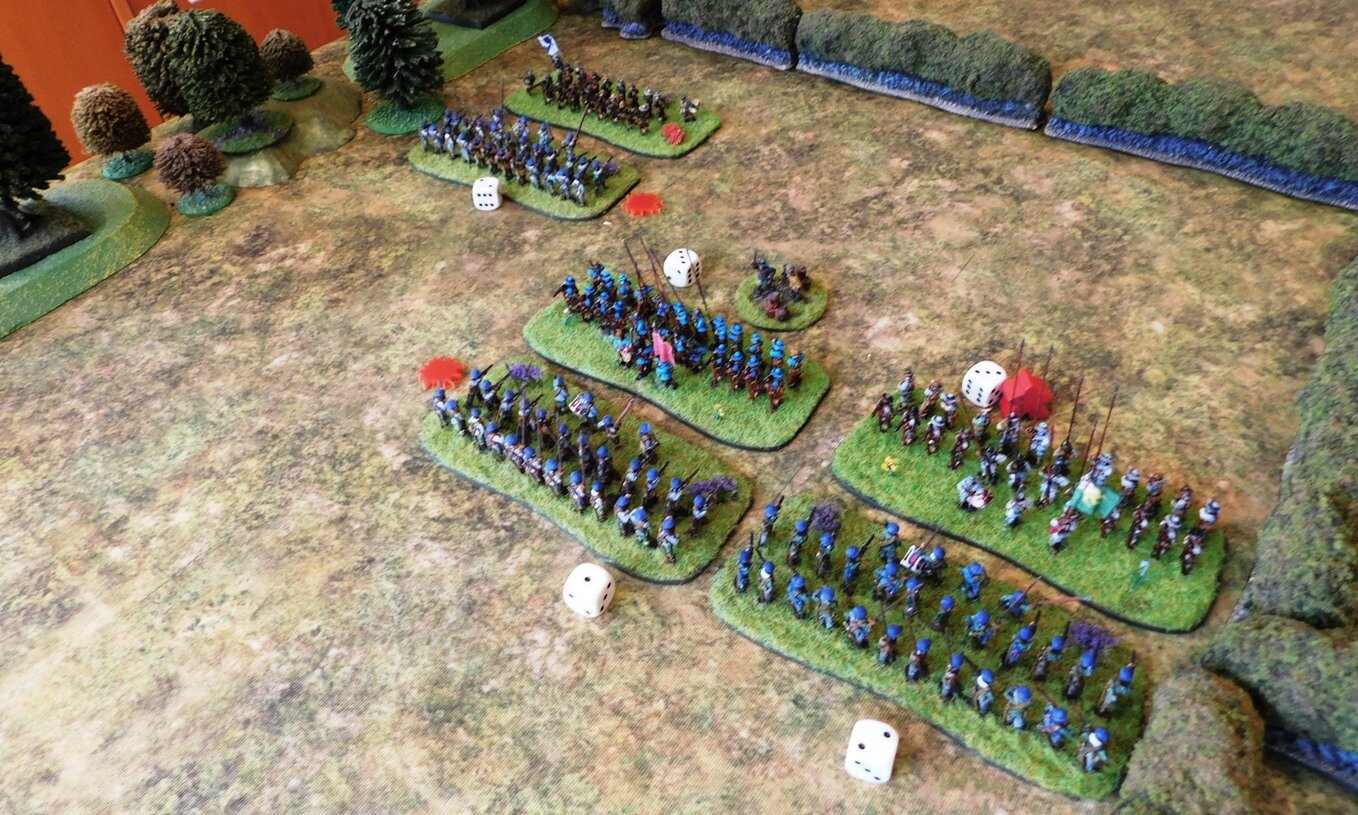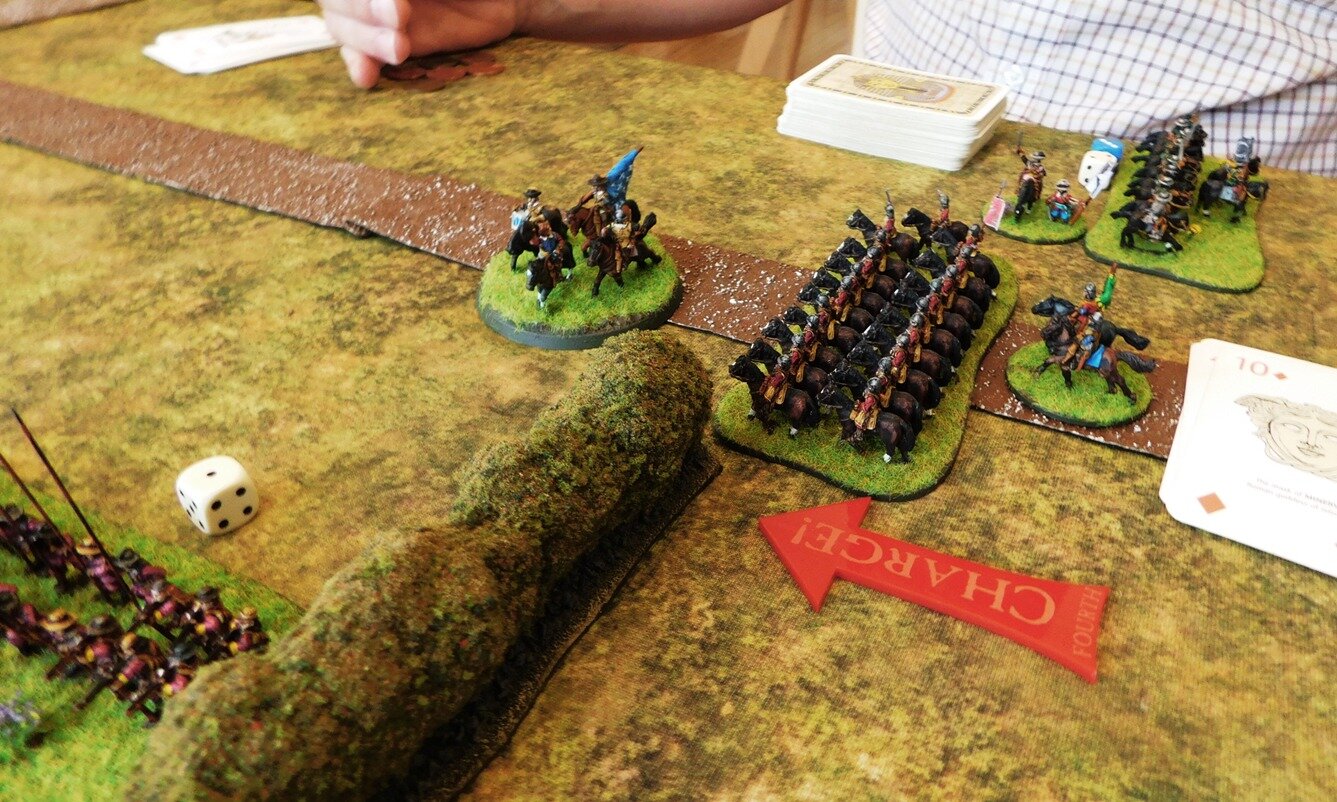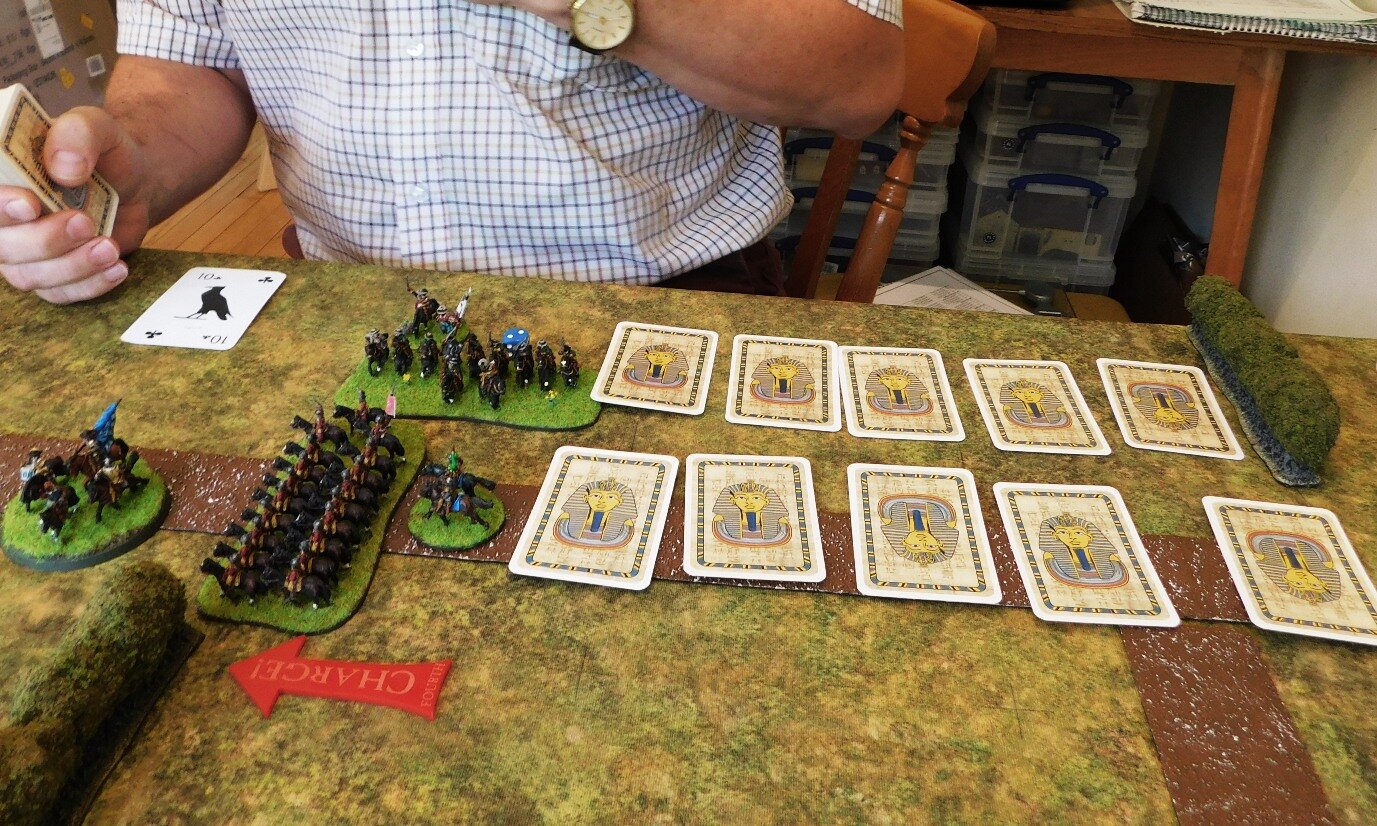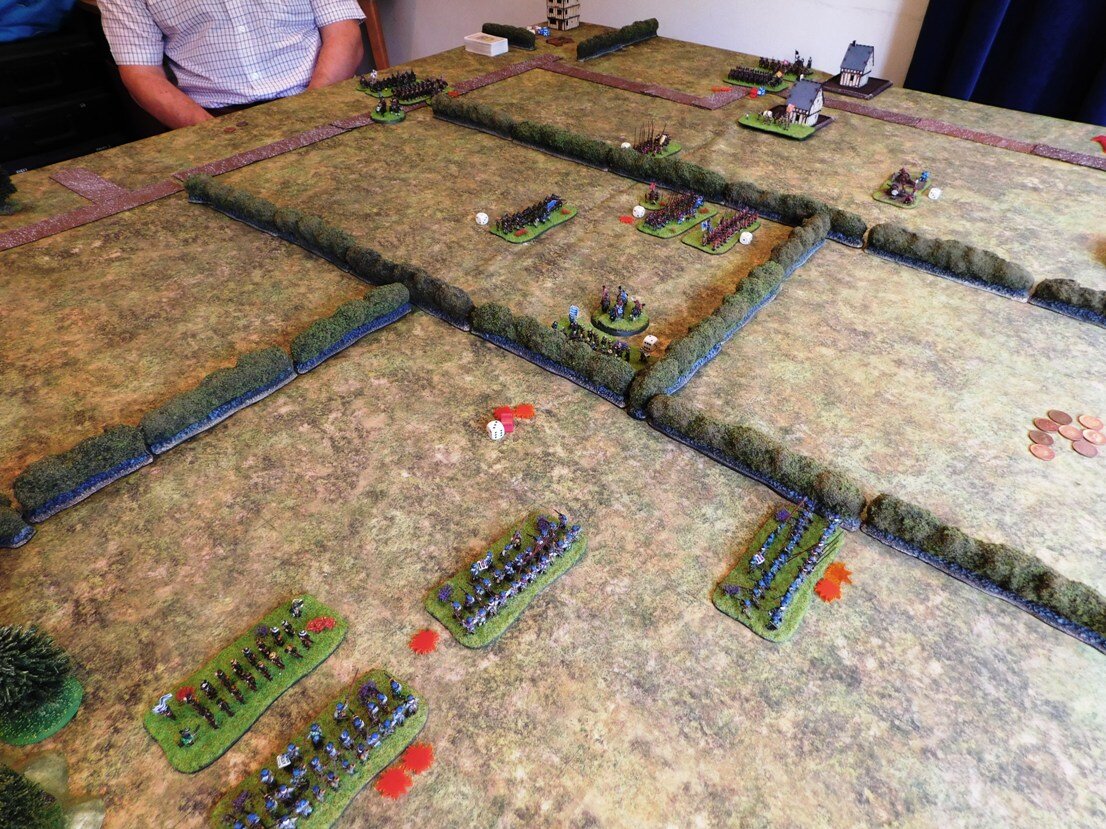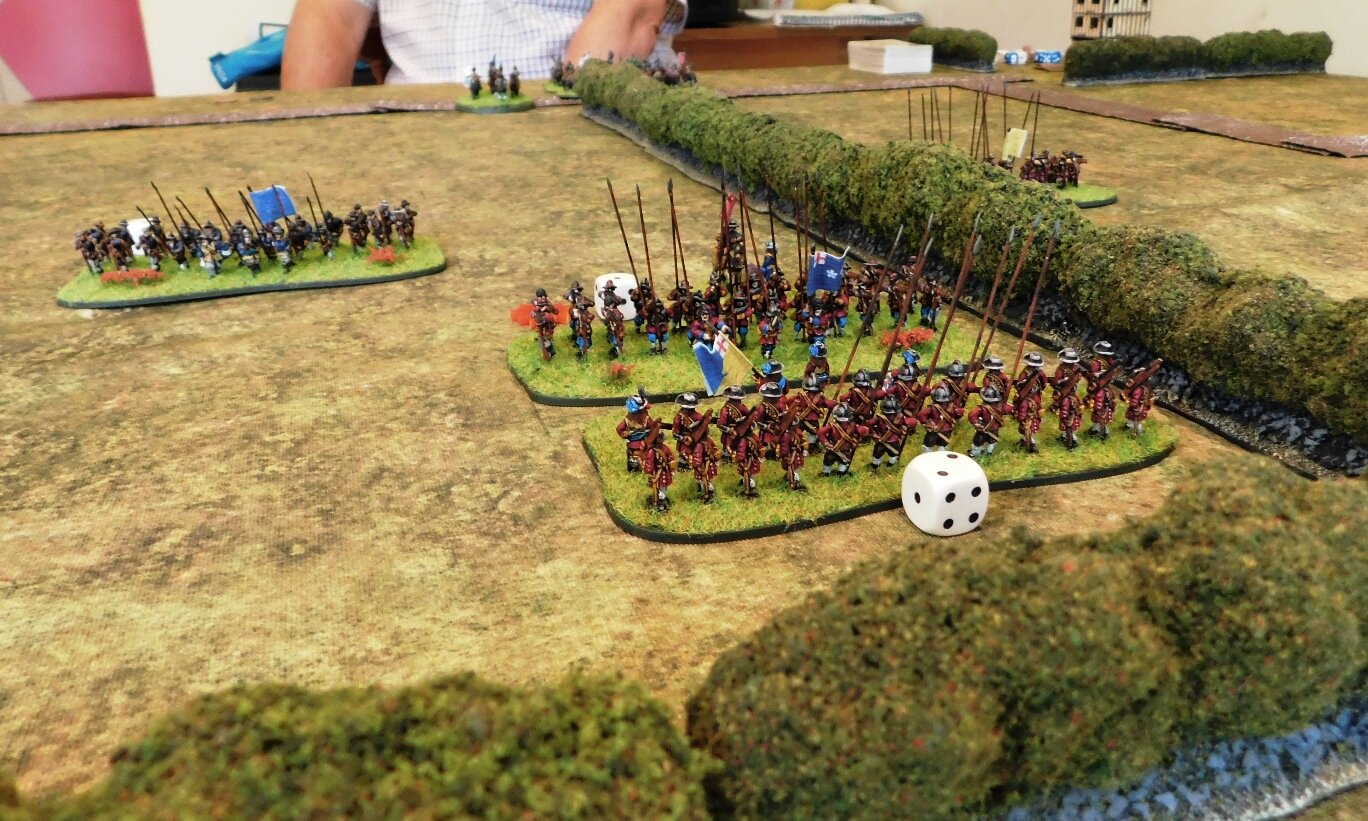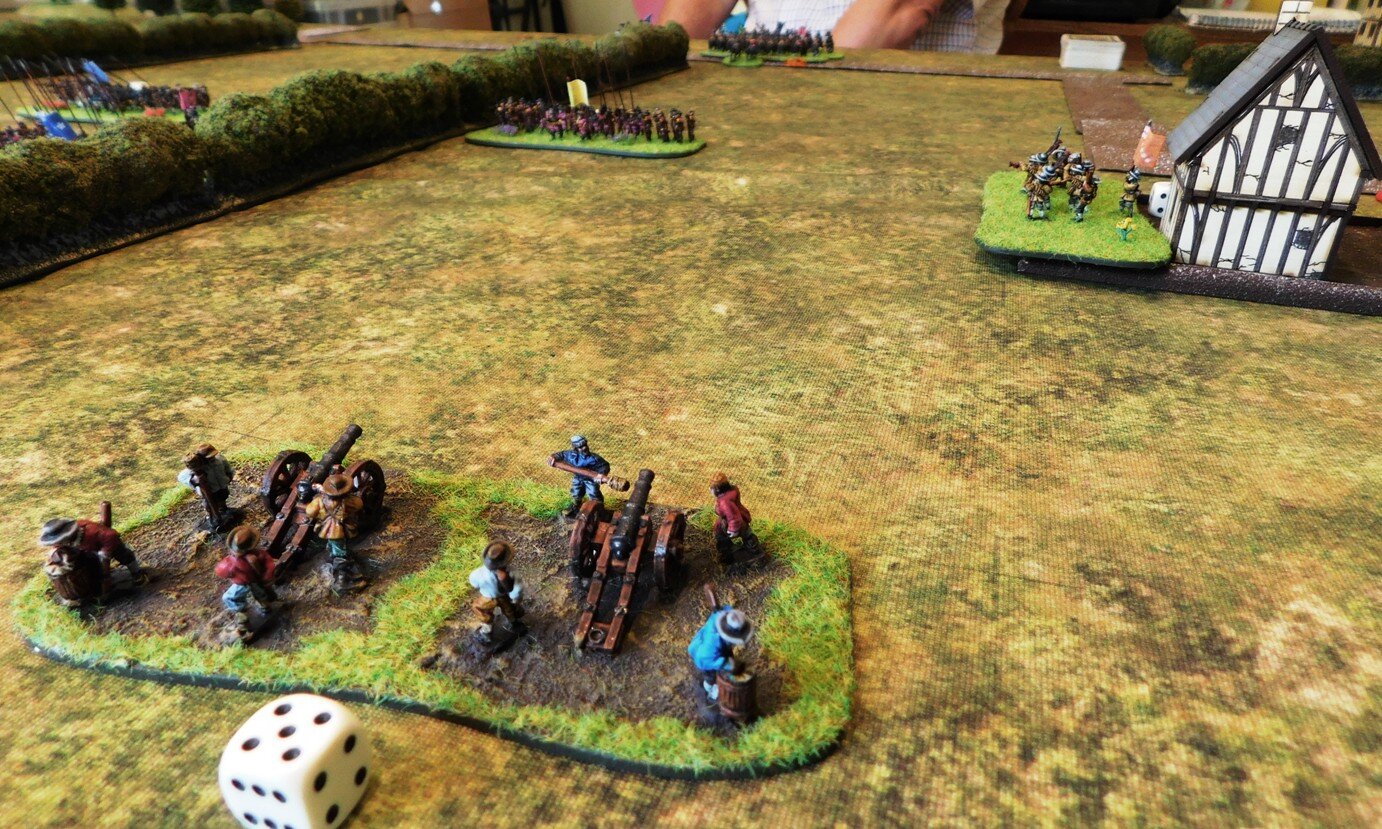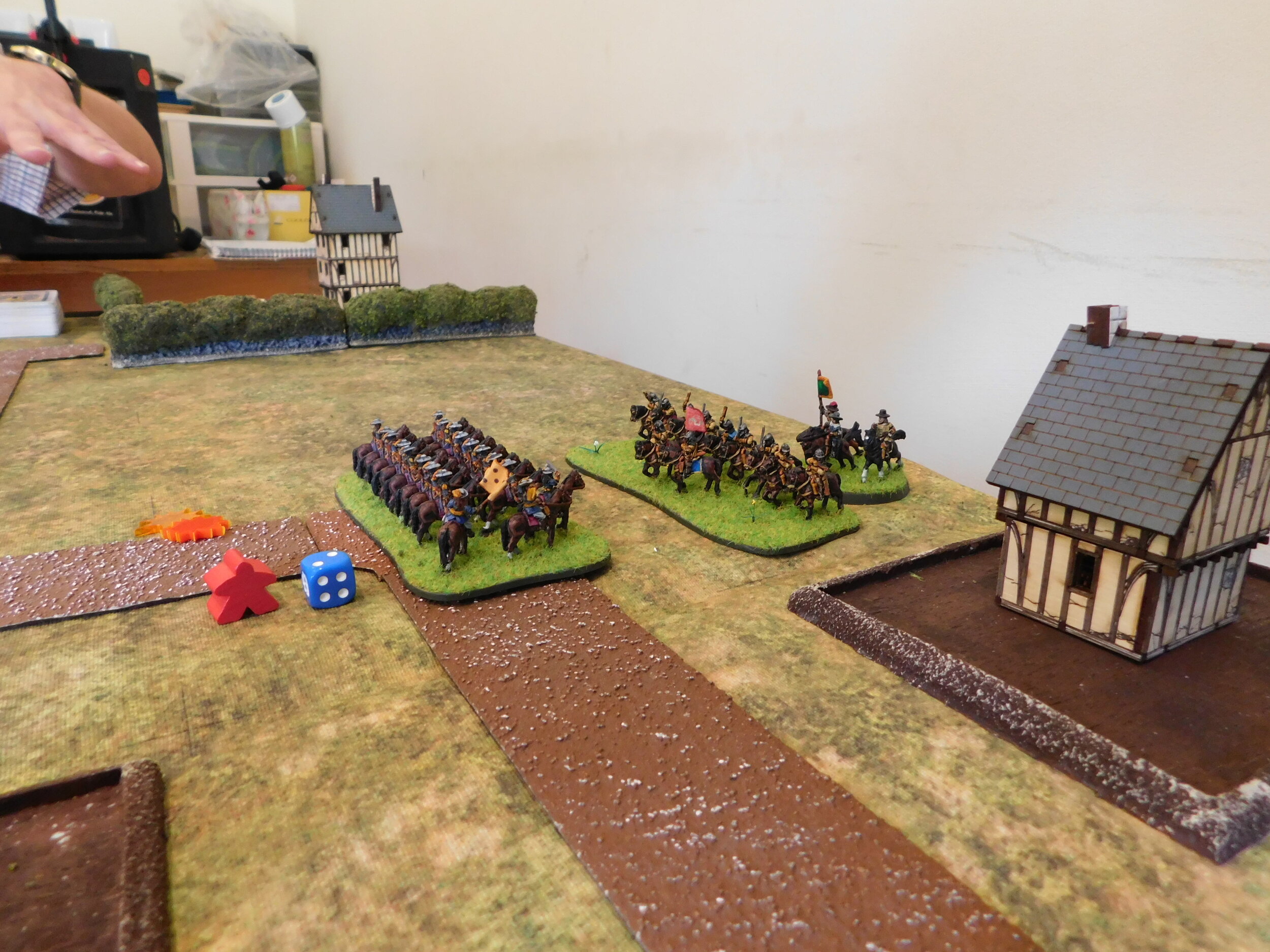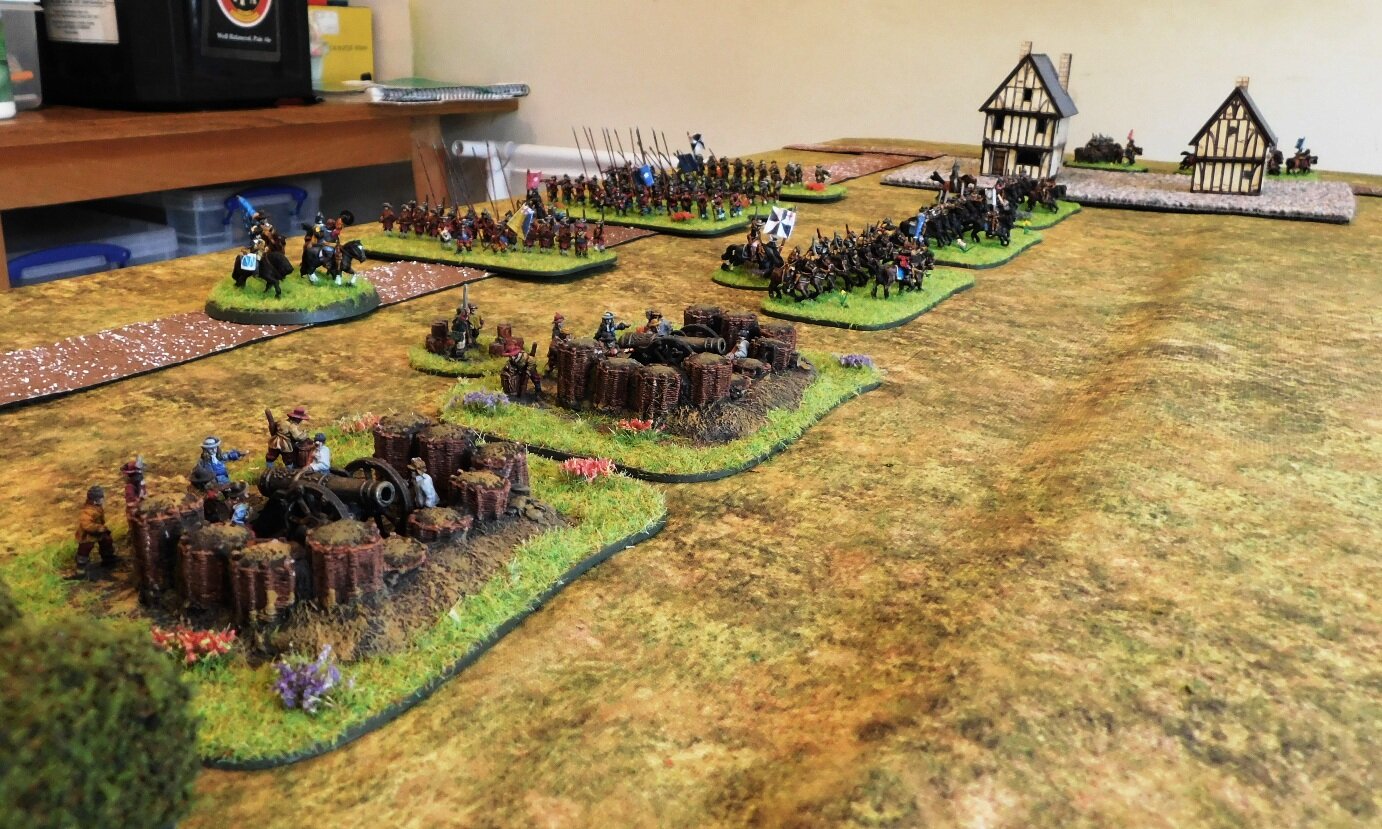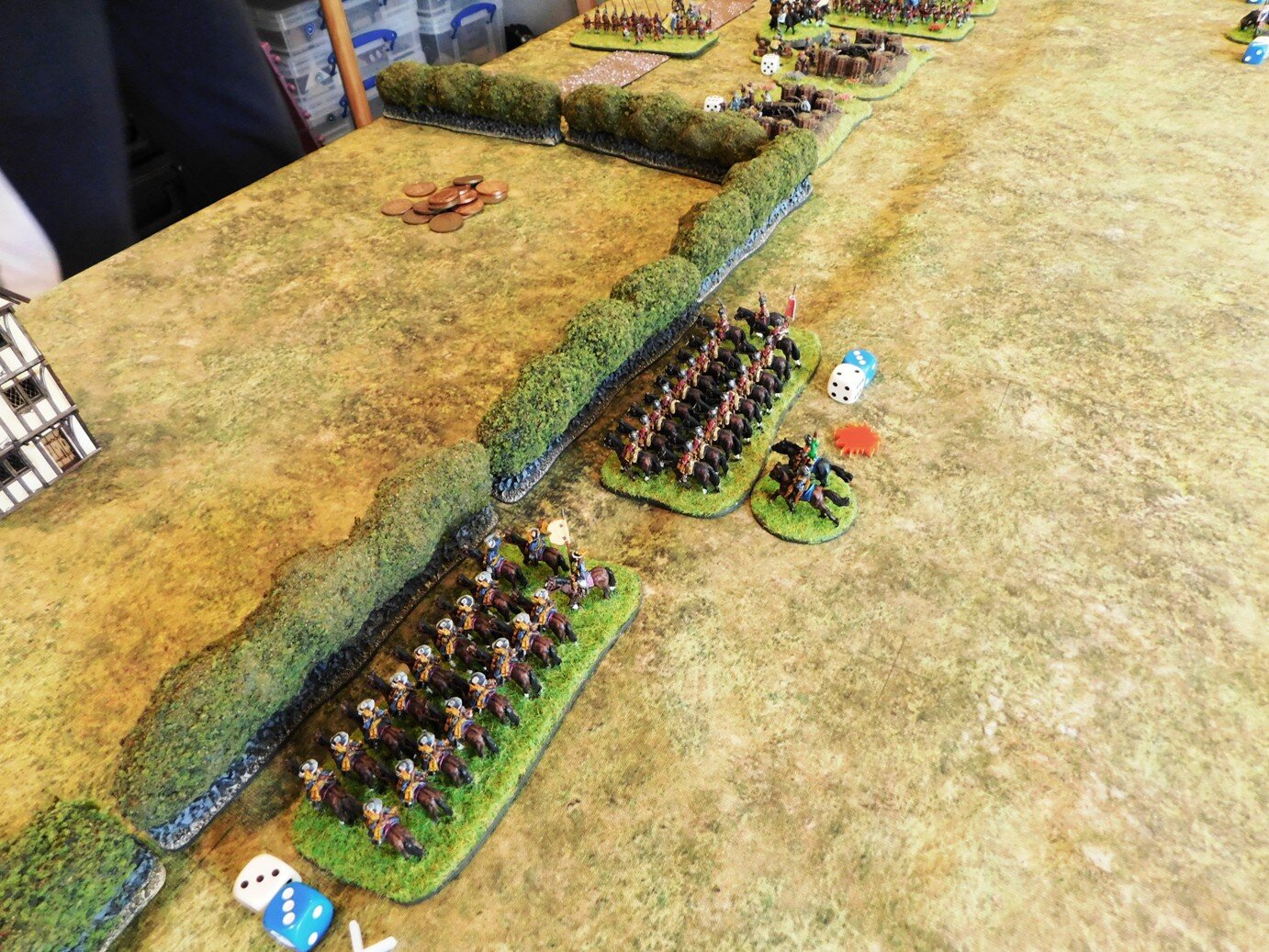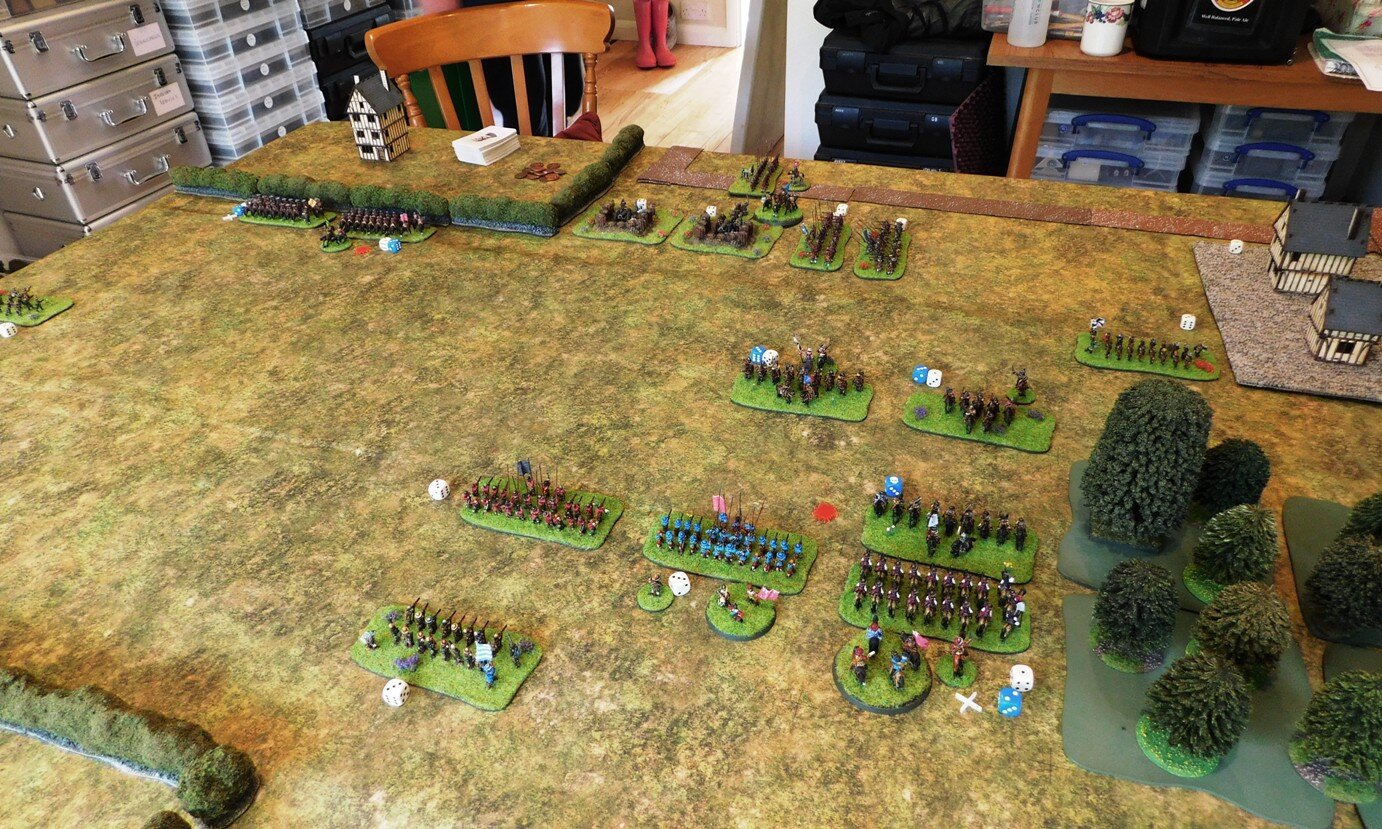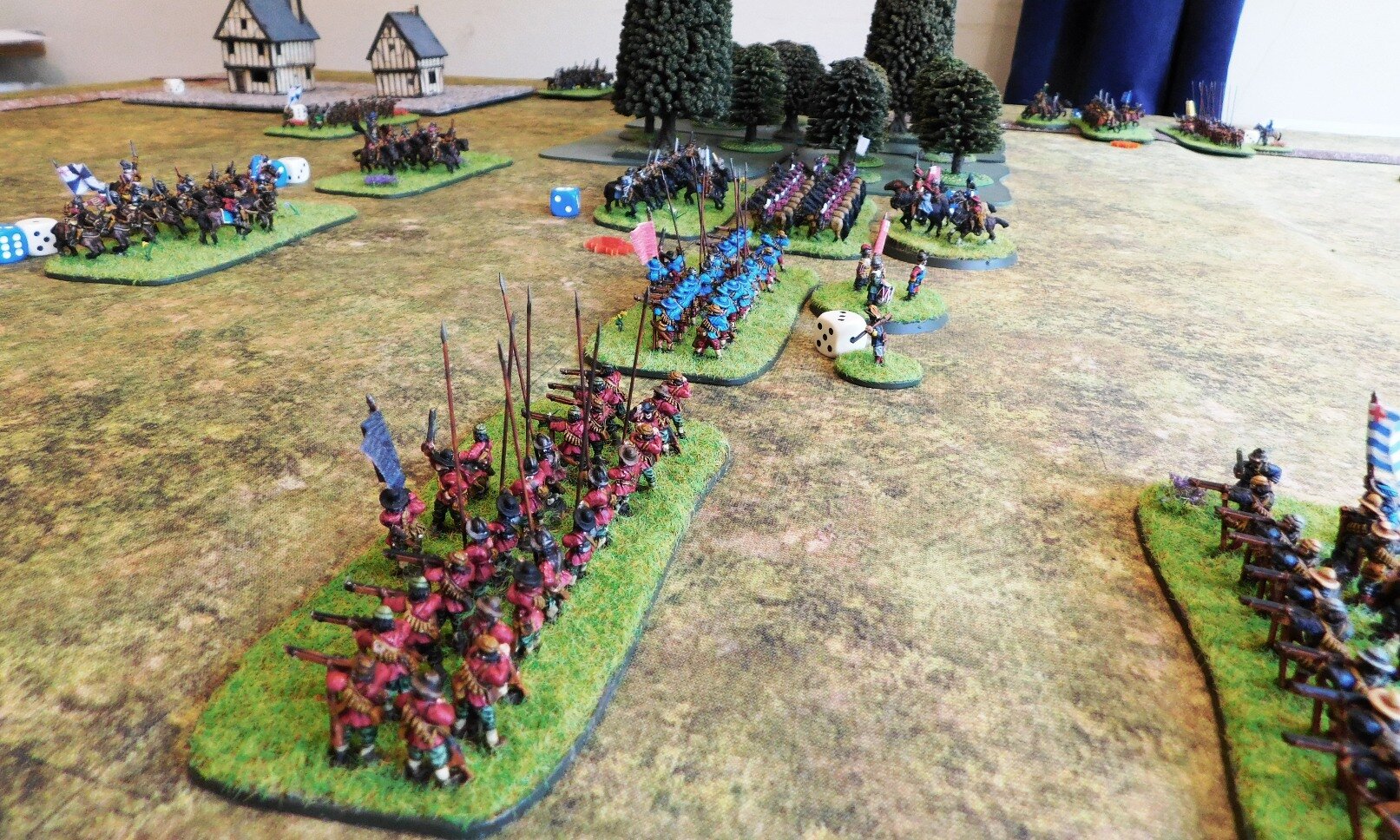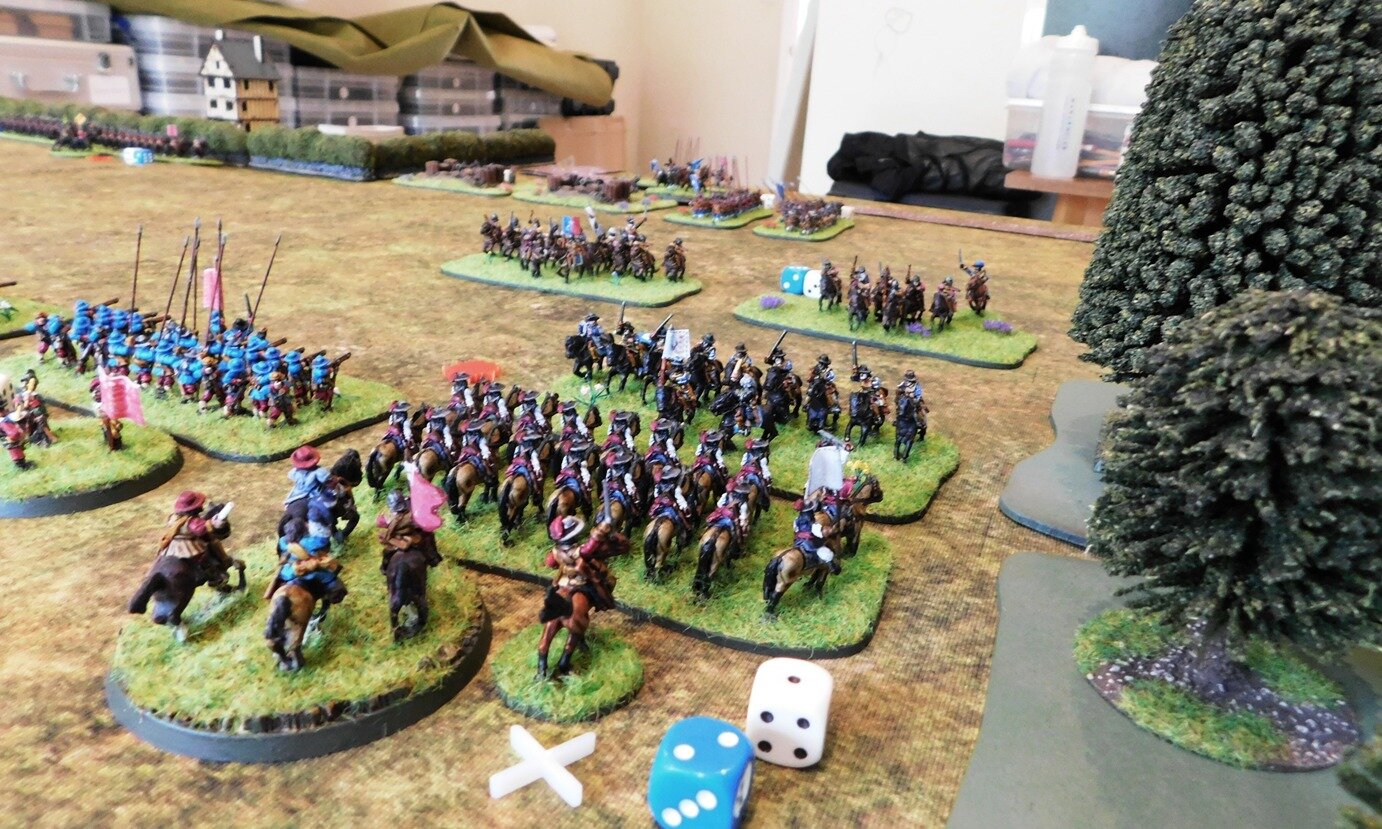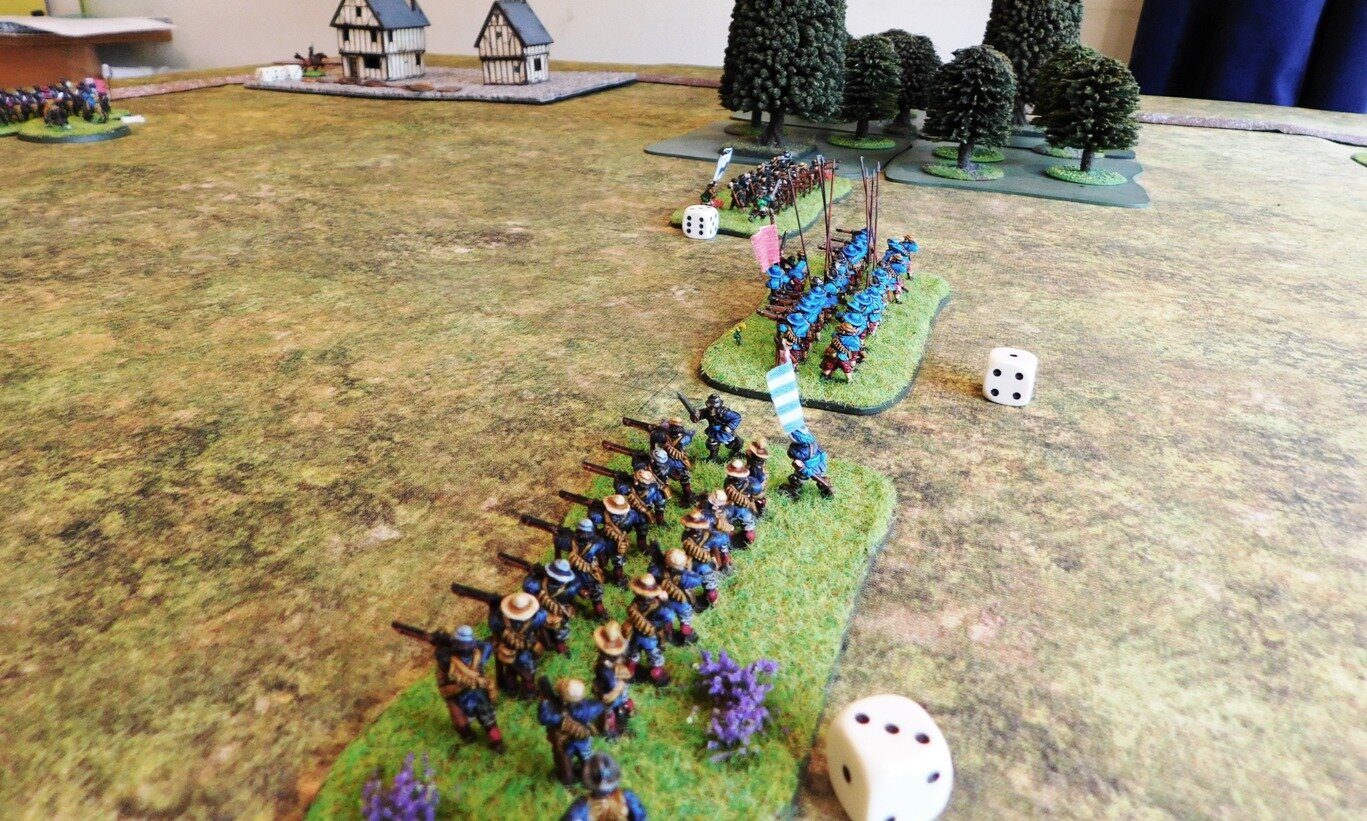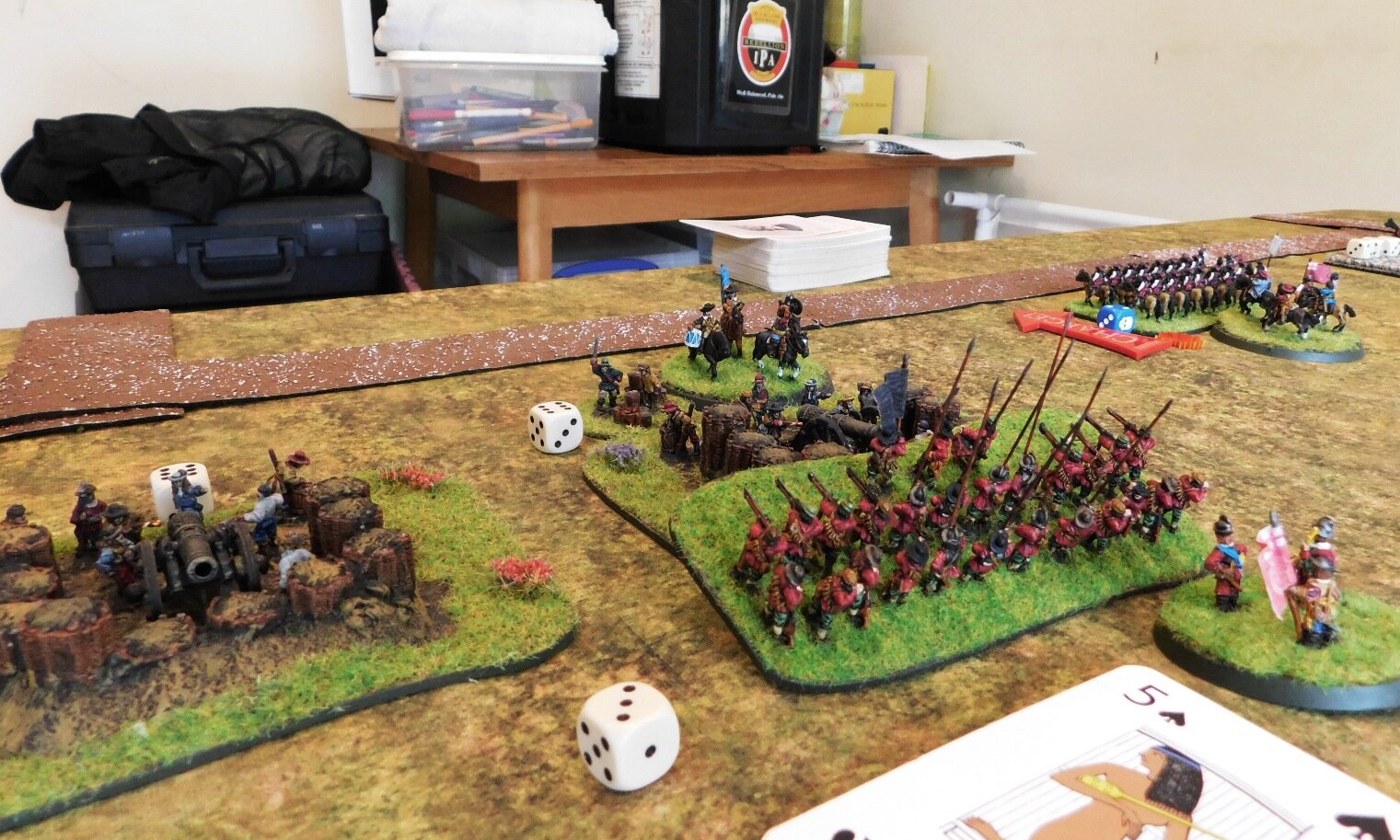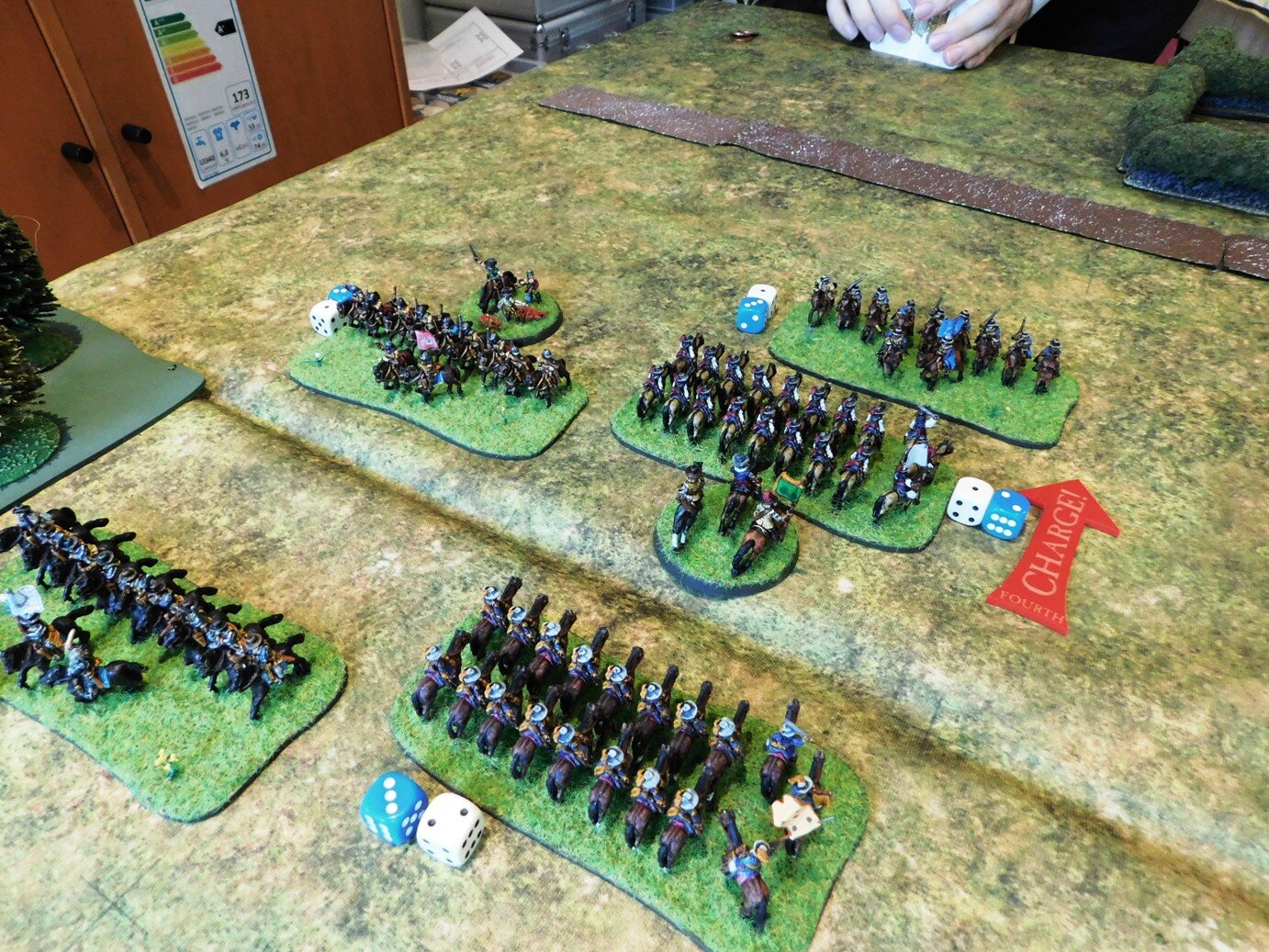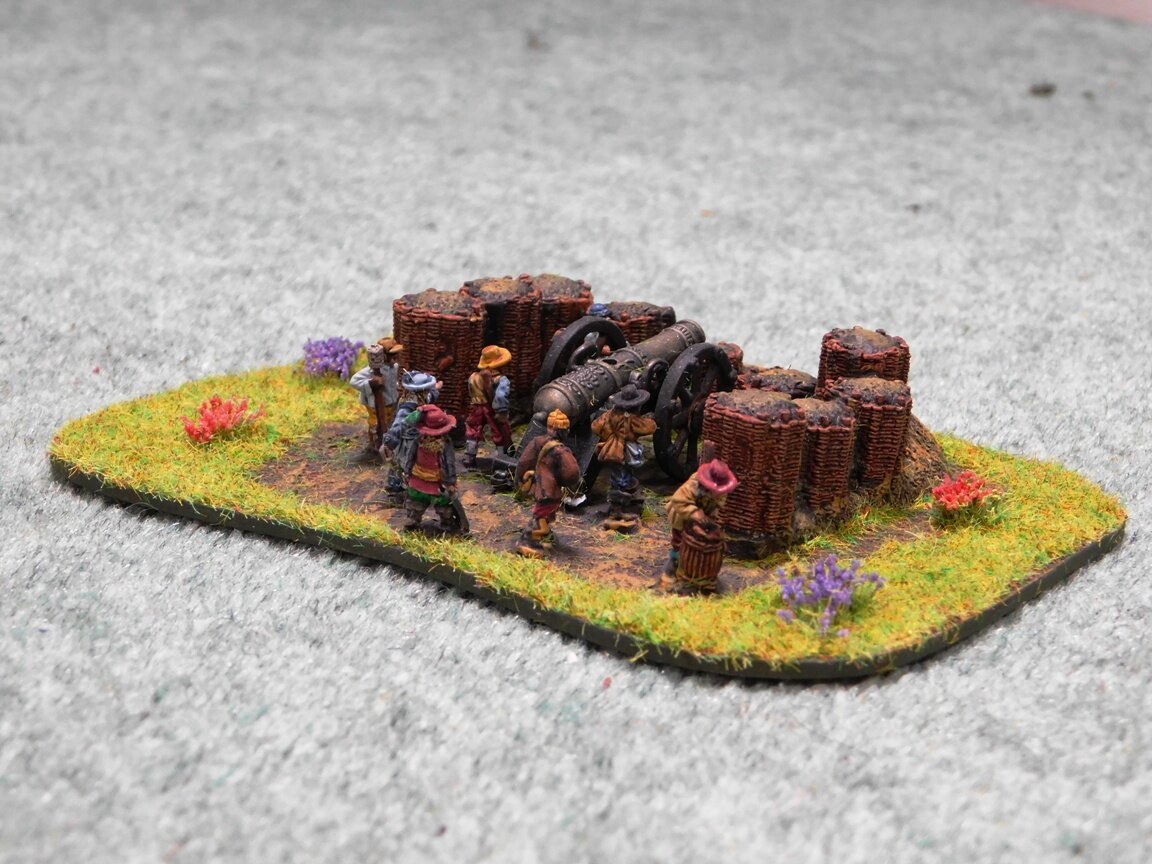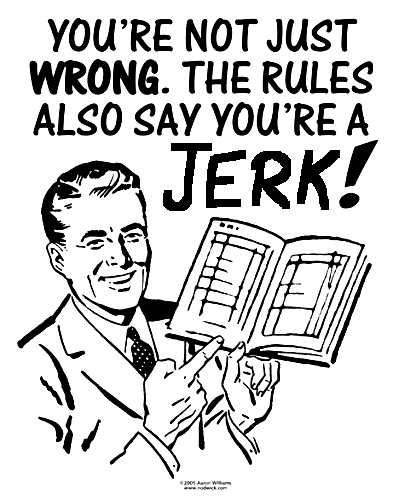FK&P AAR: McCleod's Odyssey
/With my Rabble bases now painted, it was time to have go at scenario #10 from the Marlowe to Maidenhythe scenario pack: McCleod’s Odyssey.
In summary, the Scots who have featured as mercenaries in previous scenarios in the campaign are making their way home, but run into a force of Militia backed up by locals who want a word, shall we say, about the Scots’ behaviour as they went south.
It’s a standard encounter battle, with both sides directed to get stuck in as soon as possible.
The Scots, to the right, approach the village of the Gappe, held by the Militia and local folk
Deployment
The Scots placed their Highlanders on the left, opposite the rough and more enclosed terrain, their artillery and pike only units in the centre, and their standard battalia on the right. In reserve were their horse: a unit of poorly mounted pistoliers and a unit of poorly mounted lancers.
The Militia occupied the Gappe: infantry battalia in the centre, Swedish horse on the left and Dutch horse on the right. The three units of Rabble were on the far right, facing the Highlanders.
The Battle Begins
My plan was for my Highlanders to deal with the Rabble then sweep in to the Gappe from the flank. Bevan, my opponent, however, was up to all my tricks, and moved his Dutch horse to the right of the village, threatening the Highlanders’ flanks.
At the same time, the enemy Swedish horse moved out to their left. Not wanting my day ruined by the sudden arrival of cavalry on my right flank, I moved the Scots horse to counter: you can see them top left in the picture below.
Finally, my main infantry units moved forward…but my pike-armed battalia decided that they had walked far enough and just about refused to move.
Everything then seemed to happen at once.
On the left, two of my Highlander units were charged, as predicted, by the enemy Dutch horse, with both surviving the charge but becoming disordered in the process. I struck back and, incredibly, one unit of Dutch horse was double-disordered and had their Colonel wounded.
This was a great opportunity for a game-winning opening clash but, try as I might, I just couldn’t find a way to break the enemy horse and would now have to suffer the fate of all loose infantry attacked by large numbers of close formation horse!
Meanwhile, on the other flank, my horse and the enemy Swedish horse now faced each across one of the fields outside the village.
A victory for the Scottish horse, despite their manky mounts, but now they would Pursue their fleeing enemies from the field unless they stopped and rallied.
As these actions were happening on the flanks, my centre moved forward, me seeking an advantage by overlapping his left wing.
Mid Game
After the initial clash, I had won the right flank but was about to lose my left flank: the Highlanders were outnumbered 5:3 and could do nothing except take the charges from the Dutch horse.
One unit of Highlanders crumbled and fled, leaving a gap through which one unit of Dutch horse could pour. The enemy horse pursued for a bit, then rallied and headed into the big open space behind my centre. All that was in front of them was my guns, and although I managed to disorder the horse and wound the General with them with some startlingly accurate artillery fire, I was soon overrun.
Meanwhile, another of my Highlander units had gone, leaving the third in a dire situation.
Meanwhile, the two centres were fighting it out but, despite having superior numbers, a bit of bad luck meant I was losing.
If my cavalry didn’t return soon, I was going to be out of victory medals!
End Game
The left side of my centre was now beginning to crumble as well as his successful right wing started to curl in on me.
We were both down to a handful of victory medals, with enough units at double-disorder to settle the matter one way or the other if they broke.
My pistolier horse quite their pursuit and crashed into the left side of the enemy battalia in the right hand building. That pike unit broke, and the advantage was momentarily mine, but then my pike-only unit in the centre of the field (bottom left in the pic above) went, and we were evens again.
It was down to whoever lost the next unit and, finally, my last unit of Highlanders could take no more: they had been fighting front and flank for three turns now, somehow hanging on…and that was the last of my coins gone!
The day was lost: but it had been an epic battle that, once again, had come down to a could-go-either-way climax.
Afterword
My big mistake was to let my Highlanders get into combat with Dutch horse: I should have retreated to cover if I could. That would have meant I went into the more successful clashes on the right and centre without having haemorrhaged victory coins on the left.
A great game, however, whatever the result.


